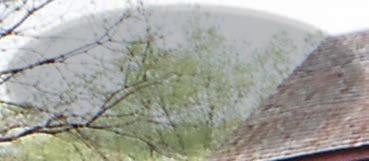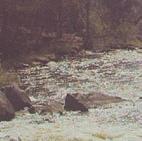














































































































































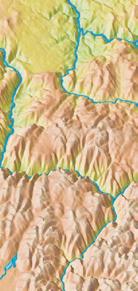





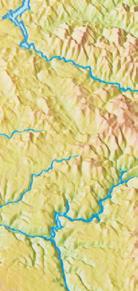



































Explorers Lewis & Clark followed an epic course along the Columbia and Snake Rivers. Discover these iconic rivers for yourself aboard the elegant paddlewheeler, Queen of the West. From the high desert canyons of the interior to the dense mountain forests of the Pacific Coast, the dynamic landscape is filled with history and natural beauty. This fabulous 8-day cruise features the finest cuisine, regional entertainment, and exciting land excursions. Call today for information about this incredible experience.



A s that little banner just under our Yankee cover logo proclaims, we think of ourselves, proudly, as “ N ew England’s M agazine.”
To celebrate this special 80th-anniversary issue, we’re shining a bright light on the extraordinary gifts that N ew England has given to A merica. For eight decades now, Yankee has been the caretaker of those gifts and of the tradition they represent. The pages that follow will highlight 80 of the gifts we treasure most, arranged without regard to rank or chronology. For additional content and more information on each gift, be sure to turn to our “Resources” section, pp. 156–158.
PAGE 90
America’s last wooden whaleship, the Charles W. Morgan , sets sail once again. Plus: Stories of Civil War heroism and tragedy, and one man’s determined mission to save New England’s covered bridges. # 38–44
PAGE 100
Photographer Richard Brown captures the brilliant hues of a New England autumn. Plus: Percival Baxter’s extraordinary gift to the people of Maine, and the biggest “braggin’ wind” in the world. # 45–48

PAGE 104
Yankee ingenuity has produced hundreds of innovations that have transformed our lives. Plus: New England’s environmental and civil-rights leadership, literary genius, sports heroes, and more. # 49–79
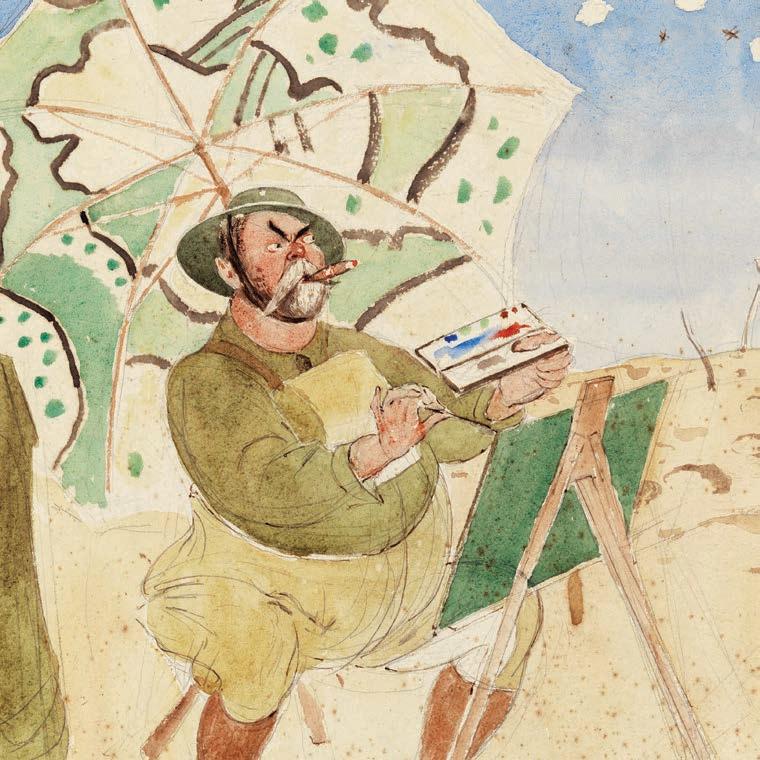
PAGE 38
7 Wonders of Fall # 13–19
Why we love Jenne Farm, the Conway Scenic Railroad, “the Kanc,” the Northeast Kingdom, Vermont’s Route 100, apple orchards, and cranberry bogs.
PAGE 54
The Cape Cod House # 20
Early New Englanders invented the classic Cape out of necessity, but its charm and practicality made it a favorite American style. by Bruce Irving
PAGE 60
Home & Garden Sampler # 21–24
Why we love wicker, flea markets, Tupperware—and the magnificent “library of trees” that is Harvard’s Arnold Arboretum.
PAGE 66
The Mother of Good Cooking # 25
Fannie Farmer’s Boston Cooking-School Cook Book created the modern recipe and changed forever the way Americans ate.
PAGE 72
A New England Food Sampler # 26–35
Why we love Toll House cookies, health food, gourmet ice cream, New England’s best seafood, and more. Plus: New England’s heirloom fruits and veggies, and Julia Child’s beloved Cambridge kitchen, now at the Smithsonian.
PAGE 82
Local Flavor # 36
Louis Lassen’s lunchtime brainstorm, the “hamburger sandwich,” made New Haven, Connecticut, famous for more than just pizza. by Amy Traverso
PAGE 84
37
Boston’s venerable Durgin–Park restaurant serves up a winning version of Indian pudding, the region’s most iconic dessert. by Aimee Seavey
PAGE 8
YANKEE ALL ACCESS
PAGE 10
DEAR YANKEE
PAGE 12
INSIDE YANKEE
PAGE 14
A MOUNTAIN OF A MAN
Yankee ’s founder, Robb Sagendorph # 1 by Judson D. Hale Sr.
PAGE 16
MARY’S FARM
The Mighty Glenwood # 2 by Edie Clark
PAGE 18
LIFE IN THE KINGDOM
Eating the Sun # 3 by Ben Hewitt
PAGE 22
FIRST LIGHT
The country store, Yankee humor, Beacon Hill, Revolutionary firebrands, Frisbee frolics, fall photos, writers’ homes, Nubble Light, “Fly Rod” Crosby # 4–12
PAGE 140
HOUSE FOR SALE
The Yankee Moseyer visits a five-barn New Hampshire farmstead. # 80
PAGE 146
EVENTS CALENDAR
PAGE 152
CORRECTIONS
PAGE 156
RESOURCES
PAGE 168
JUDSON D. HALE SR.
Yankee ’s Yankee # 81 by Mel Allen
DIGITAL CONTENT! For quick and easy access, just download our free Yankee Connect app to your smartphone. Then look for this symbol in our pages, launch the app, and scan the marked photos to get videos, slide shows, or audio files.






1121 Main St., P.O. Box 520, Dublin, NH 03444. 603-563-8111; editor@YankeeMagazine.com
PUBLISHER Brook Holmberg
EDITORIAL
E DITOR Mel Allen
ART DIRECTOR Lori Pedrick
MANAGING EDITOR Eileen T. Terrill
SENIOR LIFESTYLE EDITOR Amy Traverso
SENIOR EDITOR Ian Aldrich
PHOTO E DITOR Heather Marcus
A SSOCIATE E DITORS Joe Bills, Aimee Seavey INTERNS Bethany Ann Bourgault, Theresa Shea
C ONTRIBUTING E DITORS Annie Card, Edie Clark, Annie Graves, Ben Hewitt, Kim Knox Beckius, Justin Shatwell, Ken Sheldon, Julia Shipley
CONTRIBUTING PHOTOGRAPHERS Julie Bidwell, Kindra Clineff, Sara Gray, Corey Hendrickson, Joe Keller, Matt Kalinowski, Joel Laino, Jarrod McCabe, Michael Piazza, Heath Robbins, Kristin Teig, Carl Tremblay
PRODUCTION
PRODUCTION D IRECTORS David Ziarnowski, Susan Gross
SENIOR PRODUCTION ARTISTS Jennifer Freeman, Rachel Kipka
DIG ITAL
VICE PRESIDENT/PRODUCTION & NEW MEDIA Paul Belliveau Jr.
DIGITAL E DITOR Brenda Darroch
NEW MEDIA DESIGNERS Lou Eastman, Amy O’Brien
PROGRAMMING Reinvented Inc.
ADVERTISING : PRINT/DIG ITAL
VICE PRESIDENT/SALES Judson D. Hale Jr. (JDH@yankeepub.com)
SALES IN NEW ENGLAND
TRAVEL, NORTH (NH North, VT, ME, NY) Kelly Moores (KellyM@yankeepub.com)
TRAVEL, SOUTH (NH South, CT, RI, MA) Dean DeLuca (DeanD@yankeepub.com)
DIRECT RESPONSE Steven Hall (SteveH@yankeepub.com)
CLASSIFIED Bernie Gallagher, 203-263-7171 (classified@yankeepub.com)
SALES OUTSIDE NEW ENGLAND
NATIONAL Susan Lyman, 646-221-4169 (susan@selmarsolutions.com)
C ANADA Alex Kinninmont, Françoise Chalifour, Cynthia Jollymore, 416-363-1388
AD COORDINATOR Janet Grant
MARKETING
CONSUMER
M ANAGERS Kate McPherson, Kathleen Rowe ASSOCIATE Kirsten O’Connell
ADVERTISING
DIRECTOR Joely Fanning
ASSOCIATE Valerie Lithgow
COORDINATOR Christine Anderson
PUBLIC RELATIONS
BRAND MAR K ETING DIREC T OR Kate Hathaway Weeks
NEWSSTAND
VICE PRESIDENT Sherin Pierce
DIRECT SALES MAR K ETING MANAGER Stacey Korpi
SALES ASSOCIATE Janice Edson
YANKEE PUBLISHING I NC.
established 1935
PRESIDENT Jamie Trowbridge
EDITOR-IN-CHIEF Judson D. Hale Sr.
VICE PRESIDENTS Paul Belliveau Jr., Jody Bugbee, Judson D. Hale Jr., Brook Holmberg, Sherin Pierce
CHIEF FINANCIAL OFFICER Ken Kraft
CORPORATE STAFF Mike Caron, Linda Clukay, Sandra Lepple, Nancy Pfuntner, Bill Price, Christine Tourgee
BOARD OF DIRECTORS
CHAIRMAN Judson D. Hale Sr.
VICE CHAIRMAN Tom Putnam
DIRECTORS Andrew Clurman, H. Hansell Germond, Daniel Hale, Judson D. Hale Jr., Joel Toner, Cor Trowbridge, Jamie Trowbridge
FOUNDERS
ROBB & BEAT RIX SAGENDORPH
Printed in the U.S.A. at Quad Graphics
SUBSCRIPTION SERVICES: To change your address, subscribe, give a gift, renew, or pay online: YankeeMagazine.com/subs
Yankee Magazine Subscriptions, PO Box 422446, Palm Coast, FL 32142-02446; 800-288-4284
ADVERTISTING RATES & INFORMATION: 800-736-1100 x149; YankeeMagazine.com/adinfo
Our region includes miles of pristine beaches along the Atlantic – many with small-time charm, magical ocean views, savory cuisine, unique boutiques, and lively entertainment. Miles of forests, wildlife preserves and conservation areas offer unspoiled nature walks and hiking trails. Paddling by canoe or kayak through scenic inland waterways that flow directly into the Atlantic Ocean may charm you, or perhaps 17 public golf courses will challenge you and South County’s rich history will surely come alive at our 15 museums.







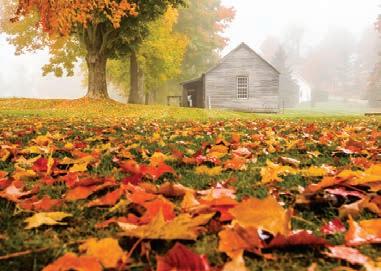



































Our August 1973 issue contains a letter regarding the supposed dearth of sentiment in Maine men. Apparently, this applies to all New Englanders:
My New Englander is of doubtfuller-than-Maine origin, being he’s from Massachusetts, and he nearly choked on the marriage vows that he recited, being’s they contained the word love . “You look all right,” is the highest compliment I ever get, and once when I bawled (all right, so I was younger then) and said he never said he loved me, he muttered darkly, “I show it in other ways,” and went back to whittling on his woodcarving.
There is some evidence that he may be mellowing, however. One night last winter he got out of bed to go to the bathroom, and I think he must have thought I was asleep, which I almost was, being barely aware he was up, because when he came back to bed he said out loud, “I love you!” It startled me awake, so’s I got up and wrote down the date and time (1:10 a.m.), but I’d appreciate if you’d omit to print my name and address if you print this letter, as I’d hate for his relatives back in Massachusetts to get the idea he’s become maudlin.
As an avid Yankee reader (and New Hampshire native), I must make haste to correct an inaccuracy in Jane and Michael Stern’s “Traveler’s Journal” in the March 1982 issue!
Is it because fame is fleeting? Is it because I moved to California? Or is it because I lost 250 pounds and with it my chances of repeating my recordbreaking eating marathons? Whatever the case, the so-called record that pro
wrestler André the Giant supposedly set of eating 40 lobsters at Custy’s restaurant in North Kingstown, Rhode Island, is a mere two-thirds of my record: a record that hung proudly in Custy’s until their unfortunate fire last year. André’s socalled record was an average day for me, and my record was 61 lobsters!
If I go back to Custy’s it will be a moderate visit “for old time’s sake.” Gone will be the dozens of lobster shells left behind, but I do ask in the interest of journalistic accuracy, and in memory of Tom Shovan, who broke eating records coast to coast and sent buffet proprietors across New England into shudders and cold sweats for 40 years, that Yankee print a correction to this gross misstatement, which would lead the naïve reader to believe that a mere 40 lobsters are enough to satisfy a truly voracious appetite.
Tom Sullivan Woodland Hills, California 1982Yankee is well known for its lasting appeal. It was recently brought to my attention just how lasting some issues can be. In January 1980, our old farmhouse was featured in “House for Sale.” When the issue hit the streets, we received more than 200 phone calls and letters. The house was sold, and since that time we’ve moved to two other homes in the same town. We’ve kept the same phone number.
Imagine my surprise when I recently received a phone call from a woman asking if the house was still on the market. She had seen it in her doctor’s waiting room and hadn’t noticed that the magazine was 15 years old. She was so disappointed that I wished I still had the house to sell her.
Virginia Feeney Sunapee, New HampshireApril
1995H AN D SOME H OME , EQU I P T FARM—110 acres, about 55 miles from Boston; 190 fruit trees, 50 acres field, on improved road: splendid 2-story 10-room Colonial, electricity, marvelous views; good barn, 4-car garage; catalog price $5000 cut to $4400, part down, including 13 cows, heifers, bull, machinery, 1½-ton truck, milk route, etc. Here is grand value. Free 100-page catalog. Strout Realty, 810-A P Old South Bldg., Boston, Mass.
May 1939
85 acres. 1000 cords wood. Near large town. Good markets. New house, barn for 18 head, other buildings. Orchard, $2650. Terms. 4 acres. On lake. Good buildings. $2250. Easy terms. A.H. Knight, West Warwick, R.I.
May 1939
Schoolkids frown as if to say, ‘So how did summer slip away?’
Ecstatic mothers click their heels: ‘So this is how vacation feels!’
— D.A.W.

















illions of words reside in Yankee ’s library, across the hall from where I sit—80 years of bound magazines crammed onto the shelves—and each sentence, each story, is different from any other, except for this: Every story connects in some way to the words Robb Sagendorph, Yankee ’s founder, wrote inside the cover of that first issue in September 1935. “ Yankee is born today,” he wrote, as if his magazine were flesh-and-blood. “His destiny is the expression and perhaps, indirectly, the preservation of that great culture in which every Yankee was born and by which every real Yank must live … Give him your care, your interest, your heart …”
When Sagendorph began his magazine, he felt that New England was losing its identity. He feared that the modern world would overwhelm its towns and villages and a way of life that remained apart from anywhere else. The world
of 1935 around him was electric with change and tension: America was still gripped by a Depression with 20 percent unemployment; Europe was feeling the prophetic tremors of Hitler’s and Mussolini’s reigns of terror. Whatever lay ahead for New England, Sagendorph hoped that his new magazine could be a part of it and could capture the feel and mood and character of a region so deeply connected to America’s roots.
Now, 80 years later, the towns and villages of New England still resist being folded into the endless indistinguishable American landscape of strip malls and superhighways. Historic preservationists and nature conservancies have saved buildings and landscapes so that you can wander city streets and rural hillsides and see with the eyes of two centuries past. New England still possesses a singular culture, one that is still connected to its roots. And Yankee still searches for the stories that rise from those roots.
Inside these pages are stories about the places and the people who have lived here and how they’ve inspired us, no matter where we come from. We call these places and people and deeds “gifts” because they’ve made our lives better, more interesting; they’ve made us want to be better ourselves. We could have filled 20 special issues with a different set of gifts. These are not the only gifts; we chose these particular ones because we liked the way they blended together to show the depth and breadth of New England’s reach into American life.
Our collection is a mixture of freshly brewed stories and adapted excerpts from Yankee favorites along the way. They’re not arranged in order of importance; we don’t possess the wisdom needed to judge where Julia Child or clam chowder ranks in comparison with the Cape Cod house or the grace of a single E. B. White paragraph. I know that many of you will wish that a favorite New England person or place or food or moment in history were included here, but the choices were so many and the pages, alas, too few to hold all that we wished. But write us, via old-fashioned mail or at editors@yankeepub.com. You can also get our ear on Facebook. Whenever you let us know what you think, you give us the gift that all editors seek: an attentive, caring reader.
Mel Allen, Editor editor@YankeeMagazine.com
THE
Dear Reader,

The drawing you see above is called For Now and Ever It is completely composed of dots of ink. After writing the poem, I worked with a quill pen and placed thousands of these dots, one at a time, to create this gift in honor of the the love of two of my dearest friends.
Now, I have decided to offer For Now and Ever to those who have known and value its sentiment as well. Each litho is numbered and signed by hand and precisely captures the detail of the drawing. As an anniversary, wedding, or Valentine’s gift for your husband or wife, or for a special couple within your circle of friends, I believe you will find it most appropriate.
Measuring 14" by 16", it is available either fully-framed in a subtle copper tone with hand-cut double mats of pewter and rust at $135*, or in the mats alone at $95*. Please add $14.50 for insured shipping and packaging. Your satisfaction is completely guaranteed.

My best wishes are with you.
The Art of Robert Sexton • P.O. Box 581 • Rutherford, CA 94573
All major credit cards are welcomed. Phone (415) 989-1630 between 10 a.m.-6 P.M. PST, Monday through Saturday. Checks are also accepted.
Please allow up to 2 weeks for delivery.
*California residents- please include 8.0% tax
Please visit my Web site at www.robertsexton.com
“There is no moment of my life when you are not a part of me; you hold my heart; you guard my soul; you guide my dreams so tenderly. And if my will might be done, and all I long for could come true, with perfect joy I would choose to share eternity with you.”
 BY JUDSON D. HALE SR.
BY JUDSON D. HALE SR.
uring every Fourth of July, my mind turns to Robb Sagendorph, founder of Yankee Magazine, who died 45 years ago, on July 4, 1970, but whose presence I still feel within the pages of every issue, including this one. He was my first boss and mentor—and, oh yes, he was my uncle, too. That long-ago July Fourth was a very sad day, but my most vivid memories of him are happy and wonderful to recall. Take, for instance, my very first morning …
“Look at this, Jud,” Robb said as I walked for the first time into the room on the second floor of the red-clapboard building in Dublin, New Hampshire, where I’m still to be found today, 57 years later. He was holding up a small, extremely old almanac. His battered old desk was in one corner of the room. Mine, newer and bigger, was in another, and there were three other people. My presence that first morning increased the Yankee editorial and advertising staff by 20 percent.
“It’s an original copy of the 1793 Old Farmer’s Almanac ,” he said, carefully leafing through the delicate, brittle pages for me to see. His hands, I noticed, were extraordinarily large, like the rest of him. He wore a bright-red bow tie and red suspenders; the sleeves of his white Brooks Brothers shirt were rolled back to the midway point of his long forearms, and a lighted cigarette was hanging from his mouth. Most noticeable to me, however, were the deeply etched lines on his face. They were placed perfectly, as if by a sculptor. Over subsequent years, people often told me they thought Robb Sagendorph looked like New Hampshire’s Old Man of the Mountain.
“Very valuable,” he muttered while continuing to carefully turn over the pages of the 1793 almanac. (Robb had acquired the title from Little, Brown in 1939, four years after starting Yankee.) “Probably fewer than a dozen of these exist, and I have three.”
I noticed the ash on his cigarette was becoming long. As time went on over our subsequent 12 years together, I grew familiar enough with him to often cry out, “Robb, your cigarette!” and he’d search for an ashtray, during which time the long ash usually fell off anyway. But on that first morning, meeting him for only the third or fourth time in my life, I couldn’t do that.
“Life holds more meaning,” he went on, “when the past ties into the present,” and with that he picked up a copy of the brand-new edition of The Old Farmer’s Almanac lying on his desk and held it up next to the old one. “When that happens, one gains the assurance the present will tie into the future,” he said, looking directly up at me with a smile made somewhat crooked by the continued presence of the cigarette.
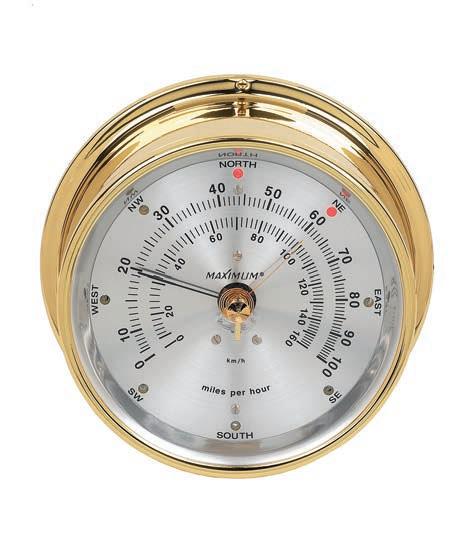
The smile dislodged not only the long ash but the lighted head as well. I watched in some alarm as it fell directly onto the 1793 almanac and began smoking its way through the first few pages. My expression alerted him to the crisis, and in the next instant we were both galvanized into action, blotting, slapping, and finally blowing away burnt pieces of almanac from his desk.

“Perhaps not quite as valuable now, Robb,” I said laughingly, conscious that I had omitted the word “Uncle” for the first time. He laughed, too. My mother and others had warned me that he was stern, serious, imposing, and, as they put it, “difficult.” Yet in less than five minutes I felt close to this complex mountain of a man. It was the beginning of a bond between us that would outlive him by many years.
He’s been gone for 45 years. But I can vividly picture him perusing this 80thanniversary edition of his beloved Yankee Magazine, his enduring gift to us all. No doubt he’d have a few details to criticize—he wasn’t always easy to please. But I know he’d be proud. He’d have that smile on his face that I remember so well, and, sure, in my mind there’d be a lighted cigarette dangling from his lips.


Some things never change.
So thanks, Robb. Thanks and ever thanks.
NUMBER 2

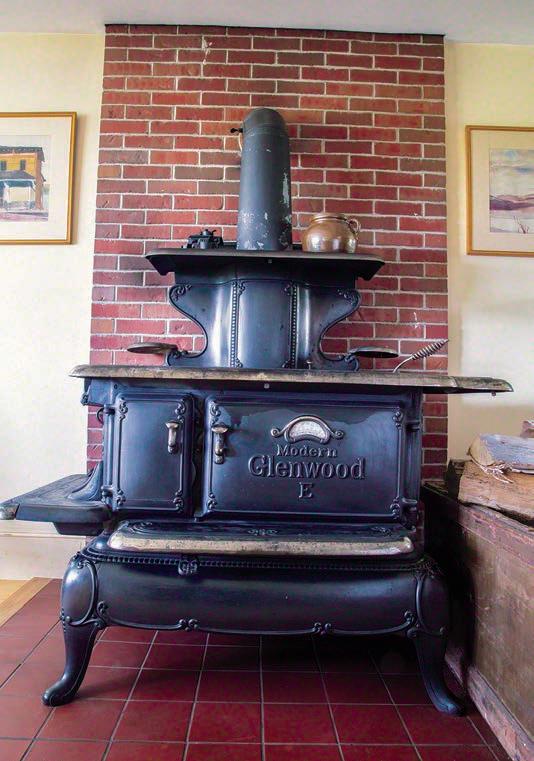 BY EDIE CLARK
BY EDIE CLARK
hat was to become my stove was jammed into a freight car on the sidelines of the old train station in Littleton, Massachusetts. The stoves were pushed together willy-nilly, wherever space could be found. From this amazing jumble, Dave Erickson urged me to select one that most appealed; he would extract it and restore it to its former splendor. Outside, among the grasses, dozens more, mostly in pieces, awaited rescue. In the darkness of that freight car, I found what I was looking for: a diamond in the rough, no rust, the stylish legs and warming shelf still smooth and even a little shiny. And, like almost all the stoves in this vast yard, it had a story: It had belonged to an old lady in Fitchburg who hadn’t used it to burn wood, but instead had run gas pipes through it. As a result, the stove was in remarkably good condition. Dave reminisced a bit about the day he took it out of her kitchen. Then as now, no one can rhapsodize about a cookstove like Dave, who has kept his love affair with these beauties for some 35 years. He’s been an evangelist for old cookstoves almost as long as I.
The stove I chose was to replace one that my first husband and I had bought 10 years earlier from a hardware store in Brattleboro, Vermont—an antique sold “as is.” A Glenwood C manufactured in 1890 , it was like new. That stove became the heart of our house and, most painfully, had to be sold with the house when we divorced some years later. A multitasker, the Glenwood burned wood, so it heated the house and its oven baked our bread and the stovetop cooked or heated just about anything. The oven door proclaimed Glenwood C in ornate, embossed lettering, and in the center of the name was the thermometer gauge for the oven. Beneath the oven door was a little pedal (beautifully decorated as well); if I pressed it with my foot, the door swung open so that I could easily put the turkey or whatever into the oven, not needing three hands. The various warming shelves not only kept dishes hot but at different temperatures: some warmed just a little, others almost cooked. Gradually, very gradually, I learned that I could do many things on this stove that I couldn’t do on a modern stove. I could even grill
steaks. That stove turned me into a believer, a believer in the Glenwood, a believer in wood heat and wood cooking, and a believer in form and function, which these stoves displayed in spades. Now I needed a replacement, and I turned to stove restorer Dave Erickson in my search.
Almost everything I know about Glenwood stoves came to me first through trial-and-error but then through Dave.
From him, I learned about dampers and draft slides, finials and footrests, towel racks and trivets, nickel plating, scrollwork, and side cars. I’ve listened to him sermonize about the brilliance of butter warmers, clock shrines, and simmer burners and explain the physics of draft and the intricate and ingenious path the heat takes around the oven on its way up the chimney.
The one thing he’s never told me is that the Glenwood was America’s first home appliance. Stoves like mine came out of the massive fiery furnaces of the foundries of Taunton, Massachusetts, then known as “Stove City.” The Glenwood quickly replaced the hearth as a way to cook, distinguished by its ability to heat and bake with far more precision than an open fire.
Literally thousands of other foundries turned out cookstoves of all varieties in that booming era between the 1850s and World War I (when iron became more valuable for waging war than for cooking dinner). The Glenwood was simply the first and, in the opinion of many, including Dave, the best. “They’re the most durable, most reliable, and most beautiful, and they have an indestructible design,” he says. “They’re the Cadillac, the Eldorado, of stoves.”
The stove that Dave pulled out of that freight car back in the 1980s has followed me through the many phases of my life and now sits in my kitchen here at Mary’s Farm, facing another stove, also a Glenwood. That one cooks with gas and is clad in green- and- cream enamel, the name Glenwood also proudly shown on the oven door. The two stoves, one from the 19th century and the other from the 20th, rest on their graceful legs and catlike feet. Facing each other as they do, it sometimes seems as though they’re speaking to each other, and if they are, it’s a conversation I would love to hear.
Edie Clark is the author of As Simple As That: Collected Essays and What There Was Not to Tell: A Story of Love and War. Order your copies, as well as Edie’s other works, at: edieclark.com
Our 1750s style cape home building system boasts beautiful timbered ceilings, a center chimney, wide board floors and custom, handmade features in the convenience and efficiency of a new home.


Our model is open: Mon-Fri 8-4:30, Sat 9-3
NUMBER 3
n any four-season climate, on any farm, September and October are the months when the truth becomes known. If the farm is one that relies on the harvest for income, the truth is expressed in the infallible language of numbers, of profit and loss. If the farm is like ours, instead relying on the harvest to feed its inhabitants, the truth is expressed in the slow accumulation of burlap bags filled with the root crops that will see us through the winter.
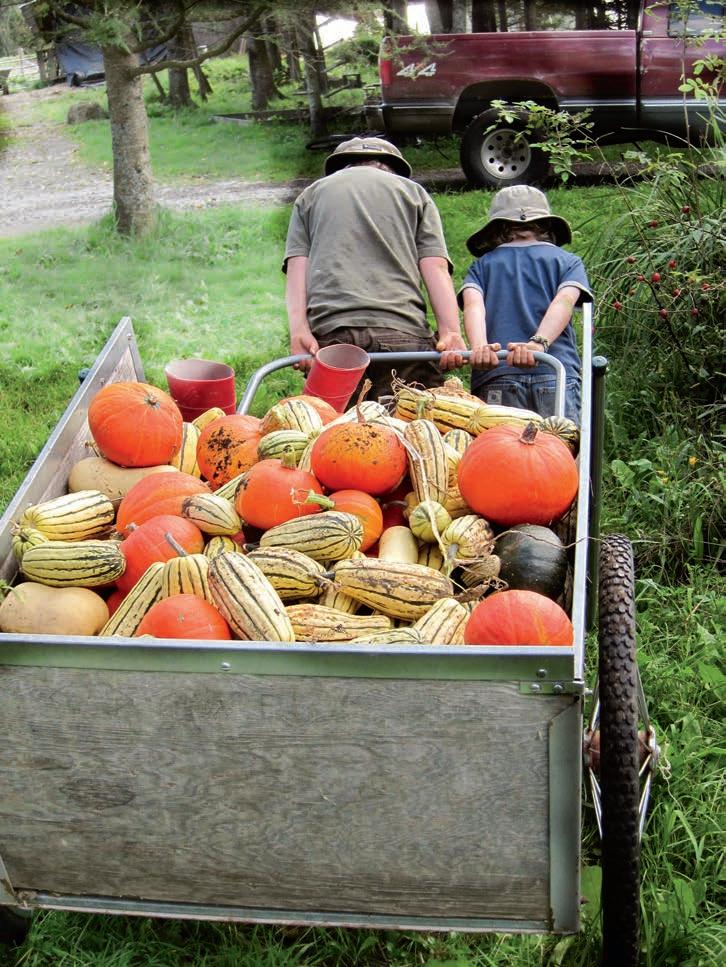
First, we pull the onions. It’s been a perfect onion year—they’re huge, leviathan things, almost a parody of themselves. We spread them on the porch to dry atop screened frames; after a few days, the outer skin begins to peel and flake, and gossamer slips of copper-colored onionskin drift into the house on the breeze.
Then we dig the potatoes, row after row of them, nine rows in total. Everyone loves digging potatoes—in part because it’s not difficult work, but mostly because no matter how many years you’ve dug potatoes, it’s impossible not to feel a small sense of giddy discovery every time your hands find those subterranean orbs, smooth and cool under the soil.
The potatoes go into bags, and we carry the bags to the root cellar. Some of the bags are so heavy I can lift them only a few inches off the ground, and it feels as though my shoulders might be pulled from their sockets by the weight of all that starch. Every few steps, I pause to rest, the lumpy bag at my feet.
The beets are next out of the ground: red ones, gold ones. Too many, if you ask
me; I’m not much of a beet guy. Then we bring in the squash, the sun-yellow ‘Delicata’ and the beige-orange ‘But ternut’; from a distance, their whimsi cal shapes remind me of ukuleles.
Down in the woods, the boys and I pick the last flush of chanterelle and hedgehog mushrooms. It’s been an amazing mushroom year—cool-ish, neither too wet nor too dry—and the season seems as though it will never end. “There are more over here! There are more over here! …” the boys keep calling, as they rush from one patch of mushrooms to another. They never pick even a fraction of what they find; as with the potatoes, they’re drawn to the discovery as much as to the mush rooms themselves, and I can’t blame them. I follow behind and fill my basket. Once that’s full, I remove my shirt, fold it into a pouch, and fill that. We’ll have fresh mushrooms for lunch and dinner; the rest we’ll dry in the greenhouse for long-term storage.

We slaughter two beef cattle—a shaggy Scottish Highland cow and a big Shorthorn/Jersey steer—and as always, I pause for a moment before pulling the trigger. There’s something that feels both profoundly right and entirely unfair about the act. The rightness, I suppose, is the ownership of the process, the acceptance of our role in the tangled and imperfect web of relationships between my family and the animals we depend on.
But I can’t quite get over the trust these creatures have placed in us, how when I approach them with the gun, the .410 slug chambered and ready to do its bidding, they look at me the same way they’ve looked at me for each of the past 700 or so mornings, probably expecting the back-of-head scratching they’ve become accustomed to. It’s my habit to stand with them for a minute or two each day, scratching them absentmindedly, looking out over our land and feeling
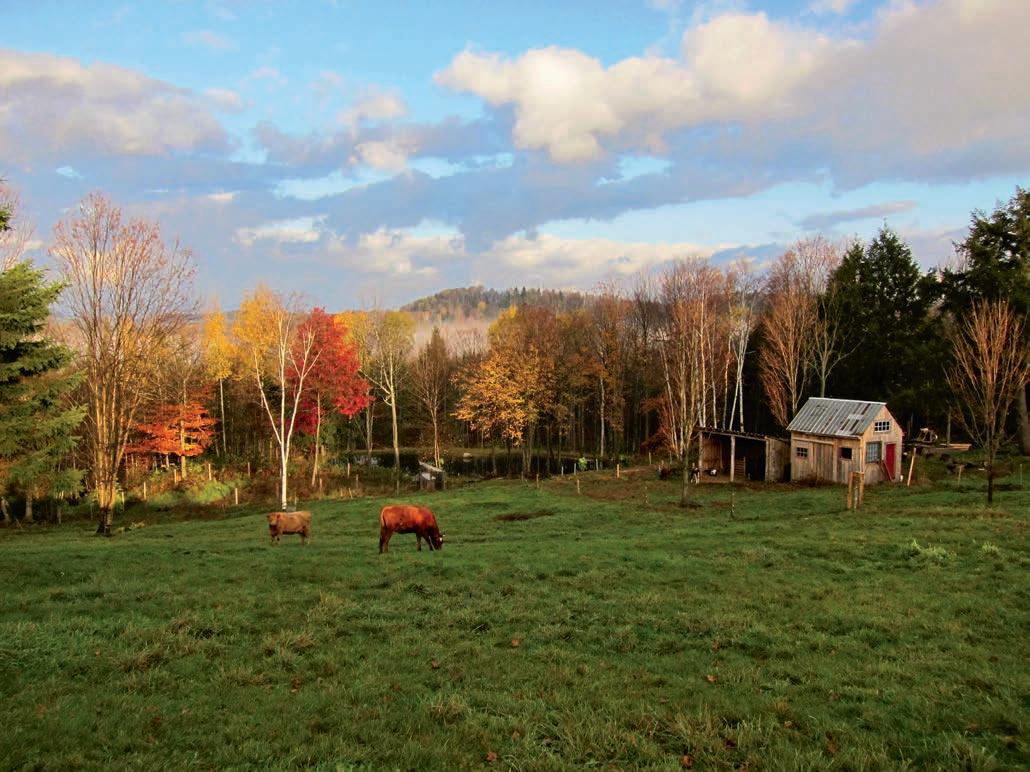 OPPOSITE : The Hewitt boys, Fin and Rye, haul the squash harvest home from the field. THIS PAGE ,
TOP : Beef cattle graze the farm’s rich grass.
OPPOSITE : The Hewitt boys, Fin and Rye, haul the squash harvest home from the field. THIS PAGE ,
TOP : Beef cattle graze the farm’s rich grass.
as though maybe I know my place in the world.
This morning is different, and when the animals are on the ground, bled out and stone still but for the occasional involuntary twitch of muscle fiber, I think of how it’s become popular to talk of “harvesting” animals for meat, and I think I don’t agree. The day before, we’d dug those potatoes, everyone on hands and
knees moving down the rows—except for Fin, who kept stopping to juggle potatoes, if dropping two for every one he caught can be called “juggling.” The bushel baskets filled fast, enough potatoes to last us all winter and into the spring. Enough potatoes to last us until the day we’ll wish we never have to eat another. We were happy filling those baskets, maybe even joyful. That felt like a harvest.
Taking the lives of animals feels different to me. It feels like something that shouldn’t be diminished by euphemism, however much we might want to soften the language of killing, perhaps to make it more palatable to those who disagree with our actions. Or perhaps we do it to make it more palatable to ourselves. But words can’t change the truth: You harvest a potato; you kill an animal.
Later that day, after we’ve skinned and gutted the beef and transported the sides 30 minutes north to a small custom meat-cutting shop where the
700-pound carcasses will be reduced to steaks and burgers and roasts, Penny and the boys take the silky, longhaired Highland hide down below the house and begin the arduous process of “fleshing.” Fleshing involves the vigorous scraping of the hide’s interior to remove the extraneous fat and flesh that would otherwise spoil. It’s the first step in turning the fresh hide into usable material; in this case, the boys want to make simple sandals called huaraches.
While Penny fleshes, Fin and Rye take axes and extract the brains from the animals’ skulls; the brains contain lecithin, which is essential to proper hide tanning. The boys will make a slurry of brain and water, which they’ll rub into the hide before drawing it tight in a simple frame and leaving it to dry.
Later, I place the heads into plastic buckets with holes drilled in them to allow the ingress and egress of flies,

We’re doing something that seems no less than magic: We’re eating the sun.
which will lay millions of eggs on the decomposing flesh. Our chickens will eat the resulting maggots. We’ll eat the eggs the chickens lay, and when they stop laying, we’ll eat the chickens themselves. If it’s true that you’re not merely what you eat but also what the animal that you eat eats, then we’ll eat the maggots that themselves ate the flesh of the cow we killed, the very same cow that fed itself for two years on the verdant grass of our pasture, grass that was full of the sugars produced by photosynthesis, essentially the conversion of sunlight into the energy stored in carbohydrates.
What I’m saying is: If it’s true that you’re not merely what you eat but also what the animal that you eat eats, then we’re doing something that seems no less than magic: We’re eating the sun.
Finally, the first fire in the cookstove, the return of the morning ritual: Crumple the newspaper, lay the kindling, strike the match; fill my stovetop coffeemaker while the kindling catches; then insert the first sticks of stovewood through the small enameled door. I pull a chair up close to the stove and rest my feet atop the warming iron, slowly moving them away from the firebox as the temperature increases.
In three minutes, the entire stove will be too hot for my feet. In seven or eight minutes, if the wood is dry and I’ve built the fire right, my coffee will begin to perk. In 20 minutes or maybe a little less, my family will begin to rise. In 30 minutes, it will be light enough to begin morning chores.
When people comment on our life, it’s often to say something about the work involved, the small discomforts of labor and weather. Or maybe about the minor material deprivations—the things we don’t own, either by choice (we don’t want them) or circumstance (we can’t afford them). Or, often it’s about the commitment, the simple fact that we can’t leave on a whim for longer than a few hours; we don’t take vacations, and there are no overnights to the city for a nice meal and a show.

When people say these things, I nod. I say, yes, all these things are true.
We’re often cold, hot, hungry, sore, tired, wet. There’s much that we don’t have. Can’t have. There are many places we don’t go. Can’t go. It’s true, all of it.
matters to me, how it’s worth forgoing anything I must forgo to enable and protect it. But I’m too self-conscious. I worry that they’ll think me smallminded, too easily amused, incurious.
Yet, every morning beginning in the fall of the year and lasting until mid-spring, I rise and kindle a fire in the cookstove. I set a chair before it and my coffee atop it. I place my feet on the warming iron until it becomes too warm, and then I cross my legs and wait for light to come into the sky. I drink my coffee.
There’s a part of me that wants to try and explain to these people how much the privilege of this small ritual
Just a rural fool living an insular life by his woodstove as the day comes to life around him.
So I just nod again, say yes again. And keep my mornings to myself.

The first fire in the cookstove, the return of the morning ritual: Crumple the newspaper, lay the kindling, strike the match, fill my stovetop coffeemaker while the kindling catches; then insert the first sticks of wood.

When the townspeople of Craftsbury, Vermont, hang out at the general store, the line blurs between “store” and “story,” a scenario little changed since America’s first country store opened in Adamsville, Rhode Island, in 1788.
ittle more than a century has passed since folks hitched horses off the porch and rambled into the Craftsbury General Store to pick up lamp wicks, a pinch of snuff, and perhaps a new cowhide whip. But scarcely 20 minutes have passed since Bruce Urie, whose ancestry goes back to some of the town’s first settlers, stopped into the store for two handy items still available since the beginning: a newspaper and a hunk of cheese. True, Bruce rode in via his Subaru Legacy, as opposed to dismounting from his best bay mare, but he crossed the exact same threshold—where the green paint is scuffed to bare wood—as his ancestors did at the store’s opening, circa 1855–1860, just before the dawn of the Lincoln administration.
This old store with a tiny bit of everything serves as the keystone of Craftsbury’s civic life. The town, founded in 1781, is a swerve off the beaten track, but boasts nice libraries, pretty churches, a pint-size college, and a handsome community lawn called “the Common.” Home to about 1,000 people (down from an all-time high of 1,400 back in the mid-1800s), the village is either an arduous horseback ride or a 30-minute car drive to the nearest major grocery store, movie theatre, or restaurant. Hence the General Store stands in for all these things—the original fulfillment center—where you can dash over to pick up a carton of eggs, a DVD, and a pulledpork pizza. And if you park yourself over by the coffeepot

any given morning, you’re sure to witness an unofficial roll call, as in comes Barb from the Academy, followed by Paula who works at the Flower Shop, then Sarah, who runs the Art House, then Jeremiah from the Jones farm, then Sam, our district representative in the state legislature, then Rick, who teaches agriculture at the college, then Norma, who’s delivering the newspapers … taking cup after cup.
Here, a talented eavesdropper can learn who bought the inn, what the crew at Pete’s Greens is harvesting, where your neighbor’s daughter has been accepted to college, when the Fire Department is having its BBQ, and why the guy you buy fenceposts from has decided to run for governor—all illustrating the kinship of “store” and “story.” Furthermore, over the course of a day, customers take part in what I call the “ecology of watchfulness,” an upshot of busybody-ism, as Emily asks after Margie’s health, and then Margie

asks about my chickens, and then I query Stuart about his plant nursery, and Stuart asks Emily about her renovation plans. “Some former elected official named Vance who currently lives in Derby forgot his earmuffs,” reads an entry in the store’s staff journal. “Never mind. He came back.”
Twenty years ago, Andy Humphrey, grandson of the store’s owners from 1972 to 1995, sought to understand the meaning of the store for its citizenry. The then-16-year-old spent a weekend at the store, keeping track of who came in and what they bought.
Over a weekend in March, he counted 83 customers “of all shapes and sizes,” and discovered their most common purchases were newspapers, milk, and candy. But he also counted the chips, cheese, bananas, ice cream, minced clams, and frozen apple turnovers that were rung up at the register, as well as sandpaper, paint rollers, videos, bags of ice—all prompting Andy to comment that “most people seemed to be there for only a few specific items or simply something to do to pass the time,” and that his grandparents had known almost every person who came in by name.
Yet what interested Andy most was the “talk of the town.” A day or two before, a local house had burned down and “two-thirds of everyone who came in had something to say about the fire.”
Two decades later, everything the former proprietors’ grandson observed is ongoing, and the store is like a classic play with new actors. Its current owner,
Emily Maclure, a 34-year-old Vermont native, plays the lead, and with her best supporting staff, Rene Orzolek and Marie Royer, they greet customers by name as they stop in: 83, 90, sometimes 200 shoppers a day, to pick up newspapers, milk, and candy. This past March, when another local house burned to the ground, instantaneously the store’s counter sported a plastic jug that began greening up with 1s, 5s, and 20s for the neighbor left with nothing but the clothes on his back.
Although Emily doesn’t carry hardware supplies, she’ll stock minced clams and frozen apple turnovers upon request. The General Store receives 15 big truck orders a week, in addition to 15 little deliveries (local bread, local milk, local eggs, and so on), and anyone perusing the inventory is bound to enjoy these rich juxtapositions, which in many ways mirror the mix of folks who
shuffle, swagger, or stride through the door. The soda-cap earrings made by a grade-schooler dangle next to a display of cigars, which are next to the baseball bats signed by our local retired Red Sox/ Expos pitcher. Shelves abound with organic Vermont-made baby food and Duncan Hines cake mix.
And it all has a story behind it: from the flannel shirt draped on a chair (left by the Sterling College work crew who volunteered to wash windows) to the heating vent decorated with a mural of local sights (like Pete’s red truck and Mark’s yellow house); from the new picnic table (came from Emily’s brother) to even the newest beer Emily is stocking.
The store’s 12th proprietor in 150 years decided to carry it just because of its name, a name that summarizes the feeling of this provident place: “A Tiny Beautiful Something.”











Cottage residents at Piper Shores enjoy spacious, private homes while realizing all the benefits of Maine’s first and only lifecare retirement community. Our active, engaged community combines affordable independent living, with guaranteed priority access to higher levels of on-site healthcare—all for a predictable monthly fee.

Call today for a complimentary luncheon cottage tour.




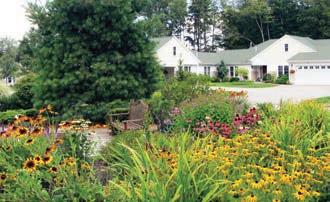

Two decades later, everything the former proprietors’ grandson observed is ongoing, and the store is like a classic play with new actors. Anyone perusing the inventory is bound to enjoy the juxtapositions, which mirror the mix of folks who come through the door.
“Humor can be dissected, as a frog can,” E. B. White famously said, “but the thing dies in the process.” Nevertheless, throwing caution to the wind (along with some lint picked off an old sweater), we examine here the contributions made to the field by Yankee humor, which was anaesthetized using extracts of Town Meeting reports prior to the procedure, and which we hope it will survive.
BY KEN SHELDONThe cornerstone of New England humor is the tightlipped Yankee farmer, invariably rocking on his porch or leaning against a fence as he matches wits (or half-wits) with a person from away. This reticent character is so popular, we even sent him to the White House once: Calvin Coolidge, who famously said, when a woman bet she could get him to say more than two words, “You lose.”
Closely related to the Taciturn Farmer (second cousin on his mother’s side), the Country Bumpkin tells tall tales, usually in a Yankee accent thicker than 40W maple syrup on a winter morning. By a centuries-old agreement among the six New England states, the Bumpkin must be from Maine (or pretend to be). The most notable member of the tribe was Marshall Dodge of Bert and I fame, who, like most bumpkins, was a lot smarter and better educated (Yale) than he let on.
Over the ages, the Rustic Wit has dispensed homespun advice and topical commentary, usually under a pseudonym in case victims chafed under the topical ointment. His grandfather was Ben Franklin, who begat the once howlingly funny (and now largely forgotten) Seba Smith, who begat Josh Billings, who begat Titus Moody, and so on. Franklin may also have originated the one-liner in his Poor Richard’s Almanack.
Like some medications, Yankee humor is often time-release: It may take some time after hearing a Yankee joke before you actually get the punchline. If this occurs while you’re driving, it’s best to pull over until you regain control. Safety first.
Take the old Mainer who ran a stoplight and broadsided a Cadillac with New York plates. The New Yorker screamed bloody murder until the Mainer pulled out a flask of whiskey and encouraged the other guy to take a swig to calm himself. As the Mainer put the bottle away, the New Yorker said, “Aren’t you going to have some?”
“Nope,” the Mainer said. “I’ll wait till after the police come.”
Stand-up comedy owes an equal debt to 19th-century lecturers such as Maineborn Artemus Ward, who kept audiences in stitches by wandering onstage as if lost and standing for several minutes in dead silence. Of course, the king of the orators was Mark Twain, who made his home in Connecticut. Twain was at the top of his form when picking on New England’s fickle weather, which he speculated was made by “raw apprentices in the weather-clerk’s factory who experiment and learn how … and then are promoted to make weather for countries that require a good article, and will take their custom elsewhere if they don’t get it.”
A recurring theme of Yankee humor is the “not from around here” category, based on the belief that anyone not born here is, at best, lacking in the rudiments of common sense. Woe betide those who try to pass, like the fellow who claimed that his children were natives because they were born here and was told, “Just because a cat has kittens in the oven, that don’t make ’em biscuits.”
Another oft-repeated motif of Yankee yarns is “The Project,” in which a woefully inept handyman attempts to build or repair some object that anyone with tartar sauce for brains would walk away from. Adding to the drama is the congenital cheapness of the protagonist, ensuring that “The Tale of the Boat” (or outhouse, or sugar shack) will invariably end up a tragedy.
New England has contributed more than its fair share of mirthmakers to American culture: radio stars like Fred Allen; dynamic duos like Bob and Ray, or Car Talk ’s Tom and Ray Magliozzi; Jay Leno, king of the late-night TV hosts; and stalwarts like Tim Sample, keeping the Yankee storytelling flame alive. The heart of Yankee humor, according to Sample, is a calm sense of the way things are, which may go right over the hearer’s head. “It ain’t that it ain’t funny,” Sample says. “You just don’t get it.”
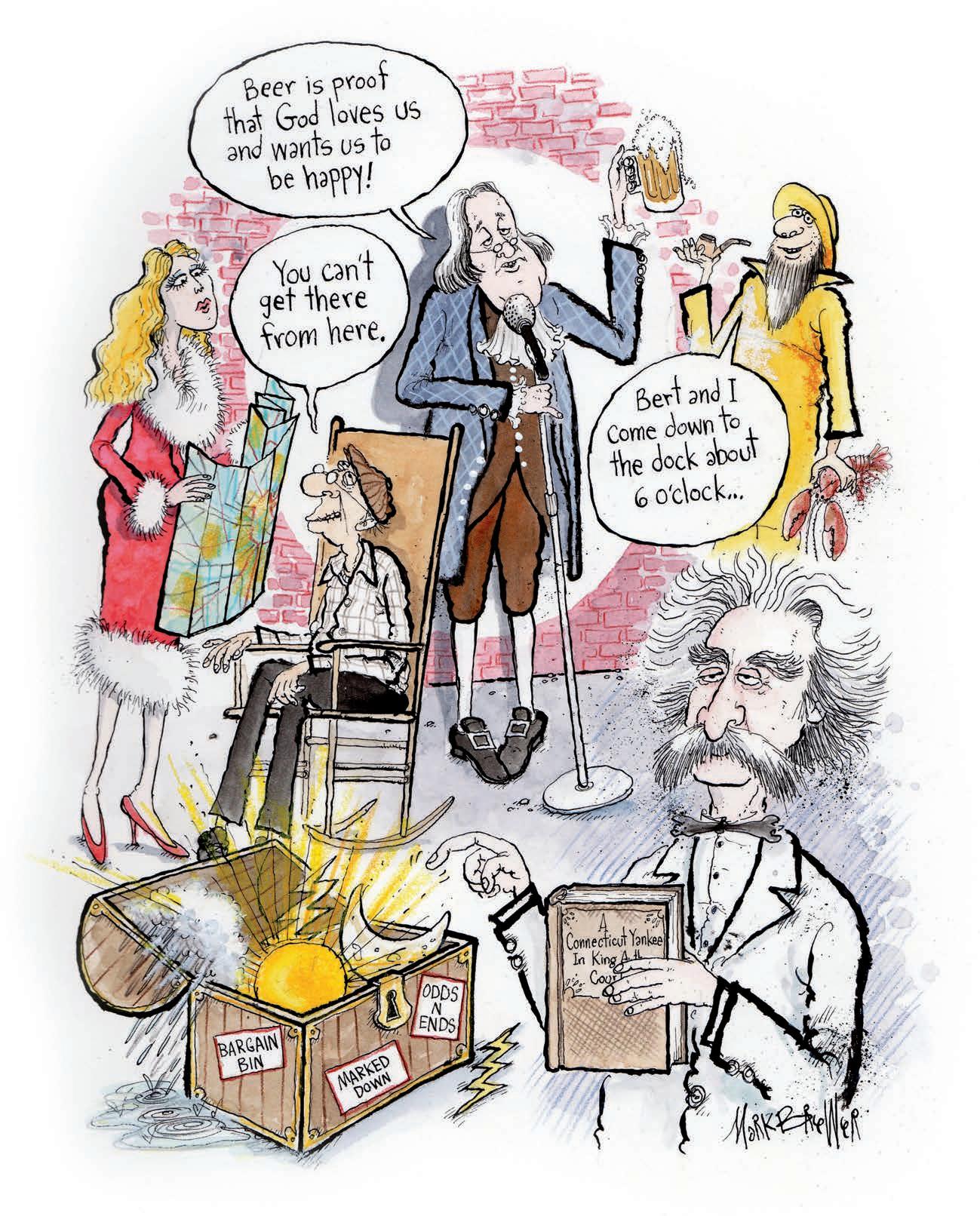

One must walk, not ride, to really savor the character of Beacon Hill. One of the finest times to complete a tour is at dusk—along narrow, cobbled Acorn Street perhaps, or Branch, softly illuminated by gaslamps below, while overhead the building tops are still caught in the glow of the setting sun. It is an appropriate time of day to reflect on the generations of scholars, builders, statesmen, and seafarers who made Beacon Hill their home.
—“Beacon Hill: Hub of the Universe,” by Paul Darling, May 1979


—Sam
One of the “Founding Fathers” of the Revolution, upon hearing the sound of musket fire at Lexington, Massachusetts, April 19, 1775
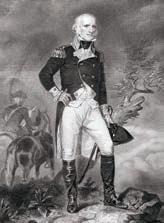

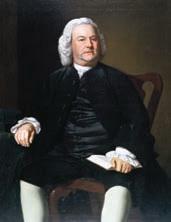
A










“Taxation without representation is tyranny.”
—James Otis (1725–83)Colonial lawyer and member of the Massachusetts provincial assembly
“What a glorious morning is this!”
Adams (1722–1803)
“Don’t one of you fire until you see the whites of their eyes.”—William
Prescott (1726–95)Commander of American troops at the Battle of Bunker Hill
“Tonight the American flag floats from yonder hill or Molly Stark sleeps a widow!”—John
Stark (1728—1822)Commander of New Hampshire troops at the Battle of Bennington
“I only regret that I have but one life to lose for my country.”—Nathan
Hale (1755–76)young Connecticut schoolteacher turned soldier, executed by the British for spying on September 22, 1776
1871
year when Frisbie P ie C ompany was founded in Bridgeport, CT

3 disc toys invented by Fred Morrison before the Frisbee (Whirlo-Way, Pluto Platter, Flyin-Saucer)
SEVEN players on an Ultimate Frisbee team
cents offered to Fred M orrison for the cake pan he was tossing on a S anta M onica beach in 1938
1920 year when Yalies began flinging their pie plates to one another
221 pages in Frisbee: A Practitioner’s Manual and Definitive Treatise
100,000,000 Frisbees manufactured 1957–1994
80+ countries in which Ultimate Frisbee is played
74 mph fastest Frisbee throw, according to Guinness World Records
65 dollar price on eBay for an original Frisbie pie plate
1100 unique flyingdisc specimens in R ichard Pancoast’s basement collection in Stratford, CT
443 FEET farthest Frisbee toss, according to Guinness World Records
NUMBER 9

Photographer
N A LD RIC H
rowing up in New Hampshire’s Connecticut River Valley, Kindra Clineff fell in love with photography and autumn. Thousands of images later, the adoration continues. What goes into capturing the iconic fall foliage shot? We caught up with Clineff at her Topsfield, Massachusetts, home and studio to find out.
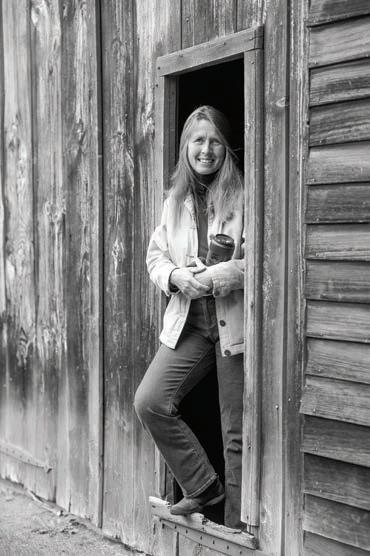
the best,” she says. “For a recent Yankee assignment in northern New Hampshire, I made repeated trips to specific locations just to get the moment when the mist was coming off the Androscoggin River, with the foliage in the background.”
Backlight, that is. Bright sunlight can wash out foliage color, so Clineff avoids shooting with the sun at her back. Instead, she aims her camera in its direction. Backlighting her subjects, she says, makes the leaves and grass look more vibrant. But shooting this way requires finding something with which to shade your lens (more than just a lens shade) so that there’s no sun glare. Clineff’s foolproof method: “I’m a master at finding and working with the shadows cast by trees, signs, and even telephone poles,” she jokes.
Morning, Sunshine
Sundown can be magical, but Clineff prefers early morning. Often, she’s out before the sun is up—for a story in northern Maine she was hiking a trail at 4:30 a.m.—but the payoff is extraordinary. The light is gorgeous, and “if you get that fog or mist, that’s
Keep in mind that fall foliage isn’t a singular moment. A pretty image may be a tree that’s topped with color but still green below. A week later, that same tree may be bare at the top but vibrantly colorful closer to the ground. Also, autumn color is about more than just the maples. “Look at everything around you,” Clineff says. “I find blueberry fields unbelievable. Their rich crimsons are unearthly.”
Thanks to the Web, Clineff can scout out areas before she visits, for conditions and for color. Her favorite tool? The webcam: “It’s great for weather, and you can see what the foliage is looking like.”
When Clineff was shooting in Boston one morning early in her career, a stranger gave her some advice that has remained with her, whether she’s shooting foliage or not. Don’t forget to consider the shadows, he told her. “I’ve never forgotten that,” Clineff says. “He was talking about shadow as a graphic element but also much more. Be aware of everything; don’t narrow your field of vision.”
For more on Clineff and her work, visit: kindraclineff.com
Kindra Clineff has been shooting foliage for Yankee since 1989. She knows that each fall brings a unique gift to anyone with a camera and an eye for unrivaled beauty.A maple tree in all its glorious fall color towers over a meadow in Johnson, Vermont.
September 27
Plymouth, Massachusetts
Yankee Magazine this summer, telling the stories behind some of our favorite New England experiences through a series of editorial features, social media and events. See what we’ve been up to.
On Yankee’s social media channels, our editors kicked o the 2015 ea market season by noting trends and their favorite nds at the Brim eld Antique Show.
Celebrate the crafts of the 17th century with more than 50 artisans, musicians, and foodies (including Yankee associate editor Aimee Seavey) as Plimoth Plantation staff and visiting “makers” demonstrate historic skills ranging from furniture making to beekeeping. plimoth.org
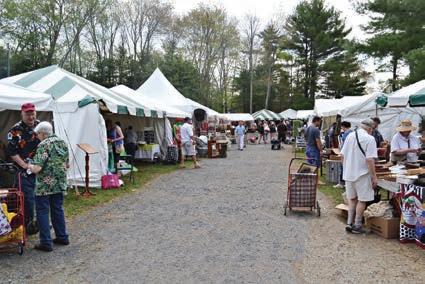

October 3
South Deerfield, Massachusetts Yankee Magazine’s senior food & lifestyle editor Amy Traverso will be on hand to sign her Apple Lover’s Cookbook and host a cooking demo as Yankee Candle Village hosts fruit and cider tastings, live music, hayrides and more. Meet local orchardists and sample seasonal flavors.
yankeecandle.com
Associate Editor Aimee of the Tanglewood Music Center was celebrated with two days of events.
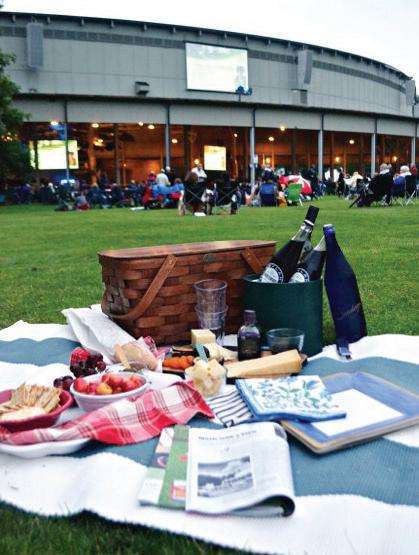
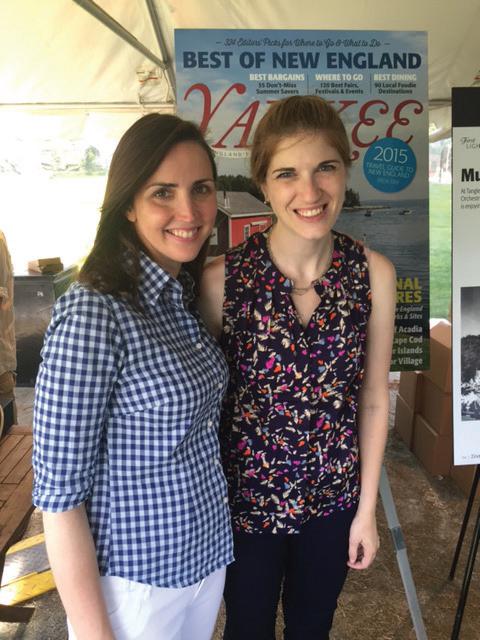
backdrop, as Yankee set sail with the July/August issue.


How many high-schoolers turn to Nathaniel Hawthorne’s Mosses from an Old Manse for their yearbook quote? Kim Knox Beckius did, and “dreams have condensed their misty substance into tangible realities” since the author of books like New England’s Historic Homes & Gardens (Union Park Press, 2011) began producing About.com’s New England Travel site in 1998. Even if literary luminaries failed to inspire your teenage dreams, visit these homes where Kim strongly senses their presence, and you’ll grasp how passion and place shaped phrases that still stir hearts and minds.


Inside the family homestead where Emily Dickinson was born in 1830, died in 1886, and, notoriously, holed up for most of her adult life, she’s less enigmatic. Yes, mysteries remain, and the headless form at the top of the stairs may startle you. But look closely: This replica of the poet’s famed all-white attire isn’t ghostly garb but a sweet, lace-trimmed house dress. Strict parents, the ravages of disease and the Civil War, a secret love, family scandal … Dickinson’s tiny desk was her refuge; her 1,800 poems, therapy. You’ll leave having “met” a woman who chose to “dwell in possibility”—rather than in a judgmental world not yet ready for her rule-breaking verse. Amherst, MA. 413542-8161; emilydickinsonmuseum.org
Samuel Clemens became the Mark Twain we cherish during 17 happy, productive years in Hartford. Within this 1874 brick Victorian, Twain isn’t merely the witty, quotable satirist who dreamed up Tom Sawyer’s and Huckleberry Finn’s adventures in the thirdfloor billiards room. He’s a local guy with neighbors like Harriet Beecher Stowe (tour her house, too) and a fam-
ily he loved. Tales you’ll hear of Twain’s financial and personal losses will tug at your heart. Hartford, CT. 860-2470998; marktwainhouse.org
How did a California boy become the beloved, melodic voice of rural New England? Answer: Robert Frost’s grandfather bought him a farm. Although there are other Frost houses to visit in New England, here in Derry, New Hampshire, a young man scratching out a living became a keen observer of the wisdom that lies in nature’s first green or a snowy evening. As you stroll the path through a landscape that appears even in poems Frost wrote long after selling the farm in 1911, you’ll spy the “ Mending Wall” and “Hyla Brook,”
which, says site manager Bill Gleed, “does exactly what Frost says it does in the poem—every year.” Derry, NH. 603-432-3091; robertfrostfarm.org
Edith Wharton’s Berkshires estate, where she lived and wrote from 1902 to 1911, is New England’s most autobiographical home, the embodiment of all that she and coauthor Ogden Codman Jr. preached in her first book, The Decoration of Houses. This nonfiction treatise on design railed against Victorian fluff in favor of more balanced, harmonious interiors. How conducive to creativity was this thoughtfully conceived mansion and its manicured gardens and grounds? Wharton wrote some of the most celebrated of her more than 40 novels here, including The House of Mirth. Readings and themed tours ensure that the property is perpetually inspiring. Lenox, MA. 413-551-5111; edithwharton.org
If Nathaniel and Sophia Hawthorne had owned smartphones, their endearments would have been lost to us. Luckily for romantics, they’re etched into the window glass at the Georgian clapboard house that the newlyweds rented from the Emersons in 1842. Concord, Massachusetts, is rife with writers’ homes, but none is more iconic than the Old Manse, overlooking the North Bridge, where the “shot heard ’round the world” plunged local militiamen into a battle with long-lasting reverberations. The upstairs study is ground zero for America’s second revolution: the Transcendentalist shift in thought. Ralph Waldo Emerson wrote his landmark essay, “Nature,” while gazing out at the Concord River. Hawthorne installed a desk, condemning himself to stare, undistracted by nature, at the opposite wall. Says site manager Tom Beardsley, “It’s the room people come from all over the world to see.” Concord, MA. 978-3693909; thetrustees.org/places-to-visit/ greater-boston/old-manse.html

• 200 wooded acres: cozy cottage clusters, 65 acre preserve
• Easy access to the Eastern Trail
• 850 to 1350 square foot cottages
• 7 models and many optional upgrades
• Clubhouse, pools and many other amenities
• 9 minutes to Dock Square, Kennebunkport
• 8 ft x 10 ft sheds available
• Pre-construction prices starting at $204,500

NUMBER 11
arely 200 feet from the shallows of Maine’s Long Sands Beach, the Cape Neddick Light Station perches so handsomely on its bony 2.8-acre nest of Nubble Island that we call it simply “Nubble Light.” Maine boasts more than 60 standing lighthouses. Nubble Light, Maine’s southernmost light, may well be the one we love most.

In 1977, when Voyager 1 and 2 blasted off for Jupiter and beyond in search of possible alien life, their capsules carried photos to show what we revered here on Earth. Among those photos: the Great Wall of China, the Grand Canyon, Nubble Light. The lighthouse and the keeper’s house are on the National Register of Historic Places, and their likenesses are
engraved on York’s town seal, as if to say: Nubble belongs to the country, but here is its home.
The keepers of the light who lived here from 1879 until the last Coast Guardsman left in the summer of 1987 felt that this was their calling. They tended the French-crafted Fresnel lens as if it were a child, polishing its light until it shone like gold. Sometimes winter blew fog that blanketed the knoll for weeks at a time. The keepers knew that the safety of ships depended on their keeping Nubble’s red light glowing 13 miles out to sea. At dawn, they’d extinguish the light, watch the sun creep over the water, and start their chores.
Nubble Light is at its finest on a blue-sky day when the ocean scent makes mere breathing worth the trip. Stop at tiny Sohier Park on Nubble Road. Ahead you’ll see the gleaming white tower reaching 41 feet high, and beside it the trim red-roofed keeper’s house, a few outlying sheds, and a white picket fence, as if the lighthouse is standing on a shady neighborhood street.
Lighthouses have become icons of our yearning, speaking to us of lives spare and romantic at the same time. We wish we lived there; we know we cannot. So we carry the light inside, no matter where we live. —Mel
AllenNUBBLE LIGHT
Nubble Road (off U.S. Route 1A), York Beach, ME. nubblelight.org
Off the coast of York, in southeastern Maine, the Nubble and its lighthouse are off-limits to the public, but visitors can catch a great view from Sohier Park on the mainland. This area saw many shipwrecks before the lighthouse was constructed. The wreck of the Isidore in 1842 is the most famous; her crew all perished. Since then, legend has it that a phantom ship continues to haunt the seas around Cape Neddick.



NUMBER 12
Crosby visited Round Mountain Pond, west of Ashland, Maine, in the summer of 1891, and while there caught 52 trout in 44 minutes of fishing. At the time, she claimed that the feat was unmatched by any woman and had been accomplished by only five men.

Cornelia Thurza Crosby was born in Phillips, Maine, on November 10, 1854. Her father,
In 1886, a friend presented Crosby with a five-ounce bamboo rod. She became so adept at fly fishing that friends called her “Fly Rod,” a nickname she started using as an outdoor writer in 1889. “Fly
Rod’s Notebook” ran in Maine newspapers and in publications as far away as Boston, New York, and Chicago. Starting in 1901, she wrote regularly for the national magazine Field & Stream
An early proponent of catch and release, Crosby is said to have caught more than 200 fish in a single day, and some 2,500 trout during the summer of 1893.
Crosby helped create Maine’s popular exhibit at the first New York Sportsmen’s Exposition, held in May 1895 at Madison Square Garden. The display, called “Camp Maine Central,” featured a 10x13-foot log cabin and dozens of mounted animals and fish. For the 1896 show, Fly Rod added tanks of live trout and salmon and decked herself out in a daring calf-length doeskin skirt, rifle in hand.
As her fame grew, Crosby was hired by the Maine Central Railroad as its first publicity agent. Her job was to write about things that would attract people to Maine, not necessarily about the railroad.
Although initially opposed, Crosby came to support the issuance of hunting and fishing licenses, with proceeds funding Maine’s Department of Fish & Game (now Inland Fisheries & Wildlife). She was a vocal advocate for game preservation, catch limits for fish, kill limits for deer, and closed seasons for big game.
According to a newspaper account, Crosby returned to Rangeley Lake to fish when she was in her eighties, staying two weeks at Bald Mountain Camps.
Crosby died in Lewiston on Armistice Day 1946, just a day after her 92nd birthday.
—compiled by Joe Bills
When Maine passed an 1897 bill requiring hunting guides to register with the state, the first license issued went to ‘Fly Rod’ Crosby, a sportswoman and journalist whose natural flair for public relations had helped establish western and northern Maine as outdoor-sports destinations.
“Fly Rod” Crosby,photographed in Edwin Starbird’s studio, c.
1890. “I would rather fish any day than go to heaven,” she once wrote. Her friend Louis Sockalexis, a Penobscot Indian and pro baseball player, said, “Her face is white, but her heart is the heart of a brave.”
The Lodge at Bromley If being near the mountains just isn’t close enough, stay on the mountain at The Lodge at Bromley. Remarkably family-friendly with a special kids’ lodge, this slope-side resort is just feet from Bromley Mountain and a short drive to Manchester’s museums and designer outlet shopping. Located in the charming village of Peru, enjoy breathtaking vistas of the West River Valley from your window, or hop onto one of Vermont’s nearby scenic byways for a relaxing, beautiful drive.
The Peru Fair Approximately 100 exhibitors will converge on the tiny village of Peru, Vermont to sell their arts at this year’s 36th annual Peru Fair. The parade of whimsical characters officially opens the Fair as music and the smell of food fill the air. Highlights include a pig roast, art demonstrations, artisan crafts, music, dancing, and foods of all tastes. Date: September 26. 9-4 p.m.
boasts charming village centers, historical museums, outdoor adventures, and designer outlet shopping – all within three hours from Boston and less than four hours from New York City. Gas up, get on the road and head to southern Vermont

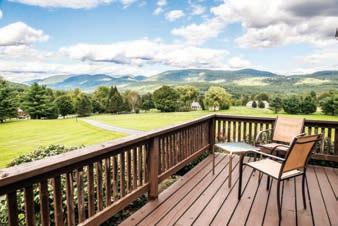


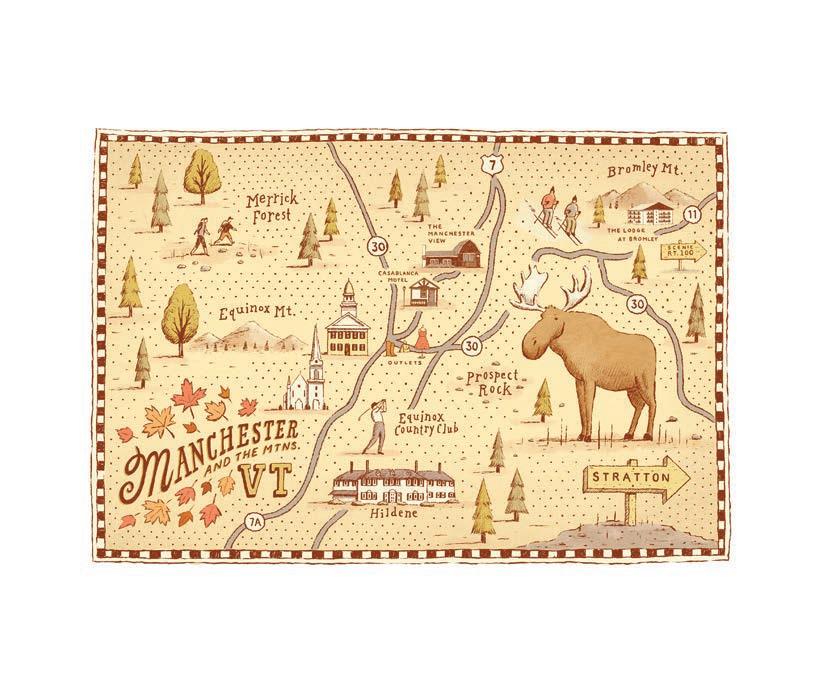
Manchester View Fine Lodging If you’re looking for a cozy and luxurious room with sweeping mountain views outside a private balcony, this is the lodge for you. Cradled by mountains from almost every direction, Manchester View’s elegant, rustic rooms and family-size suites make for an authentic mountainside vacation. Be sure to enjoy the outdoor heated swimming pool (in-season) before curling up to one of the property’s nineteen working fireplaces. Located close to town, you can’t miss the area’s shopping,

experience at these quaint storybook cottages. Charmingly restored, Casablanca’s cabins offer modern amenities with a vintage vibe, in the heart of Manchester Center. The real stars of this pet-friendly, retro escape are the grounds –complete with gardens, grills, a screened in gazebo and lawn games that transport you back in time to a simpler way of life. Toss a few horseshoes or relax around a fire pit for an evening of songs and s’mores.
32nd Annual Weston Craft Show Don’t miss the opportunity to visit one of the most prestigious exhibitions of contemporary crafts in Vermont. The Weston Craft Show features exceptional Vermont artisans through a carefully juried array of arts and crafts. This show offers discerning collectors high quality, diversity and beautiful displays.
Dates: October 9 -11. 10-5 p.m.
7








OF FALL

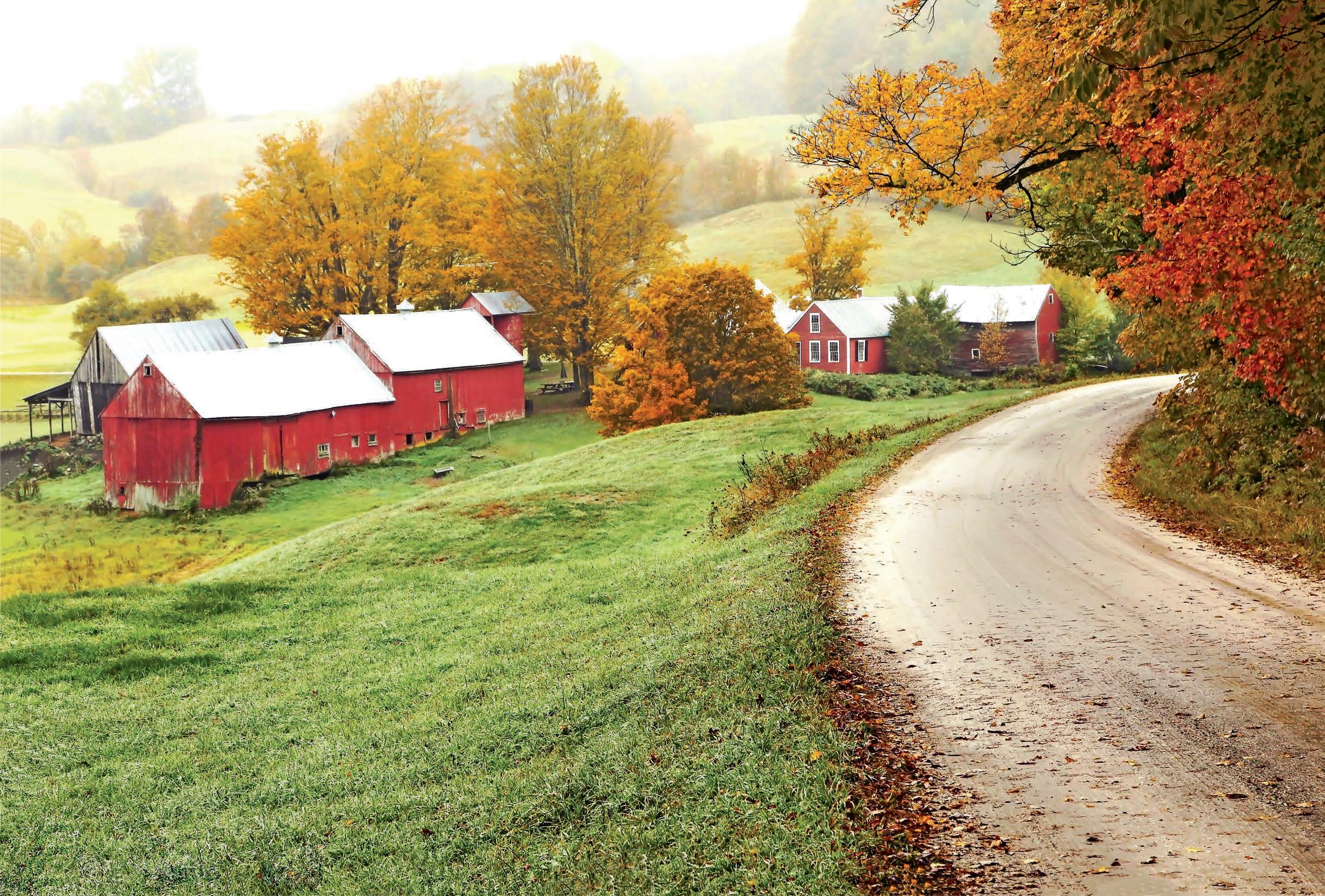 Two centuries old, the Jenne Farm nestles amid the rolling landscape around Reading, Vermont.
Two centuries old, the Jenne Farm nestles amid the rolling landscape around Reading, Vermont.
he story goes that years ago, when Floyd Jenne Sr. traveled from Reading, Vermont, to New York City—a distance that can’t be measured merely in miles—he arrived at Grand Central Terminal, looked up, and saw a massive photo of his farm spread across the walls. His surprise couldn’t have been greater than the awe that a first-time viewer experiences standing on the rising hillside above Jenne Farm—except that few who venture out here are completely unprepared. Most come with a purpose. Most know exactly why they’ve come. And some even know precisely where they’re going to stand.
Jenne Farm is the most photographed farm in New England, possibly in all of North America. And maybe even, as Rebecca Gibbs in Thorton Wilder’s play Our Town might say, in the Western Hemisphere. Chances are, you’ve seen it, too—been there, in a sense.
Especially in fall, photographers descend like cows coming down from pasture. Cameras click, documenting the

rise and fall of light on the idyllic scene. But despite the hundreds, maybe thousands, of calendars and postcards and bits of advertising and star turns in films like Forrest Gump and Funny Farm , nothing prepares you for the downward sweep of land and the tidy cluster of tumbledown red buildings burrowed into pillows of hills. In a landscape brimming with farms, Jenne Farm rises to the top, like cream on fresh milk.
Linda Jenne Kidder has been a trustee of the 460-acre spread since 2003. She remembers when the photographers began to descend, in the mid-1950s, after students at a local photography school started snapping shots of the 1813 farm, built by her forebears. The photogenic setting soon caught the eye of Life magazine, Vermont Life , and, of course, Yankee. “It was pretty overwhelming,” she recalls. Her eyes linger over a landscape that lives in her blood; Jennes have been on this land since 1790.
“[People] would come by the busload,” she recalls. “We always had beagle puppies, and they’d ask me to hold one of
A Conway Scenic Railroad train heads through New Hampshire’s Crawford Notch, amid dramatic scenery, on tracks that were laid in the 1870s.the puppies, take my picture, and give me nickels, dimes, and quarters.”
In her late teens, when all the postcards began appearing, Linda realized what a special place the farm was. In the face of entreaties from developers, she keeps it going with a herd of beef cattle and a maplesugaring operation. “I’m glad we can keep it,” she muses, “but it needs a lot of work. It’s still a beautiful place.” Hundreds of photographers click their cameras in agreement each year, as the sugar maples burst with color.
And somewhere out there, tucked into a photo album, hanging on a wall, or hidden away in an old shoebox, are photos of a 10-year-old Linda Jenne, holding a beagle pup, against this backdrop of simple beauty. The world’s moved on since then, but there’s still a little corner of peace and tranquility at the top of Jenne Road that feels as though you’ve just drifted back in time, to a piece of heaven on earth. You can even take a picture of it.
—“J Is for Jenne Farm,”
 by Annie Graves, September/October 2012
by Annie Graves, September/October 2012


From Woodstock, drive south on Vermont Route 106, through South Woodstock; then follow the road up Reading Hill. There will be a small sign on the right-hand side and a sign for Jenne Road.
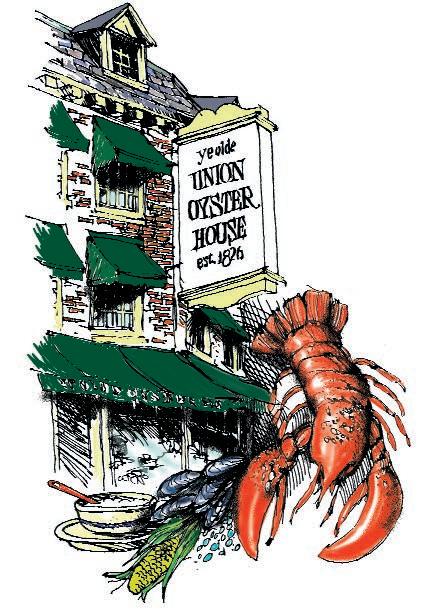



he Conway Scenic Railroad runs vintage equipment from the old round house in North Conway, New Hampshire. From late spring to mid-December, some of the trains go south down the valley to Conway. The other trains run north to Glen and Bartlett through what
(continued on p. 44)
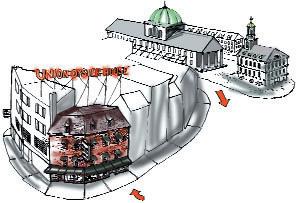
A fiery autumn sunrise greets travelers pausing at the C. L. Graham Wangan Grounds Scenic Overlook along “the Kanc,” in White Mountain National Forest. A century ago in the old logging days here, a wangan was a supply storehouse (sometimes on wheels).


Up and up you go, to 2,860 feet, with a scattering of lookouts where you can pull over to photograph views near and far.
(continued from p. 41)

an 1890 edition of Sweetser’s White Mountains described as “the broad intervales of the Saco River.”
I live five miles north of Glen and I’ve been through those intervales 10,000 times or more, but I’d never seen them this way until I rode the Scenic Railroad up the valley. I’d seen them from the road or from the tops of the mountains, but now I was a tourist on my home ground. I was riding the train through the backyards of people I knew. I was seeing their woodsheds and their children’s swings as landscape.


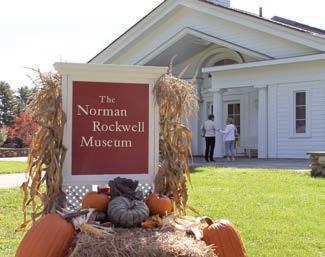


The serious work of another age began at Bartlett. The long climb through Crawford Notch to Bretton Woods and Fabyan Station was the most famous grade in the Northeast; it was so steep that when steam locomotives ruled the rails, as many as five helper engines were put on in Bartlett. Our train was a lightweight by those heroic standards: just a coach, a first-class car, and an observation car with open sides and outward-facing bench seats. Now I easily remembered the slight posting motion when seated, matching the bump-thump bump-thump of the rails, and the swaying sailor’s gait when negotiating the aisles. I also remembered, with some slight difficulty, how to stay calm while crossing a trestle 94 feet above a rushing stream, and so narrow that it seemed to have no visible means of support.

“When we entered the Notch, we were struck with the wild and solemn appearance of everything before us.”
Crawford Notch pinches tighter and tighter, and the railbed climbs steadily up its west wall. The ornate language of Sweetser’s day strikes us as quaint and improbable, but his description of the ride through Crawford Notch still rings true: “When we entered the Notch, we were struck with the wild and solemn appearance of everything before us.” Sweetser’s elevated cadences have retired to the archives, but I was grateful to the Conway Scenic Railroad for giving me a new view of the place where I live.
—“Good Grade,” by Nicholas Howe, September 2001
Conway Scenic Railroad, 38 Norcross Circle, North Conway, NH. 603-356-5251; conwayscenic.com


he Kancamagus Highway, which opened in 1959, may be the most scenic 34.5-mile drive in New England. The popularity of this paved mountain pass—Route 112—between Lincoln and Conway, New Hampshire, ensures that you’ll have company in October, so you’ll want to wake up early to explore it. Up and up you go, to 2,860 feet, with a scattering of lookouts where you can pull over to photograph views near and far, and here and there you’ll find picnic spots where you can linger above the foliage. It’s a drive to take with the windows open, eyes peeled. Don’t be surprised if you come upon a line of cars pulled over, waiting for the moose to shuffle back into the forest.
—“K Is for Kancamagus Highway,”

by Ian Aldrich, September/October 2012

















Enjoy the wonderful Blackstone River Valley National Heritage Corridor at more than 80 exciting experiencesmany are free!








Contact us for a free, color brochure or download it: Blackstone Heritage Corridor, Inc.
One Depot Sq., Woonsocket, RI 02895 401-765-2211 • www.BlackstoneHeritageCorridor.org

A Wee Faerie Village is back!
The return of our popular faerie house walking trail this year highlights over twenty faeriesized castles, towers, and palaces celebrating fiction’s greatest royal tales.

It’s the Vermonter’s Vermont … the loneliest and loveliest corner.
Whenever my wife, Kay, and I want to visit Vermont as though we didn’t already live here, we head for the Northeast Kingdom. It’s a name that fits a world apart, and it comes with a story of its origins. Local newspapermen used it in the early 1940s, but it was Vermont’s legendary Senator George Aiken who first gave “Northeast Kingdom” widespread currency.

As for the region’s true boundaries, who wants to split hairs? Some offer a neat delineation, drawing a line around the three counties of Orleans, Caledonia, and Essex, but the eastern reaches of Franklin and Lamoille counties ought to be tossed in as well. The Northeast Kingdom begins where most people would sooner do their big-ticket shopping in Newport or St. Johnsbury than in Burlington. It’s the Vermonter’s Vermont.
—“The Vermonter’s Vermont,” by William Scheller, September/October 2011





oute 100 is a restless road. As it salamanders its way through the mountainous middle of Vermont, it seems perpetually on the verge of decision, only to change its mind in a mile. One minute, it’s slaloming along a rocky riverbed through dense cover of birch and maple; the next, it’s soaring up to a sudden vista as though God has suddenly pulled away a curtain. There’s a reason that this stretch of highway—some 200 miles, from Massachusetts to Lake Memphremagog in Vermont—has been called the most scenic in New
England. In some circles, it’s known as the “Skiers’ Highway,” since it connects Vermont’s giants—Snow, Okemo, Killington, Sugarbush, Stowe, Jay—like knots on a whip.







But the road really comes into its own in autumn, hitting the peak of fall

foliage not once but many times as it traces an up-and-down course along the unspoiled edge of Green Mountain National Forest. When civilization does break through, it’s in the form of some of Vermont’s most quintessential villages.
Leaf peeping, after all, is about more than just leaves. It’s about the foliage experience—farmstands and country stores, craft galleries and hot cider. And Route 100, with its many off-thebeaten-path side trips, offers all of that in one long, winding package. Because the road never makes up its mind, you don’t have to, either.
And when it finally ends, some 10 miles short of Canada, your most difficult decision is the one to turn the car around and head home. The only comfort is that you get to see the whole show over again in reverse.
—“Driver’s Delight,” by Michael Blanding, September/October 2009
Vermont’s Route 100, with its many off-the-beaten-path side trips, offers all the different elements of the foliage experience in one long, winding package.

If it tastes good in your glass, it will probably taste great in your marinade. And when you’re feeling creative, the New Hampshire Liquor & Wine Outlets stock thousands of potential ingredients to experiment with. Stop by any of our 78 convenient locations throughout the state for outstanding selection, legendary prices, and no sales tax.
shmead’s Kernel’, ‘Roxbury Russet’, ‘Belle de Boskoop’, ‘Pink Pearl’, ‘Winter Banana’ … The names of antique and rare apple varieties are part poetry, part history lesson. Many go back centuries, some as far as the Renaissance. Most of the old varieties we know today, though, sprang up around the turn of the 19th century, when John Chapman (a.k.a. “Johnny Appleseed”) departed Massachusetts for the nascent Northwest Territory of Ohio and points west, planting nurseries as he went. By 1905, when the U.S. Department of Agriculture
Please
Liquor
commissioned a report on all known American apple varieties, researchers counted some 14,000 unique types. Today, only about 100 are grown commercially in any volume, but after decades of ‘Red Delicious’ dominance, the old apples are finding a new audience—especially here in New England, where savvy growers are swapping some of their ‘Cortland’ trees for ‘Calville Blanc d’Hiver’ and ‘Cox’s Orange Pippin’. These antique stunners have flavors and aromas that run from toasted nuts to honeyed champagne to lemonade, and tasting them is like discovering an entirely new fruit species.
—“O Is for Orchard,” by Amy Traverso, September/October 2012For a list of New England orchards that feature not only beautiful settings but also heirloom apples, turn to p. 50.
These antique stunners have flavors and aromas that run from toasted nuts to honeyed champagne to lemonade.



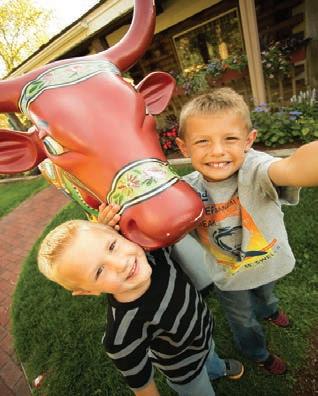



Paul and Jo-Ann Desrochers grow vegetables, peaches, plums, and nectarines, but they have a special love of heirloom apples—nearly 90 varieties, all grown without pesticides. You’ll find ‘Westfield Seek-No-Further’ (a Massachusetts native), ‘Newtown Pippin’, and the wondrous ‘Hidden Rose’, whose bland green-brown skin gives way to bright fuchsia flesh that tastes of raspberries. Open Saturday afternoons in the fall. 156 Plainfield Pike Road, Plainfield, CT. 860-564-2154; facebook.com/pages/18thCentury-Purity-Farms/1145617086 17136

At this hilltop orchard in southwestern New Hampshire, you’ll find more than 50 apple varieties in neat rows, drawing your eye toward sweeping views of the Connecticut River Valley. Manager Homer Dunn adds more old breeds each year; the roster now includes ‘Belle de Boskoop’, ‘Reine des Reinettes’, and ‘Hudson’s Golden Gem’. Bring a picnic and top it off with pie from the orchard’s store. 57 Alyson’s Lane, Walpole, NH. 800-856-0549, 603-756-9800; alysons orchard.com
Possibly the most beautiful orchard view in New England, with vistas as far as the White Mountains. When you turn your attention back to the trees, you’ll find 80-plus apple cultivars tended by owners Tim and Amy Bassett. One variety especially worth noting: ‘Hampshire’, a tree that sprang up from seed on this very farm; with its abundant juice and rich flavor, it makes a great pie. 656 Gould Hill Road, Contoocook, NH. 603-746-3811; gouldhillfarm.com
Steve Wood and Louisa Spencer operate two businesses on their land in westcentral New Hampshire: Poverty Lane Orchards, where they grow dozens of antique and unusual apple varieties, and Farnum Hill Ciders, where they make complex ciders from the aforementioned apples. Both are worth exploring for their nuance and quality. 98 Poverty Lane, Lebanon, NH. 603448-1511; povertylaneorchards.com
In the heart of America’s first fruit bowl, this beautiful winery and restaurant is also home to a spectacular antique-apple orchard stocked with rare finds, such as ‘Pink Pearl’, ‘Ashmead’s Kernel’, and ‘Esopus Spitzenberg’— nearly 100 in all. (Call ahead to make an appointment.) Tack a wine tasting and dinner onto your day and you have a make-your-own harvest festival. 100 Wattaquadock Hill Road, Bolton, MA. 978-779-5521, 978-779-9816 (dinner reservations); nashobawinery.com
Landmark Trust USA manages these 626 pristine acres in southern Vermont, where a team of orchardists tends some 90 varieties of low-spray heirloom and unusual apples. This beautiful property served as the location for the orchard scenes in The Cider House Rules. There’s a farm stand, plus classes on pruning and grafting, pie baking, and cider making. Great bonus: You may rent either of two of the many historic structures here for a weekend getaway—or the adjoining Rudyard Kipling estate, Naulakha, where he wrote his Jungle Book series. 707 Kipling Road, Dummerston, VT. 802-254-6868; landmark trustusa.org —A.T.
CRAFT: BEERS + TRADES | SEPT. 19 & 20
DIG IN: A FIELD-TO-TABLE FESTIVAL | OC T. 17 & 18
BOUNTY: A NEW ENGLAND THANKSGIVING NOV. 7 & 8, 14 & 15, 21 & 22 AND 26


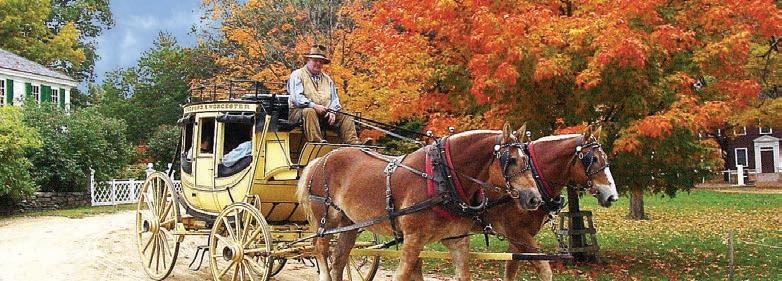
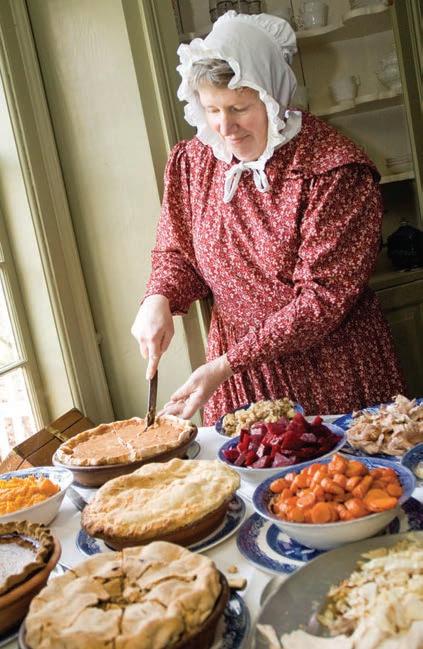
WINTER MARKET | NOV. 27 – 29
CHRISTMAS BY CANDLELIGHT | DEC. 4
A worker rakes cranberries at harvest time in Duxbury, Massachusetts.
A worker rakes cranberries at harvest time in Duxbury, Massachusetts.

The town’s growers produce about 32,000 barrels of berries on some 300 acres of land, which includes working bogs, associated freshwater reservoirs, sand (used in cultivation), wetlands, and upland.
The town’s growers produce about 32,000 barrels of berries on some 300 acres of land, which includes working bogs, associated freshwater reservoirs, sand (used in cultivation), wetlands, and upland.

t’s not often that a farmer’s hard work brings tour buses filled with camera-toting visitors, or families with children, or those who yearn for autumn beauty. But when cranberry farmers in southeastern Massachusetts, Down East Maine, and parts of Rhode Island bring in their crops in September and October and into November, they know they have company.
The fields are composed of sand and peat, and on their own wouldn’t interest most people—but when the berries ripen on the vines, the landscape is flooded till a sea of crimson spreads across it, and the harvest begins. Wherever the eye looks—heading west from Plymouth, Massachusetts, say, down
Seven Hills Road and out Federal Furnace Road, or along Routes 106 and 44, or south on 58, through Carver, Wareham, and Middleborough, through Kingston, Plympton, and Halifax—it’s a sight to remember.
A number of farmers welcome visitors, and some even let you close to the bogs. Many will pause in their work— as generations before them have—to talk bogs and berries.

by
Mel Allen, September/October 2012Follow the crimson path at the annual Cranberry Harvest Celebration in Wareham, Massachusetts, on Columbus Day weekend 2015. cranberries.org/festival/festival.html; cranberryharvest.org
Looking for a place to stay in cranberry country? Here’s a B&B located on a bog: On Cranberry Pond, Middleborough, MA. 508-946-0768; oncranberry pond.com
And for our favorite cranberry recipes: YankeeMagazine.com/tag/cranberry
When the berries ripen on the vines, the landscape is flooded till a sea of crimson spreads across it, and the harvest begins.

NUMBER 20

Early New Englanders invented the Cape Cod house out of necessity, but its charm and ingenuity made it an American icon.
BY BRUCE IRVINGf, as Orson Welles said, “the enemy of art is the absence of limitations,” the Cape Cod house grew up in a very artfriendly environment. Faced with harsh weather, modest means, and the pressing need to scratch out a living, New England’s coastal colonists put together structures with nary a false note or extraneous brushstroke. The result is an iconic housing type that has stood the test of time, from elegantly simple originals, many of which still stand, to the crank-’em-out versions of Levittown to graceful midcentury interpretations by architect Royal Barry Wills to the little green tokens we trade for hotels in Monopoly.
Those early Puritan housewrights, many from the southwest of England, brought with them a somewhat different model: tall, narrow, half-timbered houses topped with thatched roofs. Adapting their design to the much-tougher New England climate, they switched to overlapping pine shingles, lowered the roofline, pulled in the eaves, and drew the floorplan into more of a square, presenting a wind-cheating profile with a waterproof skin and less exterior wall per square foot of interior space. It’s as though every decision was subjected to a kind of Darwinian test, with any move unable to justify itself over time jettisoned for profligacy.
Featuring original 18thcentury woodwork and beamed ceilings, Athearn House, in Edgartown, Massachusetts, is one of the few Cape-style homes of its age still remaining on Martha’s Vineyard. Over the years, owners adapted its basic layout, adding dormers and extensions as needed, while retaining the home’s historic footprint and classic style.
Living conditions were particularly tough out on Cape Cod, where the soil was thin, the trees in short supply, and the winds often extreme. That didn’t guarantee that this house type would be invented there, but it certainly flourished. The style didn’t get its placespecific name until a Yale president named Timothy Dwight christened it thus in an 1821 book called Travels in New England and New York . “The houses in Yarmouth are inferior to those
steeply pitched roof, side gables very little or no eave overhang
may be odd number of windows, placed asymmetrically, on gable ends
stained or unstained shingles, or painted clapboards (front only or 4 sides)

in Barnstable,” he opined, “and much more generally of the class which may be called with propriety Cape Cod houses.”
He described a building easily recognizable to today’s visitor: “These have one story and four rooms on the lower floor, and are covered on the sides, as well as the roofs, with pine shingles, eighteen inches in length. The chimney is in the middle immediately behind the front door, and on each side of the door are two windows. The roof is straight. Under it are two chambers, and there are two larger and two smaller windows in the gable end.”
one and a half stories, top oor under roo ine
two windows, placed symmetrically, on both sides of front door
lacking adornment, except around front door (plain or uted pilasters, dentils, sidelights, transom lights) simple stoop, no roof over front door
multipane, double-hung windows
For the colonists, what spelled home was often a very humble affair. Capes are commonly grouped into one of three categories—half, threequarter, and full—describing, respectively, a small building with a door and a pair of windows to its side; one with an extra window flanking the door; and a larger, symmetrical home with the door in the middle. But Claire
Dempsey, associate professor of Amer ican and New England studies at Boston University, points out that early descriptions were subtly but tellingly different: “house,” “house and a half,” and “double house.”
“To me, that means that the oldtimers were happy to call that smallest building a proper home,” she says. Nonetheless, many owners made a perhaps un-Puritan decision to add even a single embellishment, usually gracing a front doorway with a stylistic flourish of the day—a set of fluted Federal pilasters, for example, or a Greek Revival pediment.




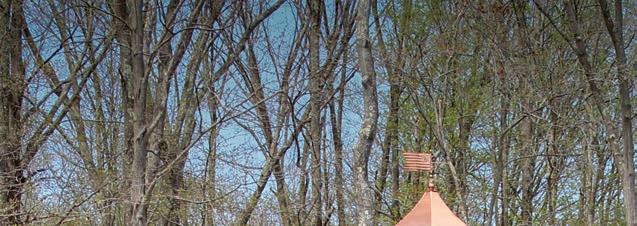




















When Wills, the Boston architect who is credited with deftly reviving the style in the 1930s, began his work, he imitated not only the originals’ massing and details, but also their size. According to architect Stanley Schuler, 250 years ago the average Cape was about 1,600 square feet; Wills’s early Capes were about the same. But by the 1980s, when Schuler asked Richard Wills, who had taken over his father’s business, to point him toward some of the firm’s recent work, Wills warned him, “You may not recognize many of them, because they stretch for 100 feet and more.”
Although Capes are increasingly the victims of suburban “scrape jobs,” bulldozed to free up their lots for maximal McMansions, many contractors still build them. From the bespoke versions put up by modern reproduction firms to factory-built modular models from companies such
as Vermont’s PepperTree Homes, the style survives and thrives, sometimes in the most contemporary ways. ZeroEnergy Design, also in Boston, specializes in cutting-edge energyefficient homes, often achieving net-zero buildings (making as much energy as they consume).



use of space,” says ZeroEnergy architect Stephanie Horowitz. “The short or absent overhangs allow us to wrap a house with continuous insulation. In other styles, longer overhangs can create a thermal bridge at a notoriously weak point where the roof meets the wall. Not so with a Cape.”
But Royal Barry Wills may have had the best explanation of why the Cape style lives on. They’re “as unpretentious as they are livable,” he said. “Carping critics may poke fun at their rambler roses, picket fences and stately elms, but such things spell home to us.”
A compact 1,200-square-foot house that the firm designed for clients in Little Compton, Rhode Island, embodies the Cape spirit. “The traditional Cape Cod plan lends itself to the efficiencies of super-insulated homes, with a compact form and resourceful
Bruce Irving is a home-renovation consultant, licensed real-estate agent, and author of New England Icons (Countryman Press, 2011), about the region’s built environment. He was the producer of PBS’s This Old House for 17 years and writes on architecture and design for a number of publications. bruceirving.biz

Highland Green



“Best Integration of Nature & Landscaping”


2014 International Builders’ Show











Capes are “as unpretentious as they are livable,” said Boston architect Royal Barry Wills.
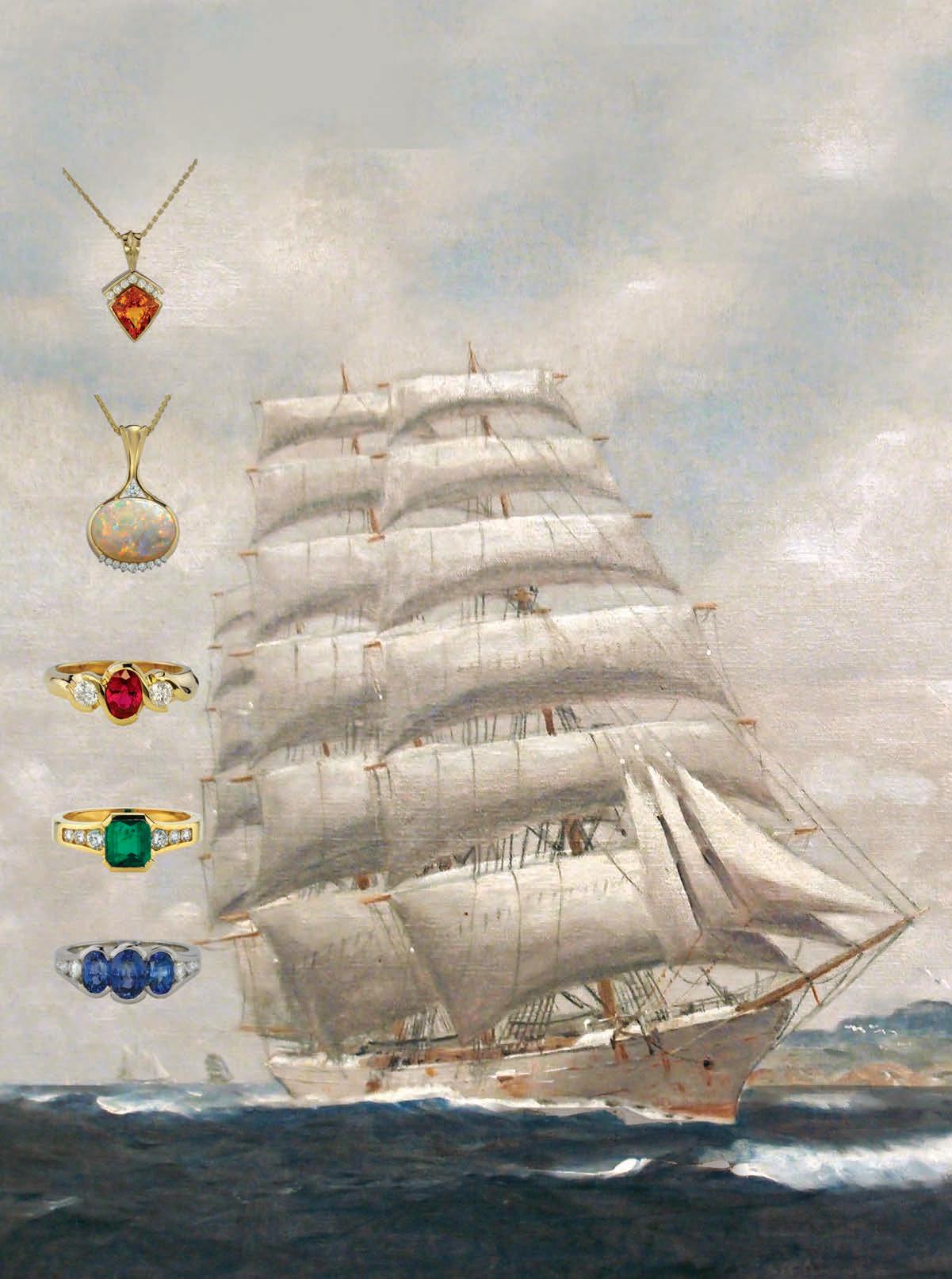

England innovators changed the way we lived, shopped, and even communed with Mother Nature.
Looking out toward the nearby barns and mountains, vintage wicker rocking chairs grace the porch at the Buckmaster Inn in Shrewsbury, Vermont.onchalant, lightweight, and airy, wicker furniture charmed all of America from the end of the Civil War until the 1930s. In Victorian times it was everywhere—in parlors, on porches, in railroad buffet cars. It graced the mansions and summer houses of the wealthy as well as humbler dwellings.

Design historians usually give credit for wicker’s evolution in America to a grocer named Cyrus Wakefield, who discovered an innovative use for the strips of rattan he’d seen going to waste on the wharves in Boston. Ships bringing goods from the Far East used rattan to keep cargoes from shifting and to cushion crates of porcelain. All of it— and there was a lot—was discarded as soon as the cargo was unloaded.
Starting in the 1840s, Wakefield began experimenting, wrapping a Provincialstyle rocking chair in rattan strips to give it an Oriental appearance. At the same time, he was selling the rattan itself to Boston-area chairmakers, who needed it to meet the demand for caneseated chairs. In time, Wakefield built an empire from wicker furniture and led the world in its manufacture, with factories in three states and warehouses as far as London. He built his biggest factory in his hometown of South Reading, Massachusetts. After he donated land plus $30,000 to build a new town hall, the town voted to rename the place in his honor. Flattered, Wakefield ended up paying more than $100,000 for the stately mansard building.
There’s still quite a bit of early wicker around, but since the 1960s, the market has been flooded with reproductions from Asia, some of which have now acquired the patina of age. How to tell them apart? Reproductions tend to be lighter than old wicker pieces because the framework is made of bamboo or rattan rather than oak or other hardwoods. Collector and dealer Marla Bryer-Segal of Marblehead, Massa chusetts, puts it most breezily: “If it blows over in a strong wind, it’s a reproduction.”
—“Cyrus Wakefield’s Smart Idea,” by Robert J. Pushcar, June 1997
hough historians trace American flea markets to Monday Trade Days in Canton, Texas, in 1873, the modern flea market as we know it is considered the brainchild of Russell Carrell, an East Coast antiques-show organizer. Working as an auctioneer in Connecticut (and inspired by the outdoor markets he’d seen in Paris), Carrell decided to try running an antiques show like an outdoor auction. He did away with the trappings of a tent, because, in thrifty Yankee style, he didn’t want to pay for the fire insurance. On a late summer Saturday in 1958, he set up his first market behind his home in Salisbury. He called it “Antiques in a Cow Pasture,” and it came to attract nearly 200 dealers at each annual event. The name “flea market” came from those same Parisian marchés aux puces literally, “market of fleas”—that inspired his endeavor. — A.T.
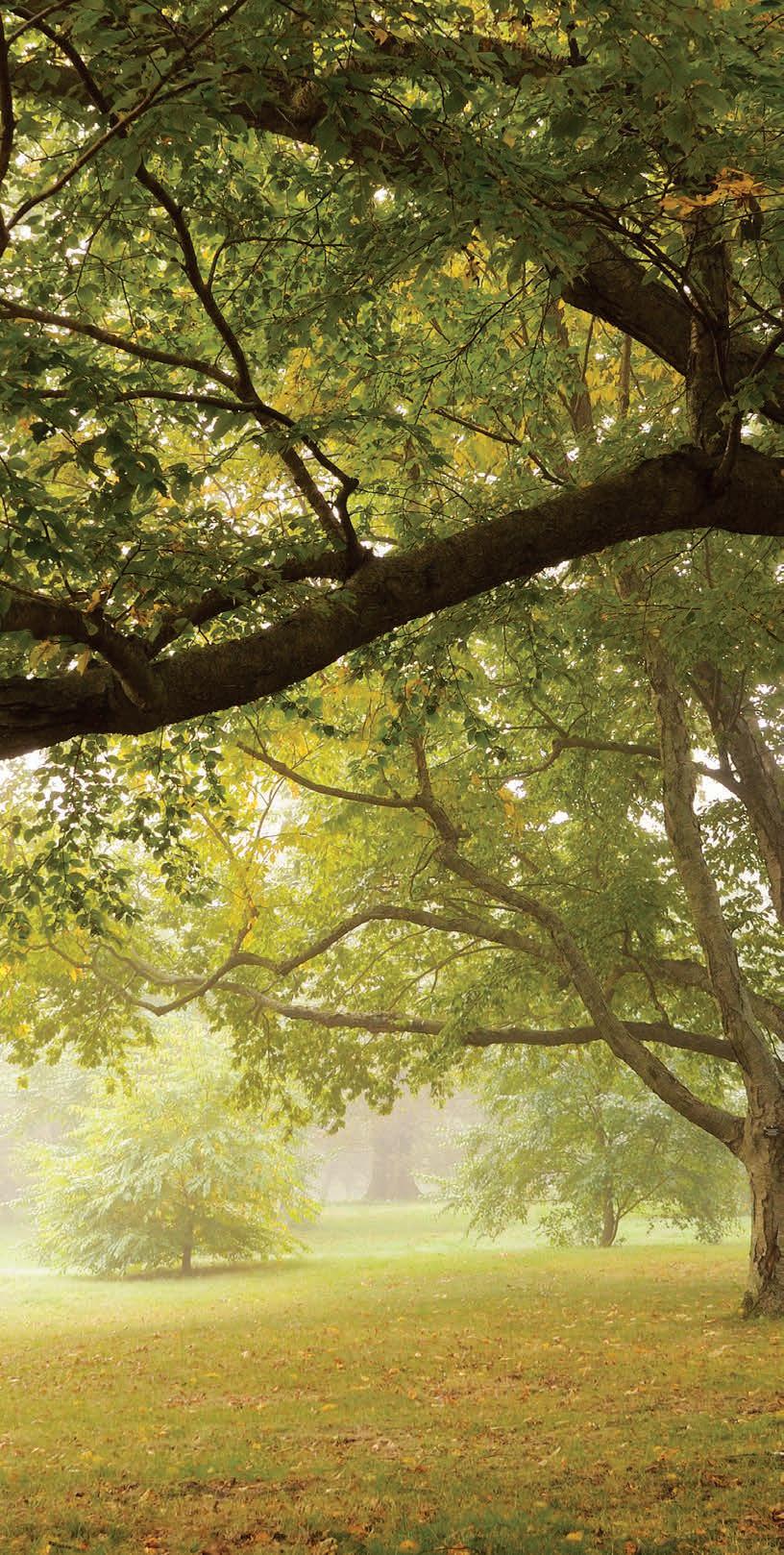
arl Silas Tupper, born in 1907 to a poor, hardworking New Hampshire farm family, became a self-taught inventor and eventually found work as a plastics chemist. His invention of an airtight, watertight lid that famously emitted a “burp” helped launch a national retailing phenomenon. —A.T.
“We want a ground to which people may easily go,” Frederick Law Olmsted wrote, “where they shall, in effect, find the city put far away from them.”
More than 13,000 plants pass the baton of color through the seasons here at Harvard’s Arnold Arboretum.
—C.S.o other arboretum in North America is so old. Few boast more trees and shrubs gathered from around the globe. Arnold Arboretum, Harvard’s magnificent library of trees, 281 acres between South and Centre streets in Jamaica Plain, has always had two tasks: first, to provide a museum of well-ordered woody plants; second, to provide random delight. Wisdom and wonder.
Its creation fell in 1872 to an unlikely man, 27-year-old Charles Sprague Sargent, who ranked 88th in his class of 90 at Harvard. This was his second chance: to transform the hills and valleys of a former farm into America’s first public arboretum, to find every shrub and tree and herbaceous plant in the world that could withstand the New England climate and bring it here. He was appointed director two days before he married, and he used his honeymoon to collect plants. The fieldwork itself was monumental enough, but how could tens of thousands of acquisitions be arranged in logical order, easily accessed by scholars, but planted in such a way that the seedlings had room to grow?
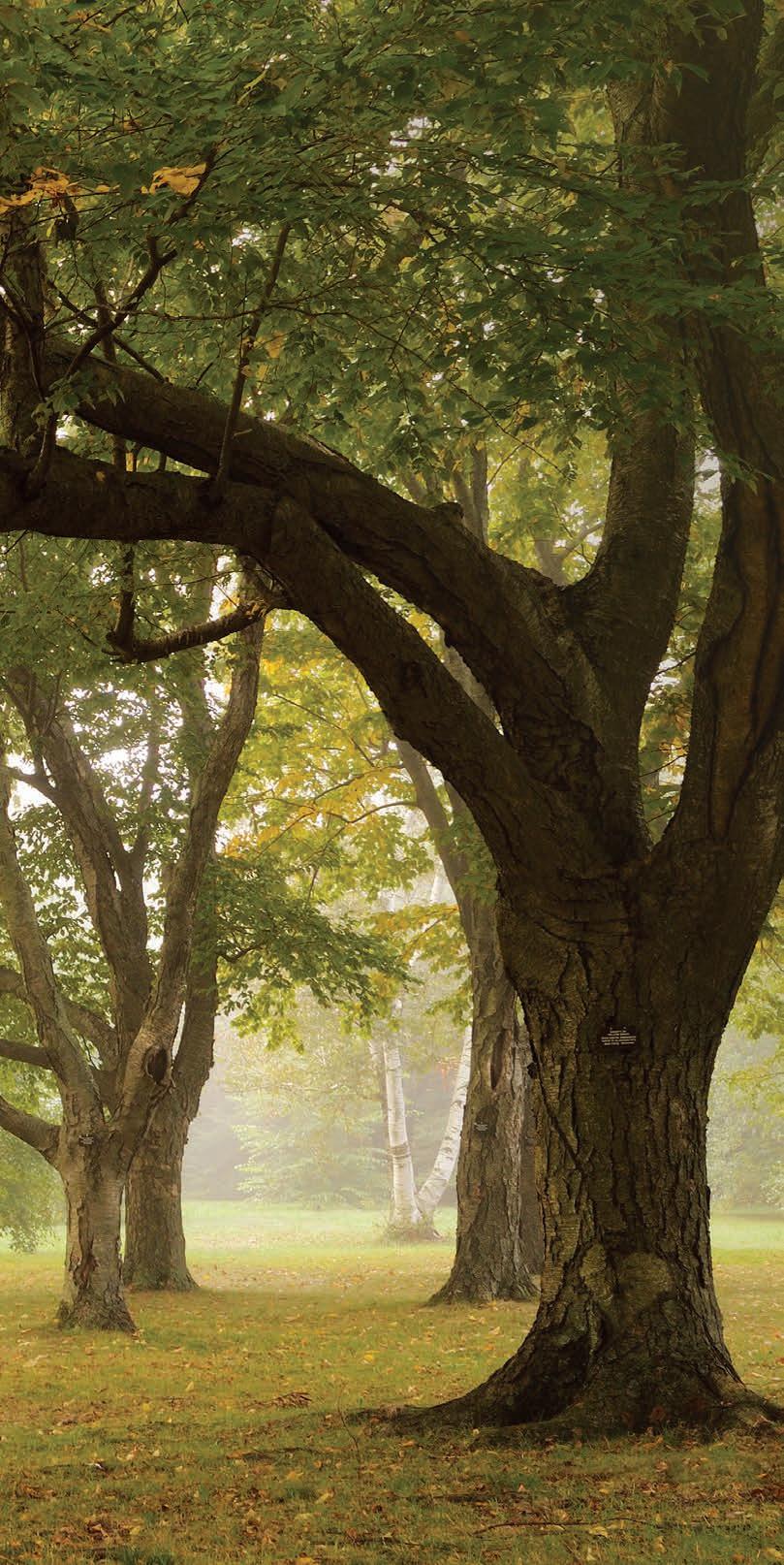
Luckily, he had help. Frederick Law Olmsted, America’s first landscape architect, was appointed park designer. He set copses and hangers of trees similar in form along the natural folds of the land. Together, he and Sargent grouped plants in sequence by genus and family, beginning with the most primitive near the Arborway Gate entrance on through the more morphologically complex conifers at Bussey Brook.
More than a century later, this layout remains essentially intact, a National Historic Landmark. Scholars come from around the world to do research here. But it’s not a collection that stands still for study; it continues to grow and die and shift. Trees from Mongolia share the sun with trees from France, from Russia, from Boston.
You see the wisdom of plants here. Having seen it, you return to the city streets a little wider around the eyes, welcomed back to the living world.
—“Garden of Wisdom and Wonder,” by Christine Schultz, April 1997
New Englanders have a keen sense of history. Located at the nexus of our country’s birthplace, we have a special appreciation for the past – yet what about the history that is being made before our eyes?
Consider the impending “silver tsunami” that is almost upon us. By 2030, we will have more people over age 65 than any other time in our history.
What’s different about a bunch of boomers becoming card-carrying AARP members? Almost everything. In addition to the sheer magnitude of people, this group has a longer life expectancy than any prior generation. They benefit from access to the most advanced medical innovations, which can help prolong the quality and length of their lives. They will live longer, with more complex diseases – which means cost will increase.
The difference doesn’t stop there – this generation is more active than their parents, and they have higher expectations of their retirement than any prior generation. The boomers have transformed other social conventions, by marrying later, traveling more, having children later; so too will they revolutionize their retirement experience.
Unlike their parents, this group can’t count on their children living around the corner. Most adult children

are more far-flung than ever, sometimes living across the country. No longer is there the reliable daughter across town – today she may be heading up a company in California. So the traditional family support model that served for the previous generation is becoming defunct.
Given that people are living longer, and seeking more from their retirement years, and given the social dynamics have changed, how can someone stay independent, and still ensure their health care is covered?

There is one solution that has been quietly operating for the past 100 years in the U.S., whose structure and practices are uniquely positioned for this generation. Continuing Care Retirement Communities (CCRCs) could be described as “retirement communities with benefits.” There are 1900 across the country, but just a handful in New England, and they are often misunderstood.
CCRCs welcome adults 62 years and older, and provide three levels of care: independent, assisted living and skilled nursing. The critical differentiator is that people enter the community when they are independent, and can live safely on their own. They enjoy active, independent lives, free of the worries and time consuming work of home maintenance.
What’s different about a bunch of boomers becoming card-carrying AARP members? Almost everything.
To learn more about CCRCs, start by investigating these communities.
With the addition of housekeeping services, inside and outside maintenance, transportation, a meal program, fitness activities, and 24 hour emergency call service, residents have more time to enjoy life, meet friends, and pursue new interests. They create fast friendships, and enjoy the benefits of community living. Meanwhile, they have the assurance that if and when their health needs changes, they can transition within the community.
Although CCRCs look like beautiful retirement communities, complete with gyms, pools, libraries and arts rooms, moving there is not a real estate decision. CCRCs are an insurance product, and they are governed by each state’s regulatory body. Therefore, a percentage of a resident’s entrance fee and monthly service fee are considered a tax deduction, as a pre-paid medical expense – a real advantage for many.
Most CCRCs in New England are not-for-profit, and offer a Benevolence Clause, which states that if a resident has outlived their assets (and has not intentionally impoverished themselves) they will not be asked to leave due to
lack of funds. The pricing varies by organization, but on the whole, the larger apartment or cottage you prefer, the more costly the entrance fee and monthly service fee.
Within CCRCs there are contract differences. Some are Type A, which are all inclusive plans, meaning that as you move from one level of care to the next, your monthly fee does not increase (except for two additional meals per day). Type B or modified contracts offer a portion of your health care fee covered, before reverting to market price. Type C contracts offer entry level independent living at a lower rate and then offer health care at the full market rate. In addition, contracts also have different refundabilty options.
The solution that CCRCs offer to the next generation of retirees is clear; peace of mind for you and your family, a home where you can be as independent as you like, where you can build a community of friends, secure in the knowledge that if anything changes in your health down the road, you have chosen where you will receive your care.

Nashua, NH
www.HuntSeniorLiving.org


603-821-1200
Hanover, NH
www.KAH.Kendal.org
603-643-8900
Exeter, NH
www.RiverWoodsRC.org
800-688-9663
Laconia, NH
www.TaylorCommunity.org

844-210-1400
Shelburne, VT
www.WakeRobin.com
802-264-5100
 PHOTOGRAPHS BY JULIE BIDWELL FOOD AND PROP STYLING BY MOLLY SHUSTER
PHOTOGRAPHS BY JULIE BIDWELL FOOD AND PROP STYLING BY MOLLY SHUSTER
Fannie Farmer changed the world with a simple idea: that home cooking was a serious pursuit, worthy of standards. Her lasting legacy is the modern recipe.
hen Fannie Farmer died 100 years ago, her name was a household word. It adorned a cookbook that had already been a best-seller for two decades. Even today, about four million copies later, people who have never even boiled water know her name.
Her name, yes. But when she died, almost nothing was known of her life.
Fannie Merritt Farmer was born in Boston on March 23, 1857, to John Franklin Farmer, a printer and editor, and Mary Watson (Merritt) Farmer. She grew up in nearby Medford, planning a future that centered on going to college. But calamity shattered her plans while she was still a teenager. It’s not clear whether she experienced a stroke or contracted polio, but the illness left her with a pronounced limp.
Her doctors forbade a formal education. Slowly she rallied and became fascinated with cooking. In 1887, at age 31, she entered the Boston Cooking School, where Mary Bailey Lincoln was the school’s first principal.

Fannie’s happy mix of logical and intuitive skills must have burst into flower in that congenial atmosphere. She had scarcely graduated in 1889 when she was asked to return as assistant to the principal. Within two years, she was the principal herself.
Fannie’s view that cooking should be as much a science as an art caught up early with the casual measurements of the time. Directions were then given in approximates: rounded teaspoons (any old teaspoon would do), heaping cups (use the cup of your choice, whatever its size), a walnut-sized lump of this, a dab of that, and so forth. There had been occasional faint murmurs among professional cooks on the matter, but no one had thought to do much about it.
For Fannie, it became a crusade. In her cookbooks, and indeed every time she put pen to paper, the admonishment to scrupulous measurement was repeated.
“Correct measurements are absolutely necessary to ensure the best results,” she wrote in The Boston CookingSchool Cook Book, which was first published in 1896 and eventually came to be known around the world simply as The Fannie Farmer Cookbook. It featured hundreds of clearly written recipes tested not only by the author but by students and faculty, and was crammed with brisk information, chemical expositions, the anatomy of flesh and fish, household hints, and lists of menus. She took it to Boston’s most respectable publishers, Little, Brown and Company. When they turned her down, she persuaded them to bring out 3,000 copies by agreeing to pay for the printing (she shrewdly kept the rights). It became one of the alltime best-sellers, went through 12 revisions and innumerable printings, and in a very altered form is still in print today.
For the book’s form and much of the nature of its contents, Farmer owed a great debt to her predecessor, Mary Bailey Lincoln, who wrote Mrs. Lincoln’s Boston Cook Book in 1884. But where Mrs. Lincoln was chatty and confidential, Miss Farmer was sweeping and firm.
Take soup, for example. “Nothing,” Mrs. Lincoln wrote, “can be easier than to make a good soup if one only knows how and has the will to do it.” With no apology and no coddling, Fannie, on the other hand, ran her readers through masses of scientific data. She gave them a sense of dignity in their work, but she also offered them reassuring, unequivocal authority.
In 1902, after 11 years as principal of the Boston Cooking School, Fannie opened Miss Farmer’s School of Cook-
ery on Huntington Avenue using funds from the success of her book. She not only ran the school but also reached a wide audience with her monthly food columns in Woman’s Home Companion She wrote other books, too, though none of them had the success of her first. Among them was a 1904 work called Food and Cookery for the Sick and Convalescent. She liked to say that it was her most important work.
Then there were her popular lecture demonstrations, given twice every Wednesday at the school. In the morning she addressed housewives; in the evening, professional cooks. Often dressed in white, which must have effectively set off her red hair, and with her blue eyes even more intense behind rimless pince-nez, she would talk her way through a formidable array of
dishes. She doesn’t seem to have been a greatly creative cook; her gift was more analytic. But her shyness seemed to disappear on the platform, and her talks were frequently reported in the Boston Transcript.
Fannie eventually suffered a stroke around 1908 that left her unable to walk. She was to spend the remaining seven years of her life alternating between crutches and a wheelchair. Her response to this threat was to live wisely and carefully and gloriously despite it. She continued to run the school, turn out books, write her columns, and give her lectures, the last only 10 days before she died, “keeping herself alive by sheer force of will,” according to journalist Mary Bronson Hartt, who wrote a posthumous remembrance of Fannie Farmer in the December 1915 issue of Woman’s
Home Companion. Her subject at that last lecture wasn’t life and death; it was bread. A reporter from the Boston Transcript detailed the demonstration, describing seven kinds of bread, biscuits, and dumplings that “she turned out with dispatch.”
Fannie Farmer died on January 15, 1915. The Companion ran her columns for the next 11 months without mentioning her death. The last column contained many of the staunch New England dishes that had come to be associated with her. Among them were Boston baked beans, steamed brown bread, baked and stuffed haddock, Indian pudding, and salt codfish balls. It was a fitting farewell.
—adapted from “The Quintessential New Englander,” by Lisa Hammel, September 1985; recipes adapted by Molly Shuster


To learn more about American (and world) culinary history, visit the Culinary Arts Museum at Johnson & Wales University. Exhibits include a 1926 diner, the taproom of an 1833 stagecoach tavern, vintage cooking gear, and historic menus, cookbooks, and photographs, including several of Fannie Farmer. Open Tuesday through Saturday 10:00 a.m. to 5:00 p.m. 315 Harborside Blvd., Providence, RI. 401-598-2805; culinary.org
The following recipes are all adapted from the 1896 and 1910 editions of The Boston Cooking-School Cook Book, published during Fannie Farmer’s lifetime. We’ve updated each one to appeal to modern tastes but have left the essence of the recipe intact. All changes are mentioned in the headnotes.


TOTAL TIME : 35 MINUTES ; HANDS- ON TIME : 15 MINUTES
We often think of tomatoes as a summer pleasure, but some of the best local fruits can be found in early fall. For this dish, we started with a simple Fannie Farmer recipe of tomato halves, breaded, seasoned with salt and pepper, and cooked under a broiler. Looking for a little more pizzazz, we added shallot, fresh herbs, and Parmesan to the breading and used this mixture as a filling, rather than a coating. The resulting dish is still simple, but prettier and zestier than the original. But as with Farmer’s recipe, we finish the tomatoes under the broiler for a crisp texture.
3 tablespoons unsalted butter
1 large shallot, finely chopped
2 medium-size cloves garlic, minced
1 cup fresh breadcrumbs (from about 4 thick slices of day-old bread, crusts removed)
1 1/2 tablespoons chopped fresh parsley
1 teaspoon chopped fresh thyme leaves
1/3 cup grated Parmesan cheese
1/2 teaspoon kosher salt
3 large tomatoes
(about 1 3/4 pounds total)
Extra-virgin olive oil, for drizzling
Preheat your oven to 375° and set one rack to the middle position and another to the upper third of the oven.
In a large skillet, melt the butter over medium-low heat. Add the shallot and garlic and cook, stirring, until softened, about 5 minutes. Transfer to a medium-size bowl. Add the breadcrumbs to the shallot mixture and stir
to combine. Add the parsley, thyme, Parmesan, and salt; stir.
Halve the tomatoes crosswise. Using a paring knife, cut a shallow round in the middle of the tomatoes to make room for the filling. Transfer to a baking sheet.
Divide the filling evenly among the tomatoes and drizzle with olive oil. Bake on the middle rack until the tomatoes are tender, 15 to 20 minutes. Place under the broiler to crisp the topping, just 1 to 2 minutes, or until golden-brown.
Yield: 4 to 6 servings
TOTAL TIME : 45 MINUTES ;
HANDS- ON TIME : 20 MINUTES
In the early editions of her book, Fannie Farmer presented a whole haddock larded with pork fat and stuffed with a mixture of cracker crumbs and breadcrumbs, butter, salt, pepper, “a few drops onion juice,” and chopped pickles. We offer a much simpler presentation of fish fillets—stuffed with crackers, yes, but also crabmeat, herbs, and lemon.
1 cup plus 1/2 cup crumbled saltine crackers (about 1 sleeve of crackers, total)
6 ounces fresh lump crabmeat
3 tablespoons mayonnaise
1 tablespoon finely chopped fresh parsley
1 tablespoon finely chopped fresh chives
1 small lemon (zest plus 1 teaspoon fresh lemon juice)
Pinch cayenne pepper
4 skinless sole fillets or other thin, mild white fish, such as flounder
2 tablespoons unsalted butter, melted, plus more for pan
Lemon wedges, for serving
Preheat your oven to 350° and set a rack to the middle position. Lightly grease an 8-inch-square baking pan. In a medium-size bowl, combine 1 cup of the crackers with the crabmeat, may-
onnaise, parsley, chives, lemon zest, lemon juice, and cayenne.
Lay the fish fillets, dark side up, on a work surface. Divide the filling evenly among the fillets, spooning it in the center of the fish. Roll the ends up around the filling. Place the fish, seam side down, in the prepared baking dish. Toss the remaining ½ cup of the crackers with the melted butter, and sprinkle over the fillets.
Bake until the fish is opaque and cooked through, 20 to 25 minutes. Serve immediately with lemon wedges.
Yield: 4 servings
TOTAL TIME : 3 HOURS 10 MINUTES ; HANDS- ON TIME : 15 MINUTES
The only changes we made to this classic recipe were to add dried currants for sweetness and to cook the dish in a common bread pan rather than the “wellbuttered mould” that Farmer used. Of course, you may also use a large, buttered coffee can for your vessel, as many New Englanders like to do.
Butter, for greasing the pan
1 cup rye flour
1 cup graham or whole-wheat flour
1 cup cornmeal
1/3 cup dried currants
1 teaspoon baking powder
1 teaspoon table salt
3/4 teaspoon baking soda
2 cups well-shaken buttermilk
3/4 cup molasses
Generously grease a 9x5-inch bread pan and set it aside. In a large bowl, whisk together the rye flour, graham flour, cornmeal, currants, baking powder, salt, and baking soda. Add the buttermilk and molasses, and stir until combined. Pour into the prepared pan.
Butter a piece of aluminum foil large enough to cover the top and sides of the pan. Lay it over the pan, press down around the sides, and tie a piece of kitchen twine around the upper part of the pan to secure the foil.
Place the loaf pan in a large pot with a tight-fitting lid. Add enough water to come halfway up the sides of the loaf pan. Bring to a boil; then cover and reduce the heat to a gentle simmer. Simmer, checking the water level several times, until the loaf is cooked through and a toothpick comes out clean, about 3 hours.
Carefully remove the loaf from the pot, and remove the foil. Cool for a few minutes; then invert onto a cooling rack. Let cool slightly before serving. Serve warm or at room temperature. It’s delicious toasted, with plenty of salted butter.
Yield: 6 to 8 servings
TOTAL TIME : 3½ HOURS ; HANDS- ON TIME : 40 MINUTES
Whenever we adapt old recipes for modern appetites, we find that desserts usually require fewer changes. Flavors and techniques come in and out of fashion— chiffon cakes, maple–bacon doughnuts— but the proportions remain fairly steady. This cake—a classic kuchen-style sweet yeast cake topped with apples—from the 1913 edition of Farmer’s cookbook required only minor changes to account for today’s active dry yeast (instead of yeast cakes) and softer all-purpose flour (instead of bread flour). We also lightened the optional crème chantilly sauce a bit with Greek-style yogurt.
FOR THE DOUGH:
1/4 cup plus
/
cup milk
1 packet ( 1/4 ounce) active dry yeast
2 cups all-purpose flour, divided
2 large eggs
1/3 cup granulated sugar
1/2 teaspoon table salt
6 tablespoons unsalted butter, cut into small pieces, softened, plus more for dish
TOPPING:
3 Granny Smith apples, peeled, cored, and cut into very thin ( 1/8 ”) slices
3 tablespoons unsalted butter, melted
1/2 teaspoon ground cinnamon
1/4 cup granulated sugar
CR ME CHANTILLY (OPTIONAL):
1 cup heavy cream, very cold
1/4 cup plain Greek-style yogurt
2 tablespoons confectioners’ sugar
1/2 teaspoon vanilla extract
Gently warm ¼ cup of milk over low heat; then remove from the heat. Add the yeast and let stand 5 minutes. The mixture should look foamy.
Add the remaining ¾ cup of milk and 1 cup of flour. Using a paddle attachment, stir to combine.
Add the eggs, one at a time, beating well after each addition. Add the sugar and salt and stir to combine. Add the remaining cup of flour ½ cup at a time.
With the motor running, add the butter a few pieces at a time, adding more only when the previous bits have been fully incorporated. The dough will be very wet. Cover with a clean tea towel and let rise until doubled in bulk, about 1 to 1½ hours.
Butter a 13x9-inch baking dish or rimmed baking sheet. Scrape the dough into the pan, stretching it into the sides and corners.
Top with apple slices in tidy rows lengthwise across the cake, letting the slices overlap slightly. Brush with melted butter.
Stir the cinnamon into the sugar and sprinkle over the top of the cake. Place it in a warm place to rise until puffy around the edges of the pan, about 30 minutes.
Preheat your oven to 375°. Bake until golden-brown and cooked in the center, 40 to 45 minutes. Cool slightly before serving. Serve warm or cold, with crème chantilly if you like.
To make crème chantilly: Whisk all ingredients until you have soft peaks. Keep the chantilly chilled until you’re ready to serve.
Yield: 8 servings
Since 1996, Good News Garage has provided more than 4,000 refurbished donated vehicles to New England families in need. All donated vehicles qualify for a tax deduction – FAIR MARKET VALUE if provided to a family.

FREE TOWING
Donate online: GoodNewsGarage.org
Donate toll-free: 877.GIVE.AUTO (448.3288)

We believe in blue; pure, brilliant blue. Some say, “the darker the better.” We say, “the bluer the better ” We search the world over for the brightest, bluest sapphires We bring them to Portland, Maine, design classic jewelry set in platinum or gold… the best, bluest sapphires
If you love the color blue, you must see our blue sapphire fine jewelry collection Check out our blue sapphire jewelry collection on-line Visit our store

From graham crackers to takeout, Yankee ingenuity has left an indelibly delicious mark on the American culinary scene.
 Photograph by Adam Detour
Photograph by Adam Detour
n 1930, Ken and Ruth Wakefield opened a restaurant on the old toll road between Boston and New Bedford, Massachusetts. The 1709 building had been the old toll house, so they called their new establishment the Toll House Inn. Toll House cookies were born (so the story goes) when Mrs. Wakefield ran out of nuts for her “Butter Drop-Do” cookies and put a chopped bar of Nestlé’s semisweet chocolate into the dough instead. She thought she was saving time—that the chopped chocolate would melt and swirl, making a sort of marble cookie. It didn’t. The cookies, christened “Chocolate Crispies,” were nevertheless a success, and the inn became known for them. As the recipe got around, the folks at Nestlé noticed an increase in sales in the Boston area, figured out the cause, and starting scoring their chocolate bars for easier breaking. Chocolate morsels followed. Shortly after that, some genius in the marketing department got Mrs. Wakefield’s permission to print the recipe on the wrapper.
—“Chocolate Makes You Sweet,” by Leslie Land, February 1999

TOTAL TIME : 45 MINUTES ; HANDS- ON TIME : 30 MINUTES
1 cup unsalted butter, plus more for baking sheets
¾ cup firmly packed light-brown sugar
¾ cup granulated sugar
2 large eggs, beaten
1 teaspoon baking soda dissolved into 1 teaspoon hot water
2¼ cups sifted all-purpose flour
1 teaspoon table salt
1 cup chopped nuts (optional)
12 ounces (2 cups) semisweet chocolate chips
1 teaspoon vanilla extract
Preheat your oven to 375°. Cream the butter and sugars. Add the beaten eggs. Add the baking soda dissolved in hot water. Sift together the flour and salt and add to the butter mixture. Then stir in the nuts, chocolate chips, and vanilla. Chill the dough [Editors’ note: We usually skip this step]. Drop by the tablespoonful onto lightly greased cookie sheets and bake until browned at the edges, 10 to 12 minutes.
Yield: 2 to 3 dozen cookies
NUMBER 27

he Reverend Sylvester Graham (1794–1851) of West Suffield, Conn., was a dietary reformer who advocated a vegetarian diet of plain, unseasoned, high-fiber food; healthy nutrition; temperance; and home baking using his own signature coarse grind of wholewheat flour, which threw out the germ but retained the bran. Graham also believed that bread flour should contain no chemical additives (such as chlorine) and that food in general should contain no seasoning or stimulant that might “inflame the blood.”
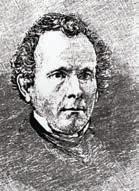
So influential were his theories that Boston’s butchers and commercial bakers protested his appearance in their city.

A lthough Rev. Graham lived only to the age of 57, his ideas had more longevity; the graham cracker, well known by the 1880s, is still one of A merica’s favorite cookies.

—“Caution: Culinary Genius at Work,” September 1986
he first organized attempt to change America’s eating habits took place more than 125 years ago, when some privileged Bostonians, reformers to the core, formed an enterprise called the New England Kitchen. Their goal was to educate the poor to eat food that was cheap, nourishing, and hygienic. The group included a chemist, Ellen Richards; a domestic scientist, Mary Hinman Abel; and a businessman, Edward Atkinson. When the first New England Kitchen opened at 142 Pleasant Street, Boston, on January 1, 1890, it was a take-out establishment. For 15 cents a meal, customers could carry away such fare as beef broth, cornmeal mush, pea soup, Indian pudding, and oatmeal cakes.
Then, as now, Boston’s neighborhoods had distinct ethnic identities, and the popularity of the Kitchen’s food depended on whether it was familiar to potential customers. Americans, English, and some Irish were said to like the dishes, whereas people living in the North End—mostly Jews, Portuguese, and Italians—were judged “incorrigible.” Not surprisingly, the New England Kitchen didn’t last long. As far as Ellen Richards was concerned, its “death knell was sounded by the woman who said, ‘I don’t want to eat what’s good for me; I’d ruther eat what I’d ruther.’”
Ironically, it did institute one major change in America’s way of eating: The Boston School Committee negotiated with the New England Kitchen to set up a central facility that could deliver meals to the city’s high schools. Ellen Richards and her crew managed to deliver soups, sandwiches, meat pies, scalloped dishes, cakes, and puddings. In this case, the Kitchen triumphed, establishing the first school-lunch program in the nation.

—“I’d Ruther Eat What I’d Ruther,” by Barbara Haber, November 1997
n 1925, Clarence Birdseye created a new era in the modern grocery industry from his headquarters in Gloucester, Massachusetts. There, this visionary of food-preservation technology perfected ways to quick-freeze fish, meat, poultry, fruits, and vegetables. Quick-freezing meant smaller ice crystals in the food; smaller crystals meant less damage to cell membranes and less loss of fluid upon defrosting. Gone were the days of soggy fish that turned dry in the skillet. The frozen-food industry was born. —A.T.


n 1978, Yankee wrote about a groundbreaking ice-cream shop in Somerville, Massachusetts. The owner was Steve Herrell, who had founded Steve’s Ice Cream in 1973, five years before Ben (Cohen) and Jerry (Greenfield) set up shop. Herrell’s genius was to mix his ice cream in a way that incorporated very little air; a gallon of his ice cream was heavier and richer than its commercial counterparts. After selling Steve’s to Joe Crugnale, who went on to also found the Bertucci’s restaurant chain, Herrell opened Herrell’s Ice Cream in Northampton, Massachusetts, where—now semiretired—he’s still using his original recipes and keeping more than 200 flavors in rotation ( herrells .com). —A.T.
Through the large, frosted storefront window customers’ eyes follow the hypnotic rotation of the White Mountain ice cream freezer on a window ledge. All the ice cream here is made with the one five-gallon ice cream freezer on that window ledge, in front of the world, one batch at a time. Relentless as the tides, 1,200 times an hour, 24 hours a day, the ice cream machine rotates, delivering like a beneficent mother. Once a group arrived after midnight, pleading to be let in. They had driven nonstop from Middlebury, Vermont, because “we had to have Steve’s ice cream.” Employees swear they get calls from airports with people gasping, “I’ve just flown in from Atlanta. Don’t close!” A California man recently wrote: “Your ice cream made my coming to Boston successful. New Englanders can talk about Walden Pond, Arthur Fiedler, and the Red Sox … to me Boston is a mouthful of Steve’s ice cream.”
—“The Best Ice Cream in the World,” by Mel Allen, July 1978

arly chowders, from the Colonial or Federal era, were made with cod or haddock; clams were a Victorian adaptation. The following recipe, which serves eight, takes you through the construction of this iconic dish. —A.T.

True chowders have a salt-pork foundation. (Without that, call it soup.) Just a 1½x1½-inch square of salt pork will do. Cut it into dice.
Slice two medium-size onions lengthwise, then thinly across the grain, for delicate half-rings.
For clams, go dig some or buy a quart of freshly shucked chowder clams with their juice. Quahogs or hen clams are good. Mince them.
Potatoes are a late-Colonial addition. One medium-size white potato, not exceeding 3 inches long, for each person is fine. Cut them lengthwise; then slice off ¼-inchthick fan-shaped pieces.
Common or pilot crackers are optional; crush 2 or 3 in your hand. Also, have salt and pepper and a teakettle of hot water on hand.
Milk is a Victorian addition. You can use whole milk, half-and-half, or even light cream for high-end chowders. Some traditional cooks like evaporated milk for the creaminess it gives, but always add it last.
In a heavy-bottomed kettle, cook the diced salt pork until the bits are crisp. Sprinkle a layer of onion a couple of half-rings deep. Spread a layer of potato slices over the onions. Sprinkle in some crushed crackers. Repeat until you use up everything. Add hot water until you can see it through the top layer. Cook, covered, over medium heat until the potatoes are tender. Stir in the clams and their juice. Bring to a gentle simmer. Meanwhile, warm the milk in a small saucepan until it’s hot but not boiling; then add to the chowder. Watch it so that it doesn’t boil; adjust seasonings.
—“Thank God for Chowder,” by Sandy Oliver, Jan./Feb. 2001
he origin stories of many popular foods are up for debate, if not downright apocryphal. So when we told the story of the fried clam in 1979, we expected our readers to weigh in. And weigh in they did. While we furthered Lawrence “Chubby” Woodman’s claim that he invented fried clams in 1916, readers shared stories of fried clams eaten in 1910. An 1865 menu from Boston’s Parker House lists fried clams, though it’s not clear whether they were breaded in Woodman’s style. In short, the fried clam’s exact origins are shrouded in the mists of time. But you can still eat delicious ones at Woodman’s, now run by the third and fourth generations of the family (woodmans.com). Following are excerpts from our 1979 controversy. —A.T.
On the reverse side of their wedding certificate, Lawrence and Bessie Woodman of Essex, Massachusetts, wrote down important family events. The first two lines listed the birthdates of their two oldest sons, Wilbur and Henry. The third notation was about another key date: “We fried the first fried clam—in the town of Essex, July 3, 1916.”
The Woodmans had opened a small stand in an old wooden building on Main Street in Essex, where on weekends they sold fruit, chewing gum, homemade potato chips, and fresh clams. A fisherman named Tarr—his first name is long forgotten—happened to be at the stand while Woodman was complaining to a couple of other customers that “business was slower than a couple of snails uphill.” Customer Tarr happened to notice a bucket of clams nearby. “Why don’t you fry your clams?” he said. “If your fried clams are as tasty as these fried potato chips of yours, you’ll never have to worry about having customers.”
Woodman began to think about Tarr’s suggestion. Supposing the clam was shucked and dipped in batter! “Let’s see what happens,” said Bessie, tossing a slab of lard into the fryer. A short time later, the first fried clam rolled off the assembly line. Woodman spotted Tarr across the street. “Come over,” he called. “I’ve got something I want you to try.”
People have been eating fried clams ever since. A year after Woodman invented them, a Boston fish market advertised that it was “now equipped to serve the new taste treat— fried clams.” —“The Man Who Invented the Fried Clam,” by Frederick John, June 1979
I don’t doubt that Mr. Woodman fried up a few clams in 1916, but my uncle, Hosea B. Quint, who had a fish market near the corner of Boston and Myrtle streets in West Lynn, fried clams every Friday in his shop as early as 1910.

—Gertrude Lawrence, West Lynn, Mass., August 1979
When she was a young woman, my now-87-year-old mother worked as a waitress in 1912 at the Chase House, Salem Willows, Massachusetts. The “Shore Dinner” consisted of fish or clam chowder, fried lobster, fried clams, fried perch, and French-fried potatoes (75¢).
—Florence L. Campbell, Arlington, Virginia, August 1979
ertha Nunan was the proprietor of Nunan’s Lobster Hut in C ape P orpoise, M aine, from 1974 to 1995. In 1979, we asked B ertha for her advice on cooking lobster, and her words have stood the test of time. B ertha passed away in 2009, but her two sons and their wives—the third generation—still run Nunan’s Lobster Hut at 9 M ills Road. nunanslobsterhut.com
—A.T. The secret to cooking lobsters is not to murder them. Give them a nice, slow, respectable way out. Don’t put them in boiling water, and don’t drown them in too much water. Boiling them in a lot of water just boils their flavor out, and too much water waterlogs them. I put in two inches of water, whether I’m cooking two lobsters or 14. I take a salt container, and with the spout open, I pour it three times around the pot; then, plop! at the end [about three teaspoons]. When the water is boiling, put in the lobsters, put the lid on, and steam them for 20 minutes. [That’s for a 1½-pounder; plan on 12–15 minutes for a 1-pounder.] That’s how Grandfather, Captain George Nunan, showed me, and I’ve done it that way ever since.
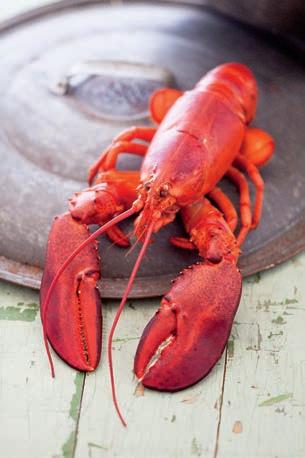

 BY LAWRENCE DAVIS-HOLLANDER
BY LAWRENCE DAVIS-HOLLANDER
hen you travel down the aisles of your local supermarket, you’re seeing the products of thousands of years of food history. Some of that history began in New England. Plants like blueberry, cranberry, and maple were cultivated by Native Americans long before Europeans arrived. Familiar edibles like the ‘Concord’ grape, ‘Butternut’ squash, even the precursor to the russet potato, were all developed here. The original sources of some of these plants might have been found in faraway places such as South America (corn, potatoes, squash), Asia (apples), and the Fertile Crescent (onions), but they developed their familiar forms in New England, thanks to the work of local Native peoples, enterprising amateur breeders, and seedsmen. Today, you can find many of these regional gifts in markets and restaurants—and you can grow them yourself.
A wide range of both summer and winter squashes, including various sizes of orange pumpkins, were developed and raised by New England’s Native peoples. The exact origin of the ‘Connecticut Field’ pumpkin is unknown, but it was certainly re selected by the colonials from a Native pumpkin. Widely grown in the 19th and 20th centuries across New England and beyond to feed livestock (it doesn’t have much flavor), it became the iconic carving pumpkin of many a childhood. Since the 1970s, it has been largely displaced by more uniform varieties. Where to find it: ‘ Connecticut Field’ is rarely grown commercially today, but seed is available from Baker Creek Heirloom Seed Co. ( rareseeds.com ), D. Landreth Seed Co. ( landrethseeds.com ), and Southern Seed Exposure ( southernexposure.com
URBA N K’ POTATO
(Solanum tuberosum)
New England was an important center of potato development in the 19th century. Albert Bressee of Hubbardton, Vermont, developed the ‘Early Rose’ potato in the 1860s, from which Luther Burbank, a native of Lunenburg, Mass., created the ‘Burbank’ potato in 1876. (He then headed west to California, where he developed the Shasta daisy and the plumcot, among other plants.)
In 1902 the ‘Burbank’ mutated and became russeted; it was thereafter known as ‘Russet Burbank’ (cleverly marketed as the Idaho potato) and became the source of the billion-dollar french-fry industry. Where to find it: ‘ Early Rose’ is sold by Potato Garden ( potato garden.com ); ‘Russet Burbank’ is sold by many companies, including Fedco Seeds in Waterville, Maine ( fedcoseeds.com ).
While America’s native grape species yielded many cultivars, it was John Bull of Concord, Mass., who changed the grape world.
Beginning in 1843, Bull experimented with more than 22,000 seedlings; out of those, he selected and named one cultivar ‘Concord’. It was hardy and reliable—and it launched the grape-juice industry. Today hundreds of thousands of tons of these grapes are produced annually. Where to find it:
‘ Concord’ grapes are sometimes available fresh, although seedless varieties have replaced them. To taste it, just buy some grape jam or juice. Plants are available from Stark Brothers ( starkbros.com ) and Double A Vineyards ( doubleavineyards.com ).

(Cucurbita moschata)
‘Butternut’ was introduced to the U.S. by Breck Seed Co. of Boston in 1936, having been bred from the ‘Canada Crookneck’. Today, you’ll find several cultivars. Some of the best known come from Waltham, Mass. Charles Leggett of Stow, Mass., bred a superior ‘Butternut’ in the 1940s, which he introduced to the University of Mass. Waltham Field Station; in 1970, the field station released an improved version. Where to find it: ‘Waltham Butternut’ is everywhere. ‘Canada Crookneck’ is available from Baker Creek Heirloom Seed Co. ( rareseeds.com
Apples have long thrived in many climates, including New England’s. The ‘Black Oxford’ first grew as a chance seedling around 1790 in Maine’s Oxford County and was later revived by Fedco Seeds co-founder John Bunker. It has purple-black skin when ripe, is excellent for fresh eating or cooking, and stores well. Where to find it: Look for it in specialty food stores and at small orchards. Trees may be purchased from Fedco Seeds ( fedcoseeds.com ).
Developed in ancient Asia and Eygpt, onions were grown by the Pilgrims as early as 1629. The ‘Large Red’ onion first appeared in 1828 in Boston; it was later grown in Wethersfield, Conn., and became associated with Wethersfield seed proprietors Comstock, Ferre & Co. Where to find it: Seed is available from Baker Creek Heirloom Seed Co. (Comstock, Ferre’s parent company, rareseeds.com ) and Southern Seed Exposure ( southernexposure.com ).
Northern flint corns were cultivated by Native Americans 1,000 years before the Pilgrims arrived. The Narra gansetts grew their flint corn in what is now Rhode Island, and it was quickly adopted by white settlers as the basis of dishes such as hasty pudding and jonnycakes.
‘Rhode Island Whitecap’ has been grown ever since. Where to find it: Jonnycake meal from Gray’s Grist Mill ( graysgristmill.com ) in Westport, Mass. (on the Adamsville, R.I., town line); Kenyon’s Grist Mill ( kenyonsgristmill.com ) in West Kingston, R.I.; local shops supplied by the Perry Grist Mill of Perryville, R.I.; Davis Farm in Pawcatuck, Conn. Seed is available from Sand Hill Preservation Center ( sandhillpreservation.com ).
‘MACOMBER’
(Brassica napobrassica)
Despite its name, the ‘Macomber’ is actually a rutabaga. Its ancestors probably arose in medieval gardens, a cross between turnips and cabbage, and were further refined in Sweden and Russia. The ‘Macomber’ was bred in Westport, Mass., by farmers Adin and Elihu Macomber around 1880, and became widely grown in fertile South County soils. Where to find it: You’ll see roots in the late fall at farmers’ markets in eastern Mass. and occasionally at specialty markets. Seed is available from Vermont Bean Seed Company ( vermontbean.com ) and Seed Savers Exchange ( seedsavers.org ).

ven though she’s been gone for more than 11 years, Julia Child remains America’s sauciest and most famous chef. Her largerthan-life personality—which found its voice first in her epic book Mastering the Art of French Cooking, then grew to a crescendo with her popular public TV shows—had its natural backdrop in her Cambridge, Massachusetts, kitchen. Thousands of viewers tuned in to see her kitchen (designed for her by her husband, Paul), which they saw as an extension of their own, and where they came to be instructed and, above all, entertained.
In 2001, when Julia, nearing 90, announced that she was returning to family roots in California, a threeperson team from the Smithsonian’s National Museum of American History hustled to see her. Paula Johnson, a curator with a special interest in the intersection of food and culture, was there. Today the kitchen is the centerpiece of the exhibition FOOD: Transforming the American Table 1950–2000, but when Johnson arrived in Cambridge, all that was still but a wishful dream. “We walked in the door,” she said, “and we’d been imagining a few objects. But when we saw the entire thing, we had a curatorial ‘mindmeld.’ We wanted it all! The kitchen revealed so much about Julia and her message. We talked with her about 5 million visitors coming through to see this, and she said yes to the American people.”
Within a few months more than 1,200 objects in 55 crates and boxes— stoves, gleaming copper pots, knives, all of it—found their way to the museum, where, when assembled, they quickly became one of the most popular exhibits. “We said, ‘Let’s unpack in front of the public,’” Johnson recalled. “We took turns going out to talk to people. People told us what Julia had meant to them.”
And when her kitchen opened to the public in August 2002, Julia Child was there. —M.A.

NUMBER 36
 BY AMY TRAVERSO
BY AMY TRAVERSO
he line outside Louis’ Lunch on a sunny Saturday is a rare Elm City cross-section: Yalies in rumpled oxfords; a pair of local girls, eyebrows red from the waxing salon; suburban families wrangling toddlers. As a trio of young men in Delta Chi shirts tumble out the red door of the tiny storefront, an older African American couple take their place inside.
The three fraternity brothers blink in daylight, Styrofoam cups of creamy, chive-studded potato salad in hand. “Yo, this is bangin’,” one says, digging in. But where’s his burger? “You gotta wait,” his buddy says. At Louis’, they cook the burgers, eight or nine at a time, in a trio of 1898 vertical broilers powered by a city gas line that ebbs and flows with demand from the rest of the street. Cooking times vary by time of day. So although you’ll be handed a drink and potato salad as soon as you ask for them, the burger may take up to 25 minutes longer. If you also order the excellent pie, which is made by owner Jeff Lassen’s wife, Kerry, and comes in flavors like peach, strawberry–rhubarb, and blueberry, good luck holding out.
But eating in New Haven—that is, in the old-school tradition, not in the farm-to-tableby-way-of-Manhattan sense—usually involves a wait. You can stand in line for pizza or stand in line for burgers. The coal-fired pies are famous: Sally’s, Modern, Frank Pepe’s. But Louis’ Lunch is equally so—because Louis’ is the birthplace of the hamburger sandwich. Or so says the Lassen family, which has owned the restaurant since the year those broilers were manufactured. Competing boosters in Athens,

Texas, and Seymour, Wisconsin, may claim their own hamburger origin sto ries, but in 1995 the Library of Con gress itself sided with the Lassens, and as far as they’re concerned, the rest is just commentary.
As the story goes, Louis Lassen, a Danish blacksmith turned food ped dler, was selling lunch from his cart one day when a harried customer asked for something he could eat on the go. Lassen slapped a ground-steak patty between two slices of toast—and the burger was born. The year was 1900, and chopped steak was already a popular dish nationwide, so it was inevitable that someone eventually would sandwich it. Or perhaps several someones, at mul tiple sites, simultaneously?
Regardless, the Louis’ staff still serves their burgers on Pepperidge Farm white bread crisped in a 1929 conveyor toaster, and they still grind the meat daily. They also eschew all condiments: no ketchup, no mustard, no special sauce. Instead, there’s lettuce, tomato, and cheese spread, if you like. That’s called a “cheese works.” Order your burger rare or well-done, but ask for ketchup and Paul DeNegre, who mans the grill, will school you in the Louis’ tradition. He might pull out a red plastic bottle and give it a squeeze, sending a length of red string shooting out across your burger toward your favorite shirt. It always gets a laugh.

On the west wall of the woodpaneled interior, there’s a sign: “This is not Burger King. You don’t get it your way. You take it my way or you don’t get the damn thing.” Sounds gruff, but the mood is cheerful: People wait patiently for seats at tables and booths carved with a century’s worth of customers’ names.
Though he’s got a line of orders that won’t quit, De Negre jokes with his customers. “Do you know why we serve Pepsi here?” he asks one. “Back in the Depression, Louis was allowed only so much Coke per week. One week, Popsi [Ken Lassen, grandson of
Louis] found out that the distributor had sold his order on the black market. So he called Pepsi and they came right down.” He spreads cheese sauce on a burger, pausing for effect. “Coke has tried to sell us since then,” he says with a twinkle. “They hold grudges in that family.”
A young man named John comes up to the counter, eyes bright, a little eager. He stumbles on his order. “Sorry, guys, I’m just excited,” he says. “I live in Boston, but I grew up here. I just got off the highway.” There’s a meal waiting for him at home, but he had to stop here first. He looks around. “This is my favorite place,” he says.
louislunch.com
Each issue, we profile an iconic New England eatery in our “Local Flavor” column. We’re looking for venues with great stories that capture the spirit of a place. Got a favorite you’d like to share? E-mail editors@yankeepub.com and put “Local Flavor” in the subject heading.
The mood is cheerful:
People wait patiently for seats at tables and booths carved with a century’s worth of customers’ names.
NUMBER 37
t’s nearing 4:00 o’clock on a Tuesday afternoon, and the second-floor dining room at Durgin–Park, a beloved Boston eatery for nearly 200 years (“Established before you were born” it says out front), is getting ready for dinner. Glasses clink behind the bar, uneven wooden floors creak, and sunlight warms the red-and-white-checked communal tables.
One of the city’s most famous spots for New England home cooking and fresh seafood, Durgin–Park benefits from a tourist-heavy location in Quincy Market (in “the dusty shadows of historic Faneuil Hall” as Yankee food editor Nancy Dixon described it in 1946) and a faithful menu of traditional comfort food.
Popular dishes include homemade Boston baked beans, Boston scrod with buttery breadcrumbs, and a signature roast prime rib so large that the bone hangs, cartoonlike, over the edge of the plate. But among customers with a sweet tooth, they’ve come for Durgin–Park’s Indian pudding.
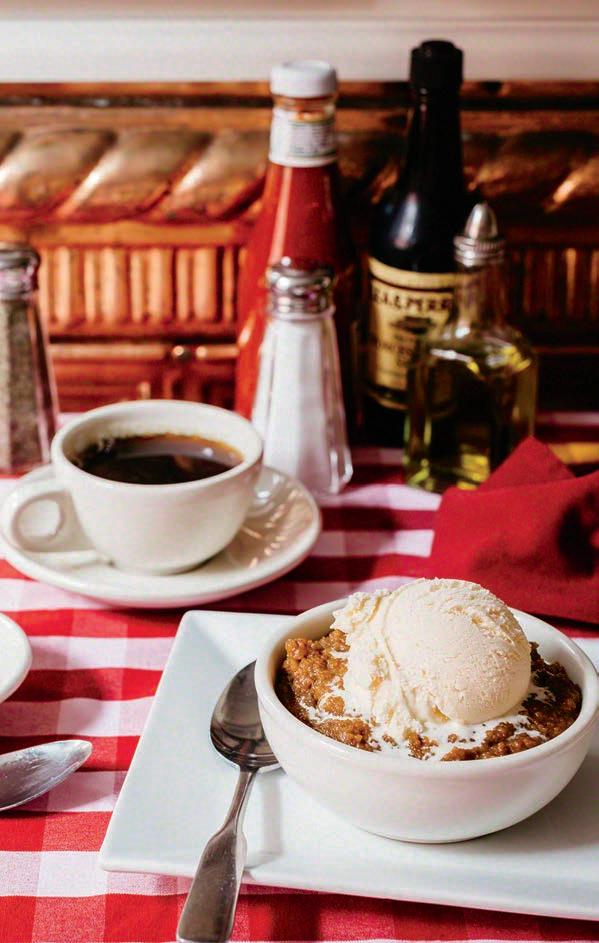
A true New England original, the pudding’s roots stretch back to the Pilgrims, as these early colonists substituted cornmeal (which they called “Indian meal”) for the traditional flour in British hasty pudding. In time, it evolved into a sweet dessert with a slightly gritty cornmeal texture and deep molasses flavor. Durgin–Park’s recipe was taken to sea by clipper-ship captains, and its authentic, rich taste has made it a favorite through the years, despite the dish’s humble appearance.
Head waitress Gina Schertzer, nearing her 40th year at the restaurant, also credits tradition. “Guests come back because they can taste
the memories, and that’s why we don’t change the recipes.” (See p. 124 for more of our conversation with Gina.) For many, Durgin–Park’s Indian pudding, served warm and topped with a scoop of vanilla ice cream, is the recipe gold standard. (The secret is “long and slow” baking in seasoned stone crocks. The long cooking time lets the cornmeal absorb more liquid, which gives the pudding a smoother texture.) Legendary road-food writing duo Jane and Michael Stern have dubbed it “the best there is.”
But is it? Well, as the saying goes, and quite literally in this case, the proof is in the pudding. Whether you make it to Durgin–Park and order a bowl, or follow the restaurant’s recipe ( RIGHT) and make a batch at home, one spoonful and we think you’ll agree: This sweet New England tradition is one worth keeping.
TOTAL TIME : ABOUT 7 HOURS ; HANDS- ON TIME : 30 MINUTES
1 cup granulated yellow cornmeal
1/2 cup black molasses
1/4 cup granulated sugar
1/4 cup lard or butter, softened, plus more for baking dish
1/4 teaspoon kosher salt
1/4 teaspoon baking soda
2 large eggs
6 cups (1 1/2 quarts) warmed whole milk, divided Garnish: freshly whipped cream or vanilla ice cream
Preheat your oven to 450° and generously grease a 2-quart baking dish, preferably one made of porcelain or stone.
Whisk together the first seven ingredients and 3 cups of the warmed milk. Bake until the mixture begins to bubble, about 10 minutes; then stir in the remaining 3 cups of milk. Reduce the heat to 275° and continue baking another 5 to 7 hours.
Serve warm with freshly whipped cream or a scoop of vanilla ice cream. Yield: 8-10 servings
DURGIN–PARK
Faneuil Hall Marketplace, 4 South Market St., Boston, MA. 617-227-2038; durgin-park.com
Each issue, we profile an iconic New England dish in our “Recipe With a History” column. We’re looking for great stories that capture the spirit of our region. Got a favorite you’d like to share? E-mail editors@yankeepub.com and put “Recipe With a History” in the subject heading.
Stairlifts. Aren’t they all the same? Getting people up and down the stairs? At Stannah we don’t agree. For example, we’ve designed chairs that fold up neatly at the push of a button, and recharge themselves constantly for reliable service. For stairs that turn we custom-make your stairlift to hug the stairs. Our outdoor model has proven itself in the toughest climates, and we have a range of options that’s second-to-none.
Providing you with good value
You can choose to buy or rent new or expertly reconditioned stairlifts, for both curved or straight staircases, with a sevenday money-back guarantee.


The leading stairlift supplier We’ve made over 600,000 stairlifts - more than any other manufacturer - and have the experience to help you make a wise decision, so take the next step - call us today!



Not all stairlifts are the same. This one certainly isn’t.

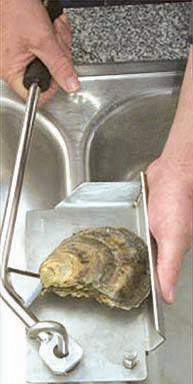
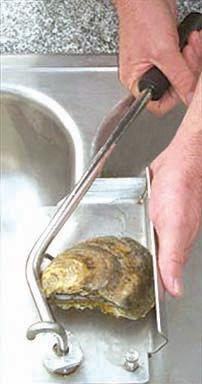






























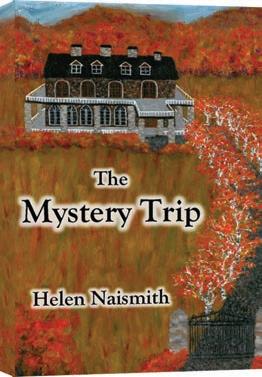





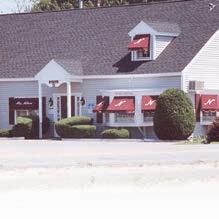







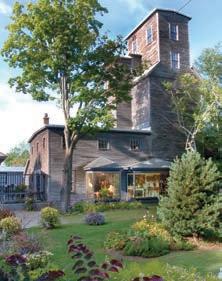


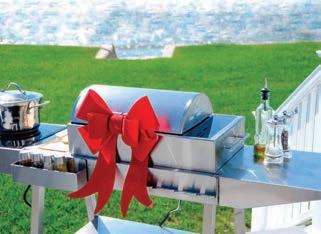








Available in Sterling with one 14K Gold Ball, all Sterling Silver or all 14K Gold. S-M-L.

















Turks Head Knot Bracelet available in Sterling or 14K Gold. S-M-L.

14K Gold Lobster Claw pendant and 14K Gold Lobster Claw and Sterling Silver bracelet. Birthstone




Sitting
Over
Satisfaction guaranteed.
Rogue Industries
1-800-786-1768
www.rogue-industries.com
Our Timeline Growth Rules are hand crafted in Maine using traditional materials and methods continuously practiced since 1869. The rules are heirloom quality. Each 6ft 6in blade is milled from select Sugar Maple, markings are engraved into the blades and filled with pigment, and the inlaid ends are machined from solid brass.
Record your child’s growth as it happens directly onto the face of the rule and record milestones and special events on the back.

This is a hoot! It’s fun, playful, and such a surprise When we discovered this new stone we knew we just had to have it It’s a salt and pepper granite with little blue azurite spheres nestled within
Allow us to ship a gift box of live lobsters, crabmeat, scallops, and other items of your choice to someone special. Your customized order will be hand-selected from only the finest seafood Maine has to offer. Shipping year-round. Gift Cards available too!
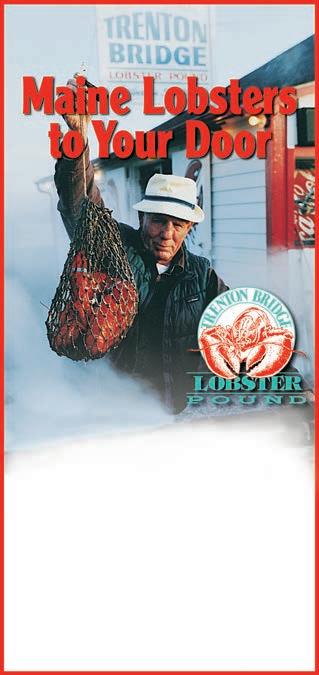
Your child’s formative years pass quickly. The growth and personal history recorded on the rule will become a symbol and celebration of your child, a memento made more precious by time.
A truly unique shower gift or birth acknowledgement.
$79 .00
Shipped free in contiguous 48 states SKOWHEGAN WOODEN RULE, INC.

(207) 474-0953
www.skowheganwoodenrule.com
Cut and polished, the blueberries appear scattered beautifully across the surface as only nature can do we’ve never seen quite anything like it Set in sterling silver with 18" chain.
Necklaces $200.00 - $650.00
Earrings $450.00 - $650.00


Every piece is different
Choose on-line or visit our store
NUMBER 38
he launch left at dawn. Easing into Provincetown Harbor, the captain turned his back to the whipping flags of Mac Millan Wharf and cut a quick path to the breakwater. The gaggle of reporters and dignitaries aboard craned their necks to catch a glimpse of their destination as she emerged from behind the stony wall. Couched in the earlymorning gloom, the Charles W. Morgan stood at anchor, as tall and still as a Scottish castle, patiently awaiting her guests.
The call had gone out the day before that even with weather brewing, the ship would sail as planned on July 15.
For everyone aboard the launch, the day promised to be a memorable one. Sailing on the Morgan would be a oncein-a-lifetime opportunity, because it’s very possible that the Morgan might never sail again in our lifetimes. The fact that she was sailing at all was a miracle five years in the making.
In the spring of 2009, while the economy wallowed in the worst of the recession, the administrators of Mystic Seaport struggled to find some plan to boost the museum’s fortunes—something that would be, as museum president Stephen White put it, “different and magnificent.” Their eyes quickly turned to the restoration of the Morgan, which had already begun the previous fall. Just to keep the ship tied to her dock, as she had been for the previous 68 years, they’d have to repair or replace everything below the waterline. How much more would it take to make her seaworthy? How much more would it take to bring her back to life? Speculation quickly turned into a plan. Once she was sound, the Morgan would sail again—the 38th voyage of her storied career—on a tour of the ports of southern New England.
On May 17, 2014, the Morgan began her passage, easing through the mouth of the Mystic River and tasting the open sea again
for the first time since 1941. At every port of call—New London, New Bedford, Vineyard Haven—she received a hero’s welcome. Now she stood poised just outside Provincetown, ready to complete the last outward-bound leg of her journey before starting back to Mystic. The care and skill of hundreds of craftsmen, sailors, and museum staffers had seen her this far; she awaited only her passengers before making the final push, racing the storm across Cape Cod Bay and then passing triumphantly through the Harbor Islands into Boston. As we passed the breakwater, the captain opened up the launch’s engines, and we sped over the last few hundred yards to the ship. The Morgan’s triple masts loomed over us, and for the first time the ship seemed truly tangible. No longer a misty dream on the horizon, she welcomed us— solid, ancient, and eager.
When the Charles W. Morgan was launched from the Jethro & Zachariah Hillman shipyard in New Bedford in 1841, she was perhaps the least-romantic ship in America’s whaling fleet. Whereas other ships were bestowed fanciful monikers, like Meteor and Sunbeam , the Morgan was christened after her chief investor, an aging Quaker with interests in several ships, whose only vision for the vessel was for her to make as much money for him as possible. The Morgan was a pragmatic ship—a business venture, pure and simple. Stretching 105 feet long and weighing 314 gross tons, she wasn’t the largest ship in the fleet or the fastest. When you see the Morgan today, her most striking feature is her stoutness; a sailor can take 15 good paces across her deck from port to starboard. Within her ample belly, she had enough room to house 38 crew members, provisions to feed them for years if need be, and space for the thousands of barrels of whale oil that would be rendered on

Within the Morgan ’s ample belly was enough room to house 38 crew members, provisions to feed them for years, and space for thousands of barrels of whale oil.

her deck during the voyage. She was a factory, a barracks, and a warehouse all rolled into one floating (and, one could presume, fetid ) package.
Between the years 1841 and 1921, the Morgan had a distinguished career, making 36 voyages for various owners and hunting whales across every ocean. She was profitable, too. The flesh-andblood Charles W. Morgan more than recouped his investment on her very first voyage. But it wasn’t the fortunes she made for her owners that led to her present fame. It was, rather, the attribute most cherished by the lowly seamen who manned her: her uncanny ability to not sink
At its peak in 1846, the American whaling fleet was 736 vessels strong, but that number quickly shrank after the Civil War. Ships were either wrecked or retired as petroleum began replacing whale oil as the country’s fuel of choice. When the Wanderer ripped
apart on the rocks of Cuttyhunk Island in 1924, the Morgan became the last surviving member of this once-august fleet. Overnight she’d gone from being a semi-retired barque to an American treasure, and people began wondering what to do with her.

The Morgan began her second life as a museum in Dartmouth, Massachusetts, where she was displayed on the private estate of Colonel E. H. R. Green from 1925 to 1936. After Green’s death (and the resultant wrangling over his will), the ship passed to the Marine Historical Association of Mystic, Connecticut, the nascent group that would become modern Mystic Seaport. Founded by old seamen and dedicated to preserving the last vestiges of the rapidly disappearing age of wooden ships, the group made the Morgan the cornerstone of their collection, and it remains so today. It’s common to hear workers at the museum refer to her as “the crown jewel.”
And so it comes as no surprise that when Stephen White announced at an all-staff meeting in 2009 his plan to sail the Morgan , the news was met with a resounding, universal gasp. “An
At every port of call—New London, New Bedford, Vineyard Haven— she received a hero’s welcome.
exclamation without words,” he recalls. “Just air coming out of people’s lungs.”
The idea was radical, to say the least. So much of modern preservation involves taking artifacts out of the world: You store them in climatecontrolled rooms and acid-free environments; you shelter them from salt, moisture, and direct sunlight; you lovingly rest them on softer and softer pieces of velvet under ever-thicker panes of glass. What you don’t do— what you never do—is throw them into the ocean.
Shortly into our crossing, the morning gloom evolved into a thick and pervasive fog. The world seemed to have shrunk, and anything more than a few hundred yards away disappeared into the churning whiteness. The Roann , a restored Eastern-rig dragger that was serving as the Morgan ’s support vessel, skirted behind the ship at the edge of our vision, flickering in and out of the veil. I couldn’t help but wonder how ghostly our ship must have looked from her deck.
There’s nothing on earth so much like crossing the river Styx as sailing through a New England fog bank; the experience makes it easy to understand why sailors crafted so many superstitions around their work. In an age before satellite phones and Coast Guard rescue helicopters, any illusion of control would be a balm, especially at times like this. Cut off from the world with no idea of what lay ahead of you, it might be enough for a sailor to begin questioning his line of work.
If any such doubts troubled the head of Captain Richard “Kip” Files, no evidence of it emerged from behind his bristling mustache and black sunglasses. Leaning against the gunwale and gazing out into the gray, he looked completely in his element.
If it’s possible for anyone today to be overqualified to captain a 19th-
century whaleship, Mystic Seaport might have found its man in Kip Files. He’s spent most of the last 25 years captaining tall ships, many with pedigrees as impressive as the Morgan ’s. His own ship, the windjammer Victory Chimes, is, like the Morgan , a National Historic Landmark. Stomping about the deck like a man confident that he’s standing on a ship, not in a museum, he doesn’t quake before the responsibility of captaining a piece of history.
“I don’t look at it as a piece of china
on a display table,” he said between blasts from the foghorn. “She’s strong enough to do what we’re doing.”
That strength was never taken for granted. When the idea to sail the Morgan was first floated in 2009, Mystic Seaport organized a committee to study the proposal and, effectively, to talk the museum out of it. “Prove to me that this isn’t the best thing to do,” is how Stephen White recalled their mission.
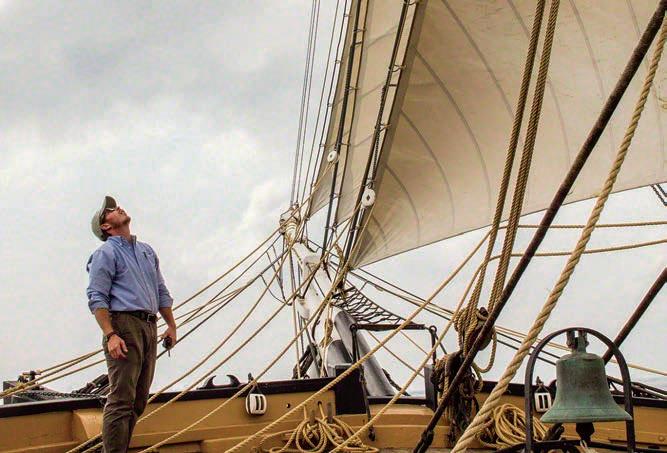
(continued on p. 136)


n the spring of 1954, Milton Graton landed a job that would change his life and the fate of covered bridges around the country, New England especially. A structure mover out of Ashland, New Hampshire, the 46-year-old Graton was a large-scale hauler, moving buildings mainly.
Which is how he ended up in Rumney, New Hampshire, home to a dilapidated, century-old covered bridge that for many years had sat neglected and unused. The bridge was now in private hands, and the owner wanted it moved to another part of town, where it was to be converted into a gift shop. But on the night of July 3, 1954, just a day before work was set to begin, the old bridge collapsed into the Baker River. Now the owner needed it gone. So Graton bought the remains, with an eye toward one day using the still-good timbers. As he worked, he came to admire the bridge’s construction. In many places the joinery had remained so tight that a century of sunlight had failed to penetrate the seams and discolor the wood. By the time Graton had hauled every scrap of wood out of the river, he now felt an obligation to protect it. “I was convinced at that time that to preserve the work of these great, honest, and true carpenters of 100 years ago was the duty of every good citizen who would save for posterity that which would never again be reproduced,” he wrote later in his book, The Last of the Covered Bridge Builders.
With his oldest son, Arnold, Graton took on the work around the country that nobody else could do, or, owing to tight town budgets, wanted to. The Gratons strove to replicate how the bridges had originally been built. They preferred hand tools over power machinery, pulled the structures into place with teams of oxen, and cinched together the framing with long wooden pegs, called trunnels, which they milled themselves. Crowds gathered to watch them work, and parties broke out as the men pulled the renovated bridges into place. In Woodstock, Vermont, in 1968, the Gratons built the Middle Bridge, the first new covered bridge constructed in this country in the 20th century. It was 20 degrees below zero when father and son pounded in the last of the roof shingles.
When age slowed Milton down, Arnold helmed the projects. Then, when Milton passed away in 1994, his son became the face of the business. In all, Arnold has rehabbed more than 70 covered bridges and built another 16 new ones from scratch. And their importance means as much to him as they did to his dad. “I think it’s important to have a history behind us that we can use as we go ahead,” he said.
As it was to Milton, bridge renovation is more than just carpentry to Arnold. That’s because the bridges themselves are more than just timbers and trunnels. How they were built, why they were built, tell a story: about how we once lived, how we worked, how we made things. In rural towns all across New England, covered bridges transformed communities. They shortened travel between family members, brought farmers closer to markets, and just made the world a little bigger for so many 19th-century Americans. But once a bridge is gone, a lot of that heritage vanishes with it.
“I can’t think of any builders who’ve done as much for covered-bridge work as the Gratons,” notes David Wright, longtime president of the Vermont-based National Society for the Preservation of Covered Bridges. “The original old bridges would have been erased. They might have looked like covered bridges, but because they weren’t renovated exactly how they were built, they wouldn’t have been the same.”
—“The Man Who Saves Covered Bridges,” by Ian Aldrich, September/October 2013

‘ve visited the USS Constitution during school vacations, crowded with chattering kids. I once sat in an open gunport, close to the water, during one of her annual turnaround cruises. I’ve seen the venerable frigate from below, when she was in dry dock, and I’ve touched her massive keel. But my most memorable visit of all was during a snowstorm.
It was the winter of 1968–69. I was a freshman at Harvard, and I’d invited a girl I knew at Smith to come visit me in Cambridge during the January break. I wasn’t very suave, but I liked history. So instead of taking her to a restaurant and a show, I took her to the old Charlestown Navy Yard.
We rode the T from Harvard to Haymarket and walked across the Charlestown Bridge. The snow was coming down hard in big, fluffy flakes. It was like being inside a snow globe.
It seems to me now that we were the only visitors onboard. Snow lay heaped on the wooden deck, on the cannon, on the flat hats of the sailors in their 19thcentury garb. Belowdecks it was warm and smelled of varnished wood. The snow blotted out the sight of modern Boston. We could hear the wind sighing through the standing rigging and the slosh of the harbor chop. It was as close as one could come to being onboard the Constitution in 1812.
I barely remember that girl’s face. But still I see the oily black water, the blanketed decks, and the tall masts disappearing into the white whirl.
—“Old Ironsides in the Snow,” by Tim Clark, January 1999
Governors and congressmen, Revolutionary patriots and Civil War heroes, shoemakers and homemakers, mill owners and ministers, rest together at Pine Hill Cemetery, founded in 1731 in Dover, New Hampshire.
Governors and congressmen, Revolutionary patriots and Civil War heroes, shoemakers and homemakers, mill owners and ministers, rest together at Pine Hill Cemetery, founded in Dover, New Hampshire.

ot far from the house where I grew up in Bath, Maine, was a graveyard. It lay perhaps half a mile from my home, across a large field, through a dense line of trees, on the far side of a stream that ran from there to the sea. The only way to cross to it was along either of two trees that had fallen from opposite banks, one in each direction, like parallel bridges. The gravestones stood on a small rise above the rushing water. It was unlike the graveyards in town; there was no manicured lawn, no neat rows of shiny marble headstones. This graveyard was older, for one thing, put there by the farmers and shipbuilders and sea captains who built the town.
The oldest markers were for the youngest dead. The very first was for a baby, born and died in 1806. Nearby lay a mother who had died in her twenties, with three of her babies buried at her feet. The children’s markers were made of slate, and on some, the names and dates had flaked off. The grand granite monuments were reserved for the heads of the families buried there: Crawford and Timmins are the names I remember. One man lived into his nineties, and a small brass disc marked him as a
veteran of the Revolution. Next to him a marker stood over a son killed in the heat of Antietam.
For all the tragedy of the stories in those stones, the graveyard was a restful place. It was lost, buried in the woods away from every house, except the one the beavers had built upstream. Trees had grown to reclaim the hill; one stone was half embraced by an oak that must have been a sapling a century after the grave had been dug. Veils of light drifted down through the canopy to lie across the faces of the stones. Most of the stones were heaved and shifted by root and rock, so that it was hard to imagine anything but earth buried beneath them.
There were no flowers on the graves. I don’t remember any Crawfords or Timminses left in the area to care. The graveyard seemed better to me for having been forgotten; the dead there were long at rest, and the living no longer grieved their passing. History lay gently on that hill, a reminder that the place I was from had long been lived in—and would be no worse for my having been there.
—“Buried in the Woods,” by Don Weafer, March 2000

ight shines brightly on Zaccharias Walker’s house, built in 1691 in Woodbury, Connecticut. We know Zaccharias built it, because the small wooden marker at the corner of this handsome white chunk of Colonial history tells us so. His house has weathered sun, rain, and snow for 325 years, alongside dozens more antique homes along this pretty Main Street: monuments to our past, many marked with similar plaques, named and dated, the living counterparts of the weathering tombstones that often tilt in a cemetery not far away. They speak of the townspeople who walked these streets of Woodbury, exactly as we’re walking here today.
The burgundy Colonial not far from Zaccharias’s, for instance, belonged to Hezekiah Thompson, who built it in 1760, 13 years before the Boston Tea Party. we wonder as we walk by. Or Moses Brown, for that matter, who built his elegant home in 1794 in Newburyport, Massachusetts. “Sea Captain,” reads his plaque. A whiff of tangible past. Remington Straight built his Wickford, Rhode Island, residence in 1882. Their names conjure images of somber beards and straight backs: men who built a country.
We walk these streets, past these dwellings, making their spaces our own. Today’s owners are proud of those names from long ago, a daily reminder of those who came before, even as they too become part of the story. Here is where we live, side by side, with our region’s past, where we meet our history every day, and wonder. —Annie
Graves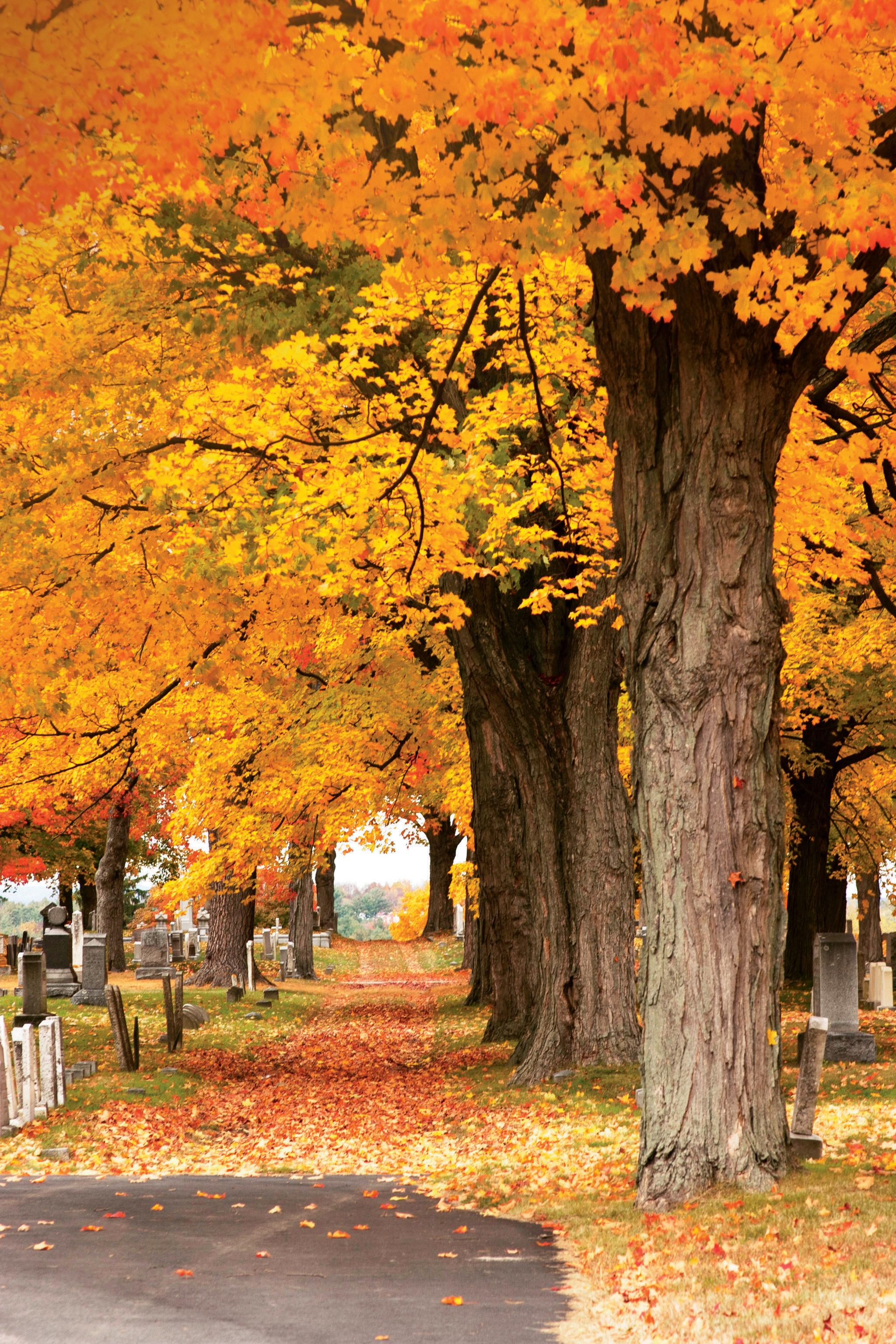
NUMBER 43
n July 18, 1863, the 54th Massachusetts Volunteer Infantry Regiment found itself in front of Fort Wagner—one of the strongest earthworks ever constructed. Built to protect Charleston, South Carolina, Wagner contained 1,700 Confederates. This was the moment that Colonel Robert Gould Shaw and his regiment had worked for and planned for—a major assault. The 54th was unique: the first black regiment ever raised in the Northern states. Despite the perception that black troops were not up to fighting, the Boston-born Shaw, a white man, knew that his men were the equal of any in the Union Army.
As dusk fell, Shaw ordered his regiment, about 600 men, to lie down with bayonets fixed. During lulls in the cannonfire, the men could hear waves breaking on the beach. Shaw moved quietly among his troops. “I want you to prove yourselves,” he told them. “The eyes of thousands will look on what you do tonight.”
At 7:45 the waiting ended, as Shaw moved to the center of the line. “Move in quick time until within 100 yards of the fort,” he ordered. “Then doublequick and charge!” Two hundred yards from the fort, the night exploded. Men began to fall; the survivors closed up and doubled the pace. The southeast bastion loomed up in the dark. Shaw clambered up the wall, the remnants of his regiment close on his heels. Gaining the crest he cried, “Forward, Fifty-Fourth!”
Those men who had survived the dash to the wall found themselves caught in a death trap. They were too few, the defenders too many. Still, they fought with bullet, bayonet, and musket butt. In less than an hour the regiment suffered more than 30 percent
OPPOSITE : Sergeant Henry F. Steward (c. 1840–1863) was a Michigan farmer who made his way to Boston and enlisted in the 54th Massachusetts, for which he also recruited additional volunteers. He was wounded during the assault on Fort Wagner on July 18, 1863, and died of dysentery in September at the camp hospital on Morris Island, South Carolina.
losses, including its leader, Colonel Shaw, shot through the chest.
Though it meant his death and the death of many of his troops, Shaw’s confidence in his black soldiers was borne out by the events of that awful night. Even doomed, the regiment had fought with incredible tenacity, removing all doubt that black men would and could fight. He and his men had paved the way for widespread acceptance of the black soldier. By war’s end, 180,000 blacks were in uniform, nearly 10 percent of the Federal forces. They won 17 Medals of Honor, and in Lincoln’s opinion they tipped the balance in favor of the Union.
In accepting command of the 54th Massachusetts, Shaw had believed it his task to help his men prove “that a Negro can be made into a good soldier.” He had acted according to his conscience—and history proved him right.
— “Forward, Fifty-Fourth!”
by James Hallas, July 1981or five nights in September 1990, Americans watched, transfi xed, Ken Burns’s PBS series The Civil War. We had never seen the conflict through eyes as compassionate and as cinematic as the film Burns had created from his Walpole, New Hampshire, studio. His war was about not just battles, but also ordinary people swept up in causes beyond themselves. Burns shot more than 150 hours of film, but none more memorable or more enduring than the narrated words of a letter written by Sullivan Ballou, a Rhode Island captain, to his wife, Sarah, just before he would die at Bull Run: Sarah, my love for you is deathless … and yet my love of Country comes over me like a strong wind and bears me unresistibly on with all these chains to the battlefield …
But, O Sarah! If the dead can come back to this earth and flit unseen around those they loved, I shall always be near you; in the garish day and darkest night … and if there be a soft breeze upon your cheek, it shall be my breath, or the cool air fans your throbbing temple, it shall be my spirit passing by. Sarah, do not mourn me dead; think I am gone and wait for thee, for we shall meet again …
“I carry [a copy of] Sullivan Ballou’s letter around in my wallet,” Burns told Yankee’s Tim Clark just before the series began. “When people ask me why the Civil War happened, I pull it out and read it to them. We begin to appreciate a special quality of the people who lived in the 19th century, their attitude toward things like duty and honor and bravery.” —Eds.






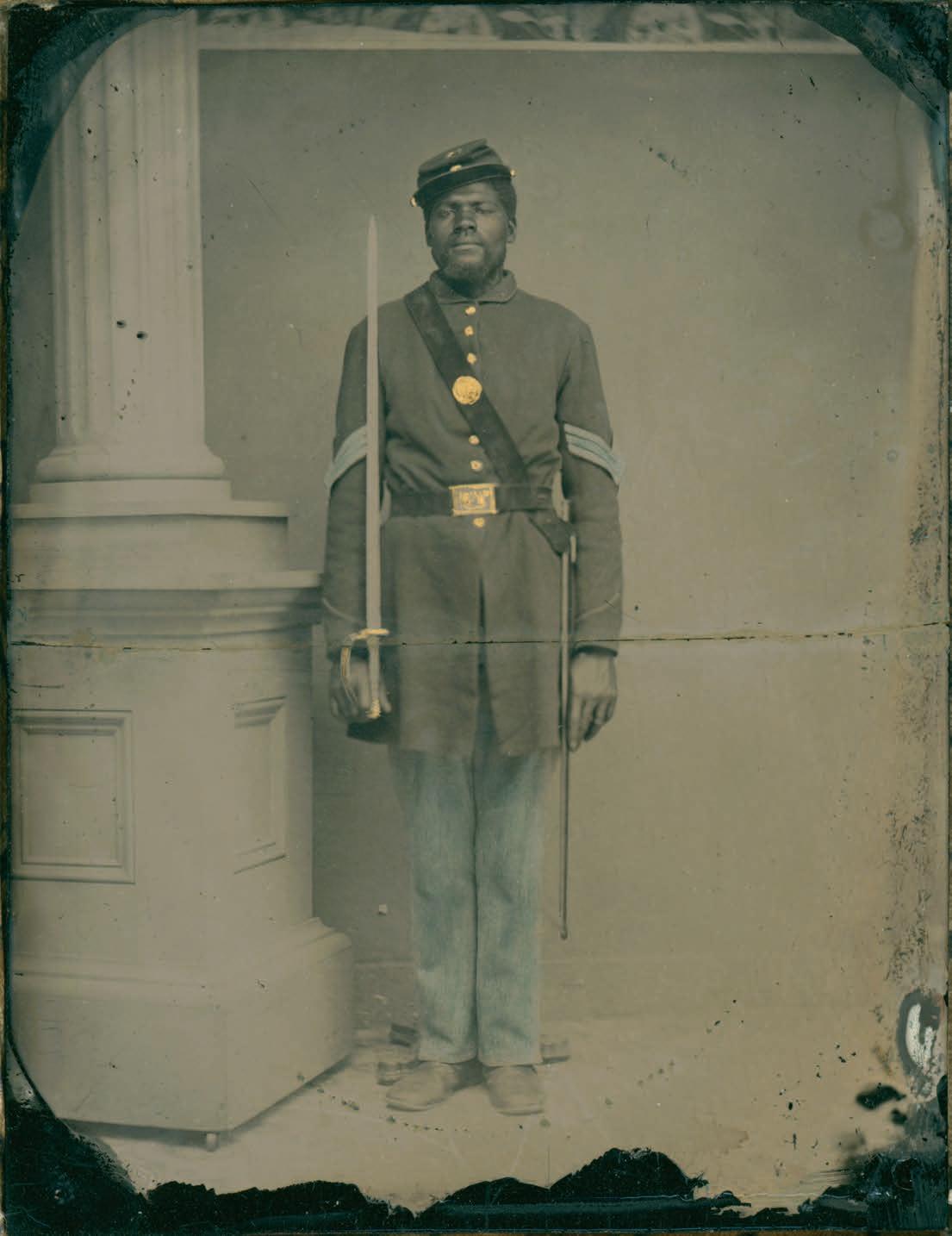

NUMBER 45
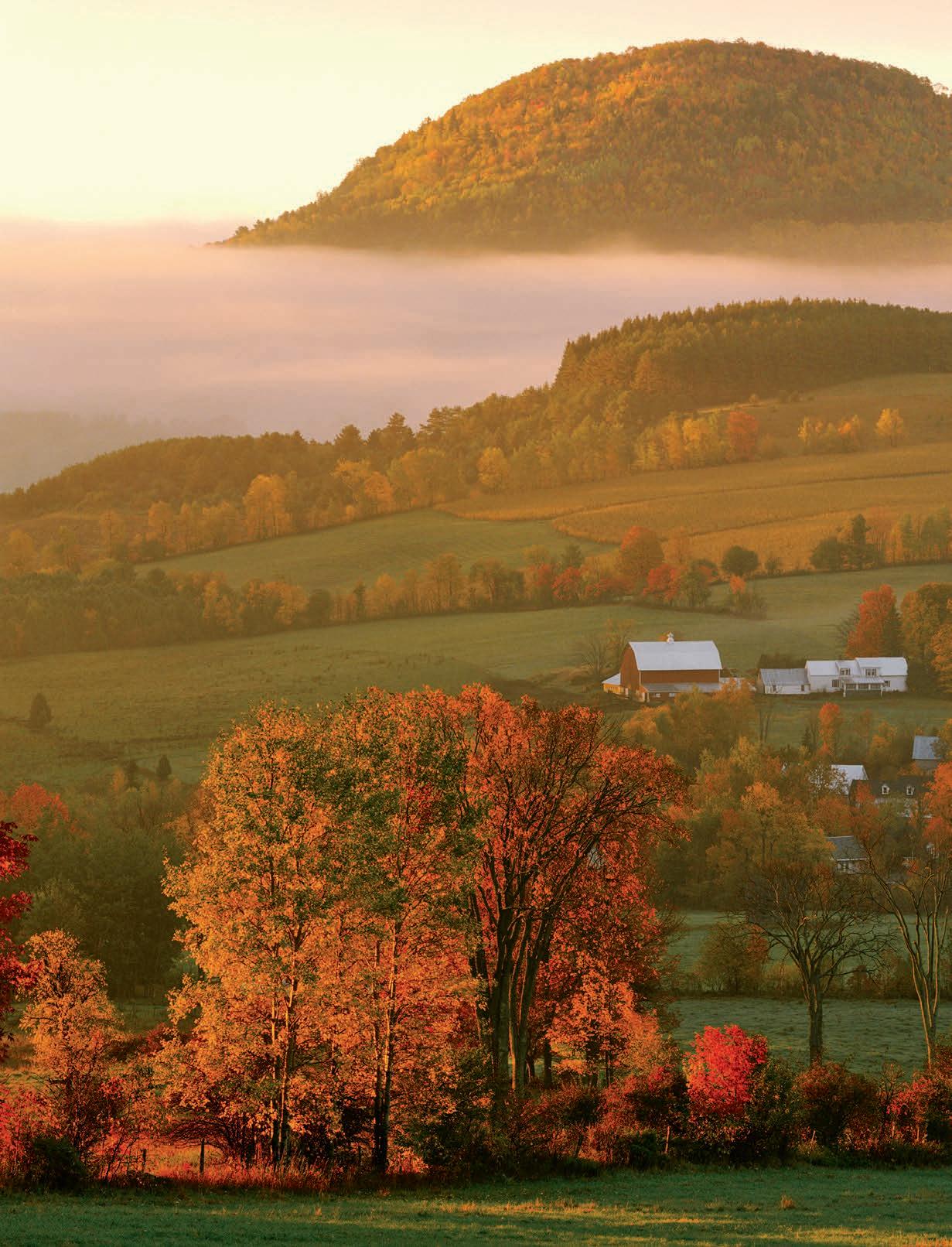
he slow fire spreads from the blazing maples to the gold of the birches on our high slopes. The threat of winter is not yet upon the land, but rather a sense of awakening from the sultry bondage of summer—and the Red Gods call. The smell of burning leaves in the still dusk, the bells of night-wandering cattle, brittle limbs on enormous moons, mists aglow in the valleys—these and a hundred such will always be New England October. And to them even the dullest heart must make some answer.
—“October,” by Ben Rice, October 1945

A misty fall sunrise amid brilliant autumn color in Peacham, Vermont. This is one of a series of images that photographer Richard Brown took when he first moved to Peacham 44 years ago. “As a fledgling professional photographer, I loved moments like these,” he says, “and felt very lucky to find them almost at my doorstep.”
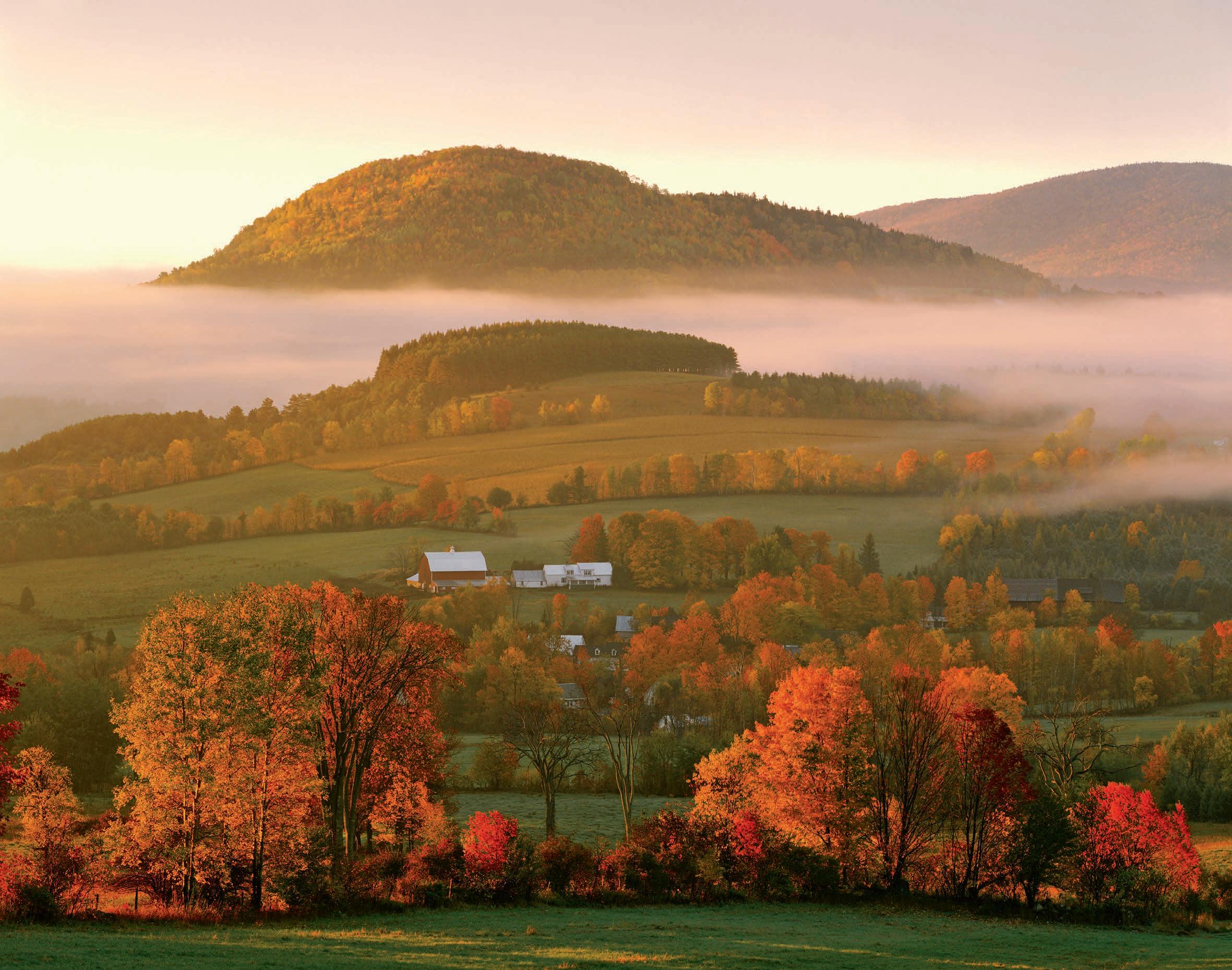
NUMBER 46
e’d been climbing Katahdin in the near darkness, lighting our way from Chimney Pond over the boulderstrewn Saddle Trail by flashlight, then by the breaking dawn. On the plateau we paused. My companion, Irvin “Buzz” Caverly Jr., had seen this view hundreds of times. He didn’t gush about its beauty; his feelings ran deeper than that. Instead he said simply, “This place doesn’t need advertising, does it?”
“This place” is Baxter State Park, that big green patch in the center of a map of Maine, about 60 miles north of Bangor, and nobody alive knows it the way Buzz Caverly does. He first came here as a ranger in 1960 at age 21 and didn’t leave until his retirement as park
director in 2005. Of Baxter State Park’s 47 mountain peaks and ridges, of its 160 miles of trails, of its more than 200,000 acres, he’ll speak as intimately as another man might of his backyard.

Buzz Caverly was the last ranger who knew the remarkable Percival P. Baxter, who gave the park and its centerpiece, Mount Katahdin, to the people of Maine along with this enduring message: “Man is born to die. His works are short-lived. Buildings crumble. Monuments decay, wealth vanishes, but Katahdin in all its glory forever shall remain the mountain of the people of Maine.”
On the plateau I asked Buzz Caverly a question: If he were someday told that he would be allowed just one more
day’s camping here, where would he choose? His face grew pained. “First of all,” he said, “I’d fight to stay.” But when pressed, he spoke about Russell Pond Campground as though it were sacred ground: “You’re seven miles in by foot, so already you have solitude. If I don’t want to fish, I can hike. If I don’t want to hike, I can swim. If I don’t want to swim, I can take a canoe and paddle the lake. If I don’t want to canoe, I can climb Lookout Rock, or I can climb Katahdin. If I don’t want to climb Katahdin, I can go have a nap and listen to the wind blowing through. And if I don’t want to go to bed at night, the whippoorwills are going to put me to sleep. Now what else do you want for a life?” — M.A.
NUMBER 47
n New England there’s cold and then there’s “braggin’ cold,” and those who live in the North Country know what that difference feels like. But there’s one particular kind of person who knows all about “braggin’ wind”: the weather observers who live and work on the 6,288-foot summit of Mount Washington in New Hampshire. Their names have changed many times since the observatory opened in 1932, but not their motivation: to witness and record weather through mild days and days of almost unfathomable storms and cold. And no one else has ever witnessed what Salvatore Pagliuca, Alex McKenzie, and Wendell Stephenson (left to right in the photo at top) did on Thursday, April 12, 1934.
A fierce storm was building, flowing toward the mountain from the southeast. At 4:00 a.m. Stephenson fought through frigid winds to hammer ice off the exposed anemometer on the instrument tower. “There was no doubt this morning,” Sal Pagliuca entered into the logbook, “that a super hurricane, Mt. Washington style, was in full development.” At 1:21 p.m. came a wind no human had
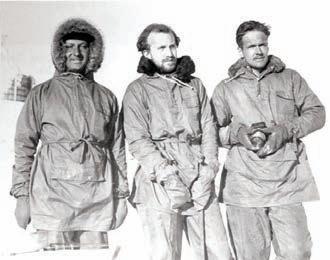
ever known: 231 mph. In meteorological terms it became the “highest natural wind velocity ever officially recorded by means of an anemometer, anywhere in the world.” After checking and double-checking his measurements, Pagliuca logged: “Will they believe it?”
In 1996 an unmanned station on Australia’s Barrow Island recorded 253 mph during a typhoon, but no one was there to feel the shaking, to hear its blistering sound. The weather observers on Mount Washington on that April day forever staked a claim that this place was home to some of the most savage weather anywhere—and braggin’ wind became part of the lore and the lure of being there, hoping for another. —M.A.


48
Whenever the most powerful (and stressed) leaders of the free world need to escape the (White) house and the (Oval) office for a spell, they’ve looked to New England for welcome respite.
John Adams
Quincy, MA
John Quincy Adams Quincy, MA
Chester Arthur Newport, RI
Grover Cleveland Bourne, MA
William Howard Taft
Beverly, MA
Woodrow Wilson
Cornish, NH
Calvin Coolidge
Plymouth Notch, VT
Dwight D.
Eisenhower
Newport, RI
John F. Kennedy
Hyannis, MA; Newport, RI; Maine coast
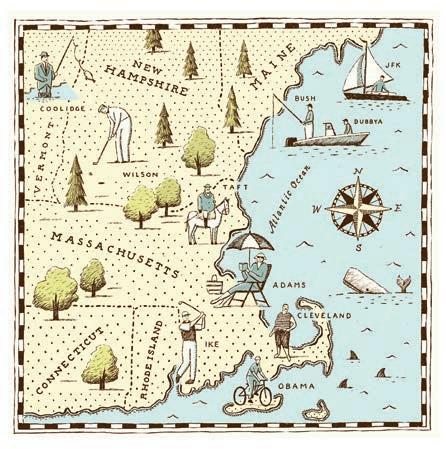
George H. W. Bush
Kennebunkport, ME
Bill Clinton
Martha’s Vineyard
Barack Obama
Martha’s Vineyard

NUMBER 49
he mosaic-making robot doesn’t have fingers, just a single suction cup that has a sure touch with glass and ceramic tiles. It plucks them from a tray and places them into a 12-inch-by-12-inch grid, creating abstract patterns or recognizable images. Standing next to the steel cage that houses the robot is Ted Acworth. He points to a nextgeneration robot across the room.
now. Just across the water from Artaic was the shipyard where Donald McKay built the fastest vehicles on earth—clipper ships—in the mid-1800s. Go up the Charles River a half-mile and you’re at the Massachusetts Institute of Technology, whose labs designed the radar systems that helped the Allies win World War II, and also the guidance computer that helped Apollo spacecraft reach the moon. Farther up the river in Waltham
ties, and give them a century or three to get very good at attracting the best professors and the smartest students, and also research money from government agencies and large corporations. When students or professors start businesses, make sure there are investors nearby willing to take risks on unproven ideas. Lawyers who can file patents are essential, as is cheap office space in old mill complexes or Army warehouses.
“It’s 10 to 20 times faster than the original one,” he says, “but we haven’t filed the patents on it—so no pictures.”
If Acworth had started a company two centuries earlier, no doubt it would have been a water-powered textile mill, turning the craft of weaving into a highvolume business. In 2015, his company, Artaic, is having much the same effect, reducing the cost and speeding up the time required to create a customdesigned mosaic for an office lobby or the master bath of a vacation home.
Artaic and the other start-up businesses that are its neighbors in a former Army supply depot on the edge of Boston Harbor are only the youngest shoots from a tree that has been growing in New England for a few centuries
is Route 128, the highway that in the 1980s was home to many of the companies that first introduced computers and productivity software to the workplace.
New England doesn’t have a monopoly on ingenuity and entrepreneurial drive, of course, but we’ve been at it longer than many parts of the world. And almost every week, you can bump into a delegation visiting from Madrid or Dubai, poking into Harvard’s labs and the start-up workspaces nearby, trying to figure out the formula that produces both important scientific breakthroughs—such as cancer-hunting nanoparticles—and also high-paying jobs.
The formula isn’t complicated, just very hard to copy: start a few universi-
It gave us the telephone; Alexander Graham Bell was a Boston University professor renting cheap space above a telegraph supply shop. It gave us The Wizard of Oz ; two of the three founders of Technicolor were MIT alumni whose first office was in a railroad car, so they could hook it to a train and go wherever someone might be crazy enough to want to make a motion picture in color. Harvard was less supportive of entrepreneurial faculty in the 1980s than it is today, so one of the founders of Biogen left his teaching position for a few years to help pioneer the modern biotech industry. The company today sells several drugs that treat multiple sclerosis, and may be getting close to one that slows the progress of Alzheimer’s disease.
The formula for innovation isn't complicated, just very hard to copy: start a few universities, and give them a century or three to get very good at attracting the best professors and the smartest students, and also research money.
Most of New England’s entrepreneurial activity orbits university campuses like electrons. In Burlington, Vermont, a team of recent Middlebury College graduates is building software that can convert architectural plans into three-dimensional digital
environments; put on a virtual reality headset and you can amble through structures that haven’t been built yet, turning your head to see out windows or down hallways. In Manchester, Southern New Hampshire University is filling brick mill buildings with soft-

THE FRICTION MATCH In 1834 Daniel Chapin sold his first matches door to door in Chicopee, Massachusetts.
THE MONKEY WRENCH With Loring Coes’s 1841 invention in Worcester, Massachusetts, a workman had only one tool to misplace.
THE STONE CRUSHER The father of America’s highways is Eli Whitney Blake of New Haven, Connecticut, who had his brainstorm in 1851.
THE BOARD GAME Milton Bradley introduced The Checkered Game of Life in 1866 in Springfield, Massachusetts.
THE PAPER BAG Patented by Luther C. Crowell from West Dennis, Massachusetts, in 1872.
THE AUTO AGE The auto industry was born not in Detroit, but in New England. The two-stroke internal-combustion engine was patented in 1872 by George Brayton of Boston, and the first commercially produced automobile came from the Duryea Motor Wagon Company in Springfield, Massachusetts, in 1895.
THE EARMUFF Chester Greenwood, the pride of Farmington, Maine, invented the earmuff in 1873, at the age of 15. Farmington’s annual Chester Greenwood Day parade is held on the first Saturday in December.
THE SNOW SHOVEL Charles A. Way, from North Charlestown, New Hampshire, added the metal clasp that holds the handle to the snow shovel in 1877.
THE BALLPOINT PEN Patented by John J. Loud of Weymouth, Massachusetts, in 1888.
THE DISPOSABLE RAZOR The idea came to King Gillette one morning in 1895 while shaving. It wasn’t until 1906 that the invention took the country by storm.
THE WOODEN GOLF TEE George F. Grant was Harvard’s first African American professor; prior to his 1899 invention, Boston golfers teed off from piles of sand pushed into a pyramid.
THE SNOWMOBILE In West Ossipee, New Hampshire, V. D. White added caterpillar treads and ski runners to a Ford body in 1913.
THE MICROWAVE OVEN Percy L. Spencer, born in Howland, Maine, left school in the fifth grade but became known as one of the most innovative minds of his day; he’s credited with inventing the microwave oven while working for Raytheon. In 1947 Raytheon produced the first Radar Range.
—“Fifty Amazing Things That Made a Difference,” by Bob Trebilcock, September 1985
ware developers, designers, and counselors who run two different online colleges, with faculty and students across North America. Two Brown University seniors built a website that would collect orders for T-shirts and produce them only when enough orders came in; they’ve now raised more than $55 million in venture-capital funding for their company, Teespring, headquartered in Providence.
A few blocks from the heart of the MIT campus in Cambridge, there’s a two-story brick building called LabCentral that’s filled with 29 young biotech businesses that share expensive lab equipment. One tenant is Vaxess Technologies, which is using a protein found in silk to stabilize vaccines, so that they can be transported and stored without refrigeration. The founders are from Harvard, though the original scientific breakthrough was made by professors at Tufts University.
Leading a tour of LabCentral, cofounder Johannes Fruehauf mentions that one of the building’s prior tenants was Edwin Land, the inventor of instant photography, who maintained his private research lab here. But as is often the case in New England, there are layers beneath layers. Before Land’s lab, the building was on one end of the first “long distance” telephone call, between Alexander Graham Bell in Boston and his assistant, Thomas Watson, in Cambridge. And the rails that serve as lintels for many of the building’s windows refer back to the original tenant: Kimball & Davenport, the first builder of passenger railroad cars in America.
The building, and the region, has always been home to “people who aspire to do great things,” in Fruehauf’s words. And something about the history, Fruehauf says, needles his tenants a bit when they show up to work every morning: “Guys, there have been smart people here before you. You’ve got to live up to the challenge.”
—Scott KirsnerNUMBER 50
ne day in 1948 a woman named Mary H. Sullivan became the very first Framing- ham Heart Study participant. More than 11,000 participants later, the people of Framingham, Massachusetts, 21 miles down the Mass. Turnpike from Boston, still troop along to the clinic to be studied. In all these years, the Heart Study has never treated anyone, and yet these participants have changed the way we live and die, for which we, the people of the United States, owe them, the people of Framingham, a great debt.
In world medicine
Framingham is famous for “the Study,” as everyone in town calls it: the longest- running and arguably the most productive public- health research project in American history. For most of that time, the Study has been federally funded, but for all of its lifetime, it has run on pure altruism. The altruists are the ones in bathrobes and slippers shuf- fling around a cramped former convent near down- town Framingham. They wear their laurels lightly. The participants have always come here on their own time, receiving neither pay nor direct benefits. They go to the clinic periodi- cally to be stuck, prodded, “imaged,” sampled, and intensely questioned for the good of humankind.
“Framingham data” have been published in hun- dreds of scientific papers and cited in thousands more. Framingham data established the connection between high blood pressure and stroke. Present yourself today with a blood pressure of 140/90 and your doctor will probably start bugging you about being “hypertensive.” That’s Framingham data. Framingham unequivocally linked cigarette smoking to coronary artery disease, giving the U.S. Surgeon General the ammunition in 1964 to move against smoking—not just as a cancer risk, but as a threat to the American heart. When the tobacco companies countered with low-tar and strongly filtered brands, Framingham data demolished the notion of a “safe” cigarette.
Framingham data also gave us new kinds of guilt. The Study demonstrated that inactivity was linked to stroke, pushing millions of chair-bound Americans into running shoes. Most notoriously, Framingham added the word cholesterol to the common tongue; ice cream, bacon, and steak have never tasted the same.
April 1952: Epidemiologist
Framingham data later refined cho- lesterol into “good” and “bad” compo- nents: high-density lipids, or HDL, versus low-density lipids, or LDL. The ratio of the two lipids as well as
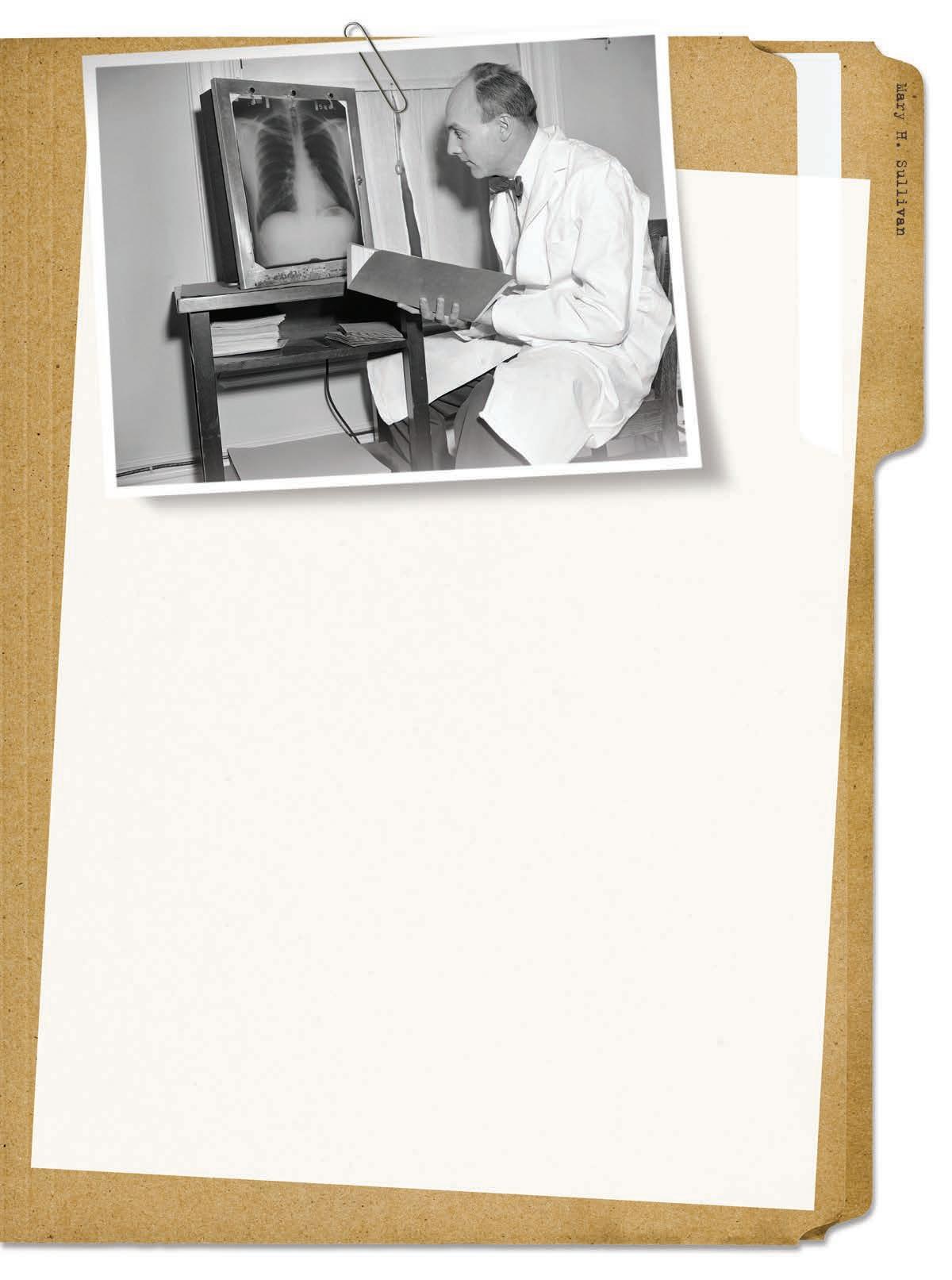 Thomas Royle Dawber, M.D., director of the Framingham Heart Study from 1949 to 1966, checks a participant’s x-ray.
Thomas Royle Dawber, M.D., director of the Framingham Heart Study from 1949 to 1966, checks a participant’s x-ray.
their total level were risk factors for arteriosclerosis.
Indeed, Framingham data gave us the phrase “risk factor.” In 1961 doctors Thomas R. Dawber and William B. Kannel (respectively, the first and second directors of the Heart Study) coined the term for a joint paper in the Annals of Internal Medicine. “Factors of risk,” the doctors wrote, were those conditions or behaviors that increased the odds of developing a pathological condition.
By the late 1940s heart disease had become the nation’s leading cause of death. The federal government’s response, through the newly organized National Institutes of Health (NIH), was the Framingham Heart Study. Until Framingham, most studies of epidemics had looked at the already sick (say, people with TB) or at occupational groups (say, coal miners) seeking patterns of exposure to disease. This would be a different kind of epidemiology: a large-scale, long-term study that would start with an enormous cohort of “healthy” men and women with
nothing in common but a post office. They would be between 30 and 60, living in a town where they could be examined and watched closely for 20 years. It sounds cold-blooded, but the idea was
to wait and see which members would develop heart disease. What physiological conditions, exposures, habits, and family histories did they have in common?
The Study would need at least 5,000 qualified participants to submit to intrusive physical exams every other year for the next 20 years, or until death did them part. In 1948 Framingham had only about 10,000 adults between the ages of 30 and 60; the Study would need a volunteer rate of 50 percent. Incredibly, the citizens of Framingham signed up. Volunteer “captains” fanned out through town to enroll families, church congregations, and whole blocks of people for the first cohort group. One participant summed up the feelings of thousands: “I feel good,” she said, “knowing that they found something that helps people do better.” Said her husband, “It’s not often that you get a chance to participate in something that has had such startling impact.”
—“Thank You With All Our Hearts,” by John Fleischman, July 1998
Dr. John Collins Warren, the first dean of Harvard Medical School and a founding member of Massachusetts General Hospital, and William T. G . Morton, a dentist from Charlton, Massachusetts, performed the first public surgery to use inhaled ether as an anesthetic on October 16, 1846. The patient, Edward Gilbert A bbot, though semiconscious, felt no pain as doctors removed a tumor from his jaw at Massachusetts General Hospital. Morton dedicated much of his life’s work afterward to researching anesthetics.
A s late as the 1950s, polio struck fear into the masses; some affected patients even died from an inability to breathe. Phillip Drinker and Louis A gassiz Shaw of Harvard University developed the iron lung, a device to help paralyzed patients breathe until they could recover the ability to do so on their own. The machine was first used at Boston Children’s Hospital in 1928.
Dr. Sidney Farber of Boston Children’s Hospital was the first to successfully treat acute leukemia in 1947, ushering in the age of
chemotherapy research and use. Inspired by a treatment for premature blood cells in the bone marrow of World War II soldiers, he tried a new approach to treatment on 16 young patients; he saw remission in 10. Farber went on to found what is now the Dana–Farber C ancer Institute, home of the Jimmy Fund.
Two Boston scientists, John Rock and Gregory Pincus, teamed up in 1952 to study hormonal patterns and infertility. They dubbed their first experiment—a test on 50 Boston-area women with 100 percent success—a “fertility study” because the idea of an oral contraceptive was so controversial. Thus, the first version of “the Pill” was born.

A 12-year-old boy who tried to hop a freight train in Somerville, Massachusetts, in 1962 found himself a candidate for the firstever attempted limb reattachment when his leap of faith tore off his right arm. Dr. Ronald Malt of Massachusetts General Hospital performed the surgery—and Everett “Red” K nowles regained complete feeling and use of his right arm within two years. — compiled by Bethany Bourgault
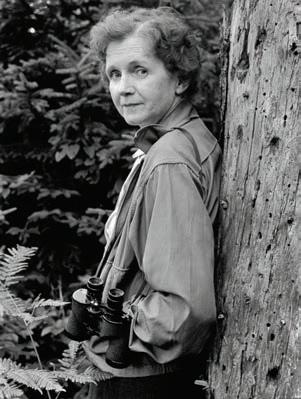
f the earth could speak, it might offer words of gratitude to New England for inspiring the most persuasive environmental voices the nation has ever known. Perhaps, as some fear, the tipping point of the earth’s warming has already been reached—but that hasn’t silenced the indefatigable Bill McKibben, ardent environmentalist and lucid writer, who from his Vermont home in 2007 launched 350.org, a worldwide organizing effort to galvanize political action on climate change. He’s the latest in a lineage that began with Thoreau’s dictum that “in Wildness is the preservation of the world” (“Walking,” 1862), followed by George Perkins Marsh’s book, Man and Nature (1864), called “the fountainhead of the conservation movement.” And then there was Rachel Carson ( BELOW), lover of the Maine coast, who upon learning from a friend on Cape Cod about the death of many birds there, researched DDT and other insecticides and pushed through illness to write Silent Spring Her courage and her words catalyzed the modern environmental movement. “There would be no future peace for me if I kept silent,” she wrote in a letter. The noise she started has never been more needed than today. —M.A.
NUMBER 52
here are people who possess a gift they don’t really know they have, until something unexpected happens, and their life takes a turn, and then their gift becomes the life itself. For instance, Billy Starr. When his mother died from melanoma, he asked himself, “How can I turn my interest in sports, my sweat, into something meaningful?” What if he could get people to donate money toward cancer research for each mile he pedaled from Williamstown to Provincetown, Massachusetts, some 300 miles by bike? This was in 1980, long before athletic fundraising became popular.
What began with a single gift of $10,200 to the Dana–Farber Cancer Institute has grown today to more than $450 million. There’s nothing quite like it in the world. “When they write the history of how cancer was conquered,” notes Dana–Farber president Dr. Edward J. Benz Jr., “the PMC will be in chapter one.”
This August, some 5,500 riders will start out, each one riding for someone they love, someone they lost, or someone fighting the disease now. Hundreds of riders themselves have or have had the disease. “We are not just cancer survivors,” one says. “We are cancer warriors.”

There are now eight routes, with different mileages, starting points, and endings. The longest ride starts at Sturbridge on Saturday and ends 190 miles later on Sunday morning in Provincetown, the riders sweeping past the dunes in a sea of color, jerseys and helmets flashing by in the morning light, as the crowd cheers. “You pedal 200 miles for that last 50 yards,” Starr says.
They keep pumping, going from water stop to water stop, not questioning whether it matters, because they know it does. Because this is what is possible: to fight back. They know why they do this: because we’re all on this one ride.
—“Billy Starr’s Long Ride,” by Mel Allen, July/August 2009
Annie Smith
Peck defied the conventions of the turn of the last century to become a world-renowned mountaineer.
“Climbing is unadulterated hard labor,” she wrote. “The only real pleasure is the satisfaction of going where no man has been before and where few can follow.”
eisty Annie Smith Peck conquered the world’s highest peaks —and horrified her Rhode Island relatives in the process. Born into a traditional New England family in 1850—her father was a lawyer and businessman, her mother a direct descendant of Roger Williams—she mortified her parents when she vowed she would develop the strength and stamina to go places and do things that no woman had before. At age 45 she climbed the Matterhorn and became world-famous.
Annie was slightly built, not the Amazon people expected. She provoked moral outrage with her daring and eccentric climbing outfit: a hip-length tunic, knickerbockers, stout boots, and woollen hose, topped off by a soft felt hat with a veil. After the Matterhorn, she went looking for a mountain no man had ever climbed. In 1906 she found it: 22,204-foot Mount Huascarán in Peru. No one had ever attempted to climb it. After two failed attempts, Annie, with two Swiss guides, reached Huascarán’s north summit in 1908. She had climbed higher than any American, man or woman, in the Western Hemisphere. The Peruvian government named the north peak Cumbre Ana Peck in her honor. She was 58 years old.
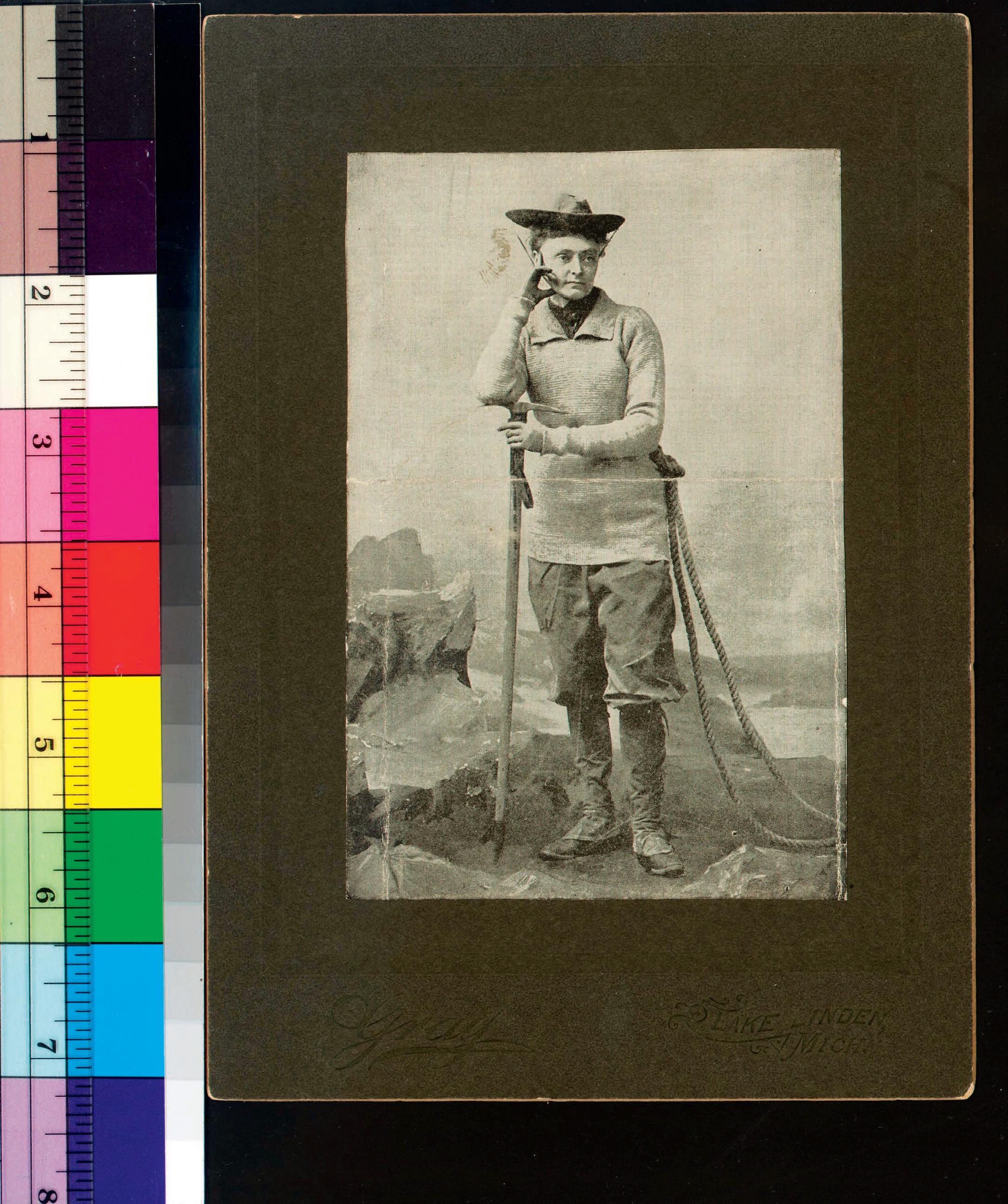
After years of climbing, she made New Hampshire’s Mount Madison her final ascent in 1932. She was 82 years old. On her gravestone in Providence is written: “You have brought uncommon glory to women of all time.”
—“Peck’s Bad Girl,” by Charles Tuck Robinson, February 1997
ould there have been a Malcolm X or a Rev. Dr. Martin Luther King Jr. without W. E. B. Du Bois? Most likely, but the civil-rights world they led and shaped would undoubtedly have looked much different. Born in Great Barrington, Massachusetts, in 1868, at the dawn of Reconstruction, Du Bois died in 1963, during the throes of the new Civil Rights era. In between he redefined the image of the African American man.
Scholar, journalist, agitator, and leader—Du Bois was all those things. His was a life of contrasts and controversy: life in a segregated America determined to hold on to 19thcentury ideals; friction with other black leaders, most notably Booker T. Washington.
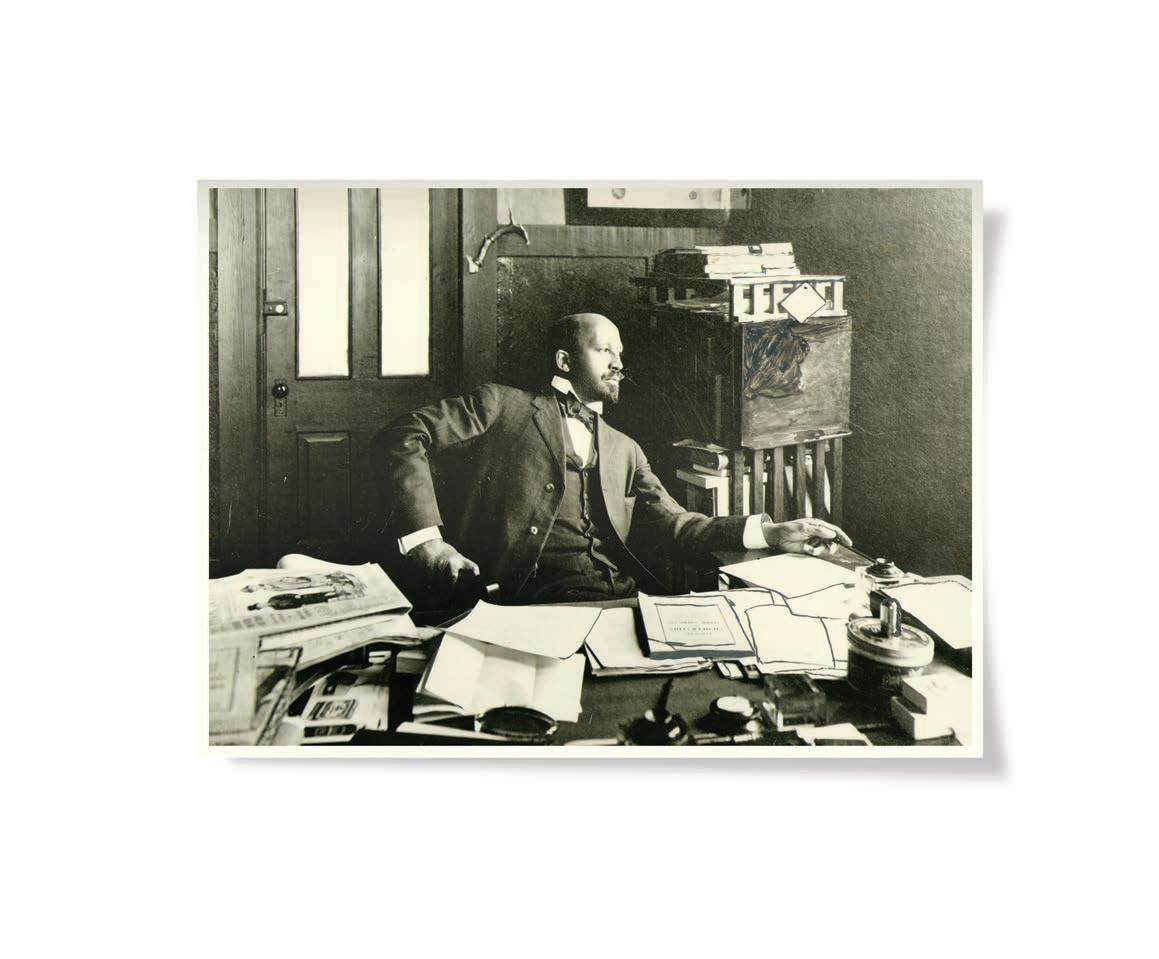
Du Bois confronted and charged ahead. He didn’t feel the need to earn respect from whites, as Washington urged, but instead demanded it. “To be a poor man is hard,” he once
said. “But to be a poor race in a land of dollars is the very bottom of hardships.”
Firsts defined him: first African American to receive a Ph.D. (in history) from Harvard University; first to a write a case study of an African American community in the United States; co-founder of the National Association for the Advancement of Colored People (NAACP). He authored 17 books; crowds poured out for his speeches. Betterment of himself, of other African Americans, and of his country became Du Bois’s life calling. He opened doors for black Americans born in the 19th century and paved the way for the new generation of leaders and movements that followed in the next. Dr. King once said of him, “His singular greatness lay in his quest for truth about his own people … The degree to which he succeeded disclosed the great dimensions of the man.”
— Ian Aldrichhroughout 1960, most of N ew E ngland and all of Boston were caught up in Senator John F. Kennedy’s campaign for the presidency. I was 15 that year, and for me and my friends, Kennedy was a hero whose course we followed with the enthusiasm of youth.

O n the night before the election, he was to appear at a rally at Boston Garden. M y older brother got tickets and took me. A s we left the train at North Station, we were engulfed in a sea of people flowing toward the G arden; we barely managed to squeeze into our seats. While we waited for K ennedy to arrive, there were speeches and songs, and over them all, a vibrating buzz of expectancy.
His arrival was preceded by a growing roar outside the G arden. When at last he appeared and moved into the spotlight, the noise rose to another level, an eight-minute nonstop ovation so deafening in its intensity that I experienced a unique sensation: I was shouting at the top of my lungs but couldn’t hear my own voice. I don’t remember what Kennedy said that night, but I ’ll never forget the smile on his face during that outpouring of affection. That smile said, Whatever happens tomorrow, I’m home.
—“1960: The Last Campaign Stop,” by Rev. Michael Banks, June 1999
n the summer of 1983 the most famous child in the world was Samantha Smith, the 10-year-old girl from Maine who sent a letter to Soviet leader Yuri Andropov: “My name is Samantha Smith … I have been worrying about Russia and the United States getting into a nuclear war …” Her subsequent journey to the Soviet Union became a media sensation. In the months that followed, Samantha grew from a celebrity into a worldwide symbol of peace.

On a rainy August night in 1985, Bar Harbor Airlines Flight 1808, flying from Boston to Lewiston–Auburn, crashed 4,000 feet short of the runway. Samantha, her father, and six others died. Her mother, Jane, found a way through her grief by establishing the Samantha Smith Foundation, with the message that “one ordinary person can make a difference.” The summer after Samantha died, Jane Smith returned to the Soviet Union. With her were 20 of Samantha’s classmates from Maine. Where Samantha had gone, they went. By then an asteroid, a flower, a mountain, and a cruise ship bore Samantha’s name in the Soviet Union. In Maine, the first Monday in June is officially Samantha Smith Day, when schools plan activities to help children understand other cultures.
“She surprised all of us,” Jane Smith said, “how she suddenly became articulate in front of the camera. To us she was a 10-year-old who seemed to do nothing but giggle and act like a complete idiot with her friends. Then all of a sudden the camera was turned on, and she could make sense. The first time I saw her on television I had to go to my neighbor’s to watch; we didn’t have an antenna. She came on, and tears filled my eyes. I couldn’t believe this was my kid … She was the perfect age for all this. She had no idea of the impact of the trip. It was like she was taking an exciting field trip …” —“Life After Samantha,” by Mel Allen, May 1988

They’re an unlikely pairing for immortality together: Alfred Eisenstaedt, a German-born photographer who roamed New York with his Leica for Life magazine, and George Mendonça, a young sailor, just back from World War II, who was raised in a Rhode Island fishing family and would soon return to that life. In a Times Square instant on August 14, 1945, Eisenstaedt’s eye and Mendonça’s inebriated elation at the war’s end came together in the photo that ever since has charmed the country.

 Oil portrait of Doris Haddock by Karin Wells. “Frankly, I want to be just like her when I grow up,” the artist notes on her blog. “Her words still inspire me.”
Oil portrait of Doris Haddock by Karin Wells. “Frankly, I want to be just like her when I grow up,” the artist notes on her blog. “Her words still inspire me.”
NUMBER

hen she was 88 and a greatgrand mother, Doris Haddock, who lived in Dublin, New Hampshire, said she’d walk across the country to call attention to campaign-finance reform, the effort to stem contributions that slip through not-quite-illegal channels from corporations and special-interest groups into the pockets of political candidates. To Doris, this so-called “soft money” was the root of all that was wrong with our democracy. Starting in California, she planned to walk 10 miles a day for one year and to enter the nation’s capital on her 90th birthday, on foot. Like many women her age, she had arthritis and emphysema, but that didn’t stop her. Her son (and next-door neighbor), Jim, said more than once, “She’ll die trying,” for he knew better than any of us her stubborn spirit.
To get ready, Doris walked Dublin’s winding, hilly roads for months, a pack on her back, logging nearly 1,000 miles. She slept on the ground to prepare for what she imagined might lie ahead. She began her trek on January 1, 1999, in Pasadena, California. On her shoulder, braced like a soldier’s rifle, she carried a big yellow flag that she had stitched and that said, simply, Campaign Finance Reform . Wearing T-shirts and khaki shorts in the heat, and heavy woollen pants and sweaters in the cold, Doris marched through 208 towns and 13 states. She finally strode right into our nation’s capital, just two months late.

When Doris arrived home, the bands played and Dublin threw a big party. Most of us who had bid her goodbye were amazed to find that, 3,200 miles later, she looked strong er,
NUMBER 59
efore Christa McAuliffe was selected to be the first teacher in space aboard the Challenger, capturing the country’s hearts and imaginations, she was a popular social-studies teacher at Concord High School. When she became a hometown hero, a young reporter, Bob Hohler, was assigned to follow her journey for the Concord Monitor. He filed more than 50 stories about Christa, including the hardest one from January 28, 1986. Yankee ’s story of the bond between the reporter and his subject included Hohler’s dispatch:
“Christa McAuliffe died yesterday with a few of her favorite things: her son’s stuffed frog, her daughter’s cross and chain, her grandmother’s watch, her Carly Simon tape. She died with little things. Ordinary things.

“Put her by a swimming pool with her family,
younger, more alive. Not only had she walked 3,200 miles, but she’d also delivered hundreds of speeches, nothing she’d ever done before. Granny D had walked through four pairs of shoes, worn out four sun hats, and exhausted dozens of walking companions. At her welcome-home party, she said, “I am thankful to New England for raising its children with businesslike severity so that we might be a little tough and more courageous and become, after long lives here, great connoisseurs and critics of beauty and community … Wherever I went across America, people wanted to shake my hand and wish me well, not because they thought I was something special, but because I was someone like them. Americans are not selfish. They are kind and full of great spirit.”

—“The Power of One,” by Edie Clark, November 2000
a bacon, lettuce, and tomato sandwich, and a cold beer, and she needed little more from life. Give her a compass, her childhood friends, and a forest, and she flourished. Call her a hero, and she shuddered. “In the 200 days I knew her, Christa went from a high school classroom to a spacecraft bound for an infinite frontier in the sky. She asked to be nothing more than an ordinary person on an extraordinary mission.
“How silly, she said on the day that I met her in Houston, that people would swarm her for autographs. How absolutely crazy, she said three weeks ago, that the New England Patriots would line up after a game for her signature. What a joy it would be, she imagined, to return to signing hall passes at the high school.” —“Christa’s Shadow,” by Tim Clark, June 1986
‘An ordinary person on an extraordinary mission’
NUMBER 60



ore than one contributor to Arthur Griffin’s New England: The Four Seasons noticed how much livelier than his or her own essay was Griffin’s laconic yet vividly factual account of when and where and how he took the picture. God is in the details, they say; certainly photographic excellence stems from attention to details. That, and a willingness to seize the moment. He has caught on film the New England we all would like to think we live in; but perhaps only he really has lived in it, with a friendly fury that has rendered him ageless.
—“Seizing Moments,”


 by John Updike,
by John Updike,
September 1995
‘THE
NUMBER 62

routs Neck thrusts out into the Atlantic, exposed on three sides to the water and completely exposed to easterly storms, and the rugged, weatherbeaten rocks show the effects of the pounding surf. It was here that Winslow Homer was most at home for the last 27 years of his life. He captured the storm-whipped Maine coast in winter like no other artist, exulting in the foul weather.

It was during the long Maine winters that Homer created such powerful works as Winter Coast and The West Wind, with great waves towering over a high cliff; the frigid stillness of near-zero weather; bleak rocks encased in ice and snow. At a time when most American painters were lulled by nature’s gentler climes, one Homer biographer reminds us that “when skies threatened and the wind rose and the great waves came swinging in to hurl themselves against the cliffs, he was in his element.”
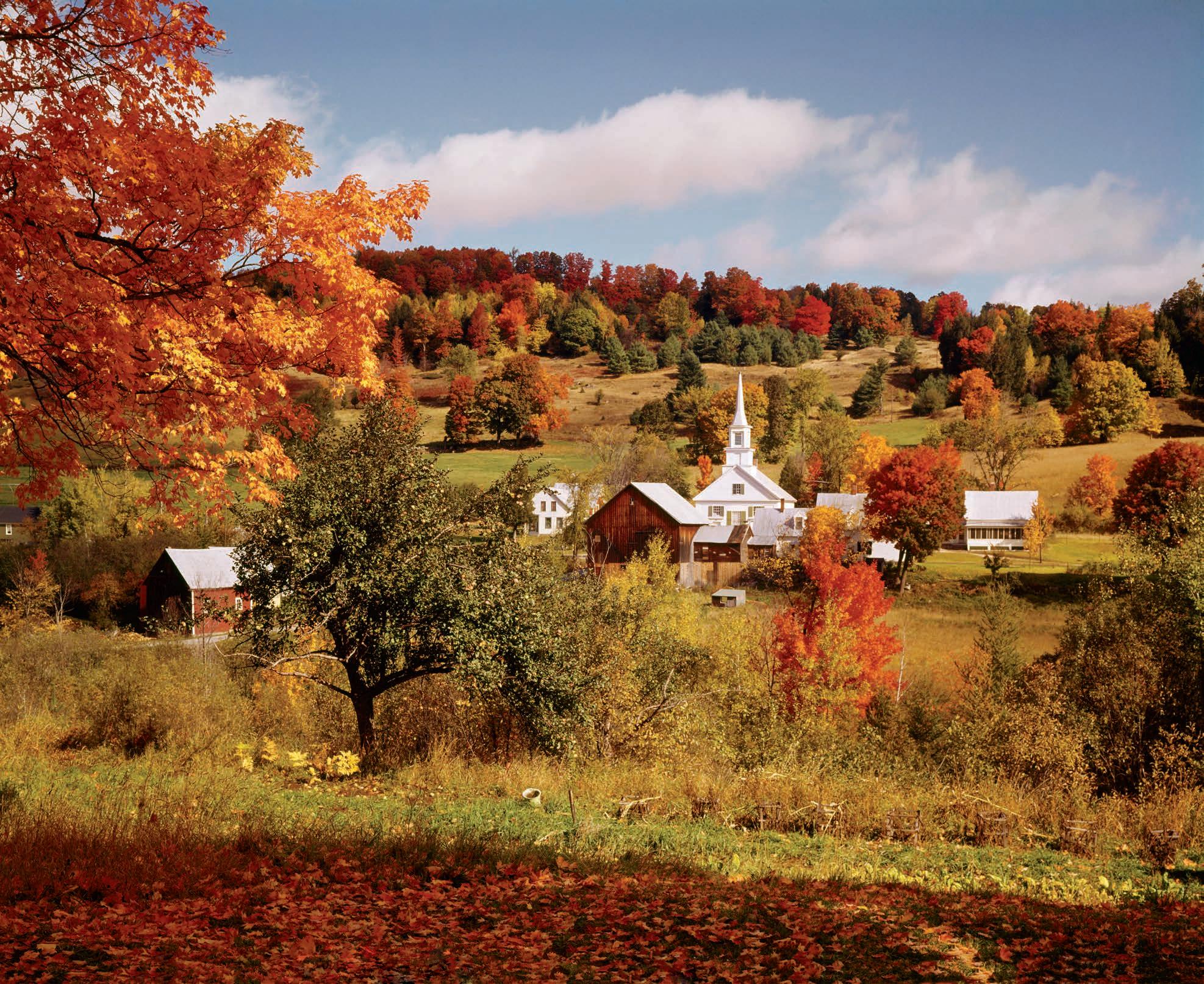
—“Perfectly Grand in Prouts Neck,” by Craig Fisher, February 1996











ew people in their lifetimes achieve worldwide influence. Fewer still have an impact that will endure for generations yet to come. Roger Tory Peterson is one of that latter group—a true rara avis.





Starting with his own love of birds and of the natural world in which they belong, Roger became a transmitter of this feeling to countless other human beings. I had the great good fortune of being one of the early ones. He was then teaching art and natural history at the Rivers School in Brookline, Massachusetts, while also working on his first field guide; I was a sixth- and seventh-grader whom he introduced to birdwatching and to whom he gave drawing and painting lessons. I learned from him


things about the link between vision and communication that have stayed with me ever since.


Roger Tory Peterson has taught an ever-expanding classroom about much more than birds. He has made his fellow human beings aware of the ecosystem that we and other creatures inhabit together. What he has also taught us about the use of our senses, the role of our imaginations, and the love of beauty in all its forms will long be at the heart of his reverberating influence.
—“Rara Avis,” by Elliott Richardson, September 1995

hen I started Carrie, I had finished my first year of teaching. I was working in summer at the laundry to try and make ends meet. I started writing, but after four pages thought it stank and threw it in the rubbish. I came home and found my wife, Tabby, had taken them out and had left a note: ‘ Please keep going—it’s good.’ Since she’s really stingy with her praise, I did.
“When I finished it, I sent it off to Doubleday. We were having a really tough time. We had two small children. O ur phone had been taken out. When the telegram came saying it was accepted with a $2,500 advance, Tabby had to call me at school from across the street. I was in the middle of a teachers’ meeting and was on pins and needles waiting to get home and hug her. Later my agent told me the paperback rights were bought for $400,000. I said, ‘ You mean $40,000.’ He said, ‘ N o, I mean $400,000,’ and I realized I wouldn’t have to teach anymore.
“ M y mother was dying then, but she knew everything was going to be all right. She was oldfashioned about Carrie ; she didn’t like the sex parts. But she recognized that a lot of Carrie had to do with bullying. If there’s a moral in the book it’s: Don’t mess around with people. You never know whom you may be tangling with. A h, if my mother had lived, she’d have been the Queen of Durham, Maine, by now.”
—“The Man Who Writes Nightmares,” March 1979
NUMBER 64
shley Bryan’s life story is among the most extraordinary in American arts and letters. The son of West Indian immigrants from Antigua, Bryan was raised in the Bronx. After serving in a segregated Army unit in World War II, he completed a degree at the Cooper Union Art School and pursued a doctorate in philosophy at Columbia University. On the first of two Fulbright trips to Europe, Bryan made drawings of the master cellist Pablo Casals.
In the 1960s, Bryan met Jean Karl, an editor at Atheneum Books, who encouraged him to try illustration. He went on to create a canon of contemporary children’s literature: brilliant retellings of African and West Indian tales illustrated with colorful images. In 1973 he joined the faculty of Dartmouth College.
Maine has been a centering place for Bryan since 1946, when he attended the first summer session of the Skowhegan School of Painting and Sculpture. On trips to the Mount Desert Island region, he discovered Islesford, a tightly knit community of fishermen and their families. The island has embraced its renowned artist with full-scale affection. The Islesford School was renamed the Ashley Bryan School in 2012. In 2013, Bryan’s extraordinary sea-glass renderings of Bible stories were installed in Islesford Congregational Church.
Reports of Bryan’s travels and honors appear regularly in the Cranberry Isles column of the Mount Desert Islander news paper. An entry might read: “Ashley Bryan has just returned from South Africa, where he helped open a new school,” or “Bryan was recently honored as a Library Lion by the New York Public Library.” (Fellow recipients in 2008 were playwright Edward Albee, screenwriter Nora Ephron, and novelist Salman Rushdie.)
Today, at age 92, Bryan continues to make news. The Maine College of Art awarded him an honorary degree at its May commencement. And from July through October 2015, the Wendell Gilley Museum in Southwest Harbor, Maine, will host an exhibition, A Visit with Ashley Bryan , mounted by the Ashley Bryan Center, an organization dedicated to celebrating his life and work.
This fall, Bryan will publish Sail Away, an illustrated collection of Langston Hughes’s poems about the sea. He often starts his storytelling performances, which have electrified audiences around the world, with Hughes’s poem “My People,” asking his listeners to repeat the lines after him. “Beautiful, also, are the souls of my people,” reads the last line. Beautiful, also, is the art of Ashley Bryan. — Carl Little

Maine has been a centering place for Bryan since 1946 … The Islesford school now bears his name.

 Inspired by the goings-on in his own barn, E. B. White spun the delightful story of Charlotte’s Web.
Inspired by the goings-on in his own barn, E. B. White spun the delightful story of Charlotte’s Web.
n April of this year, Charlotte’s Web was declared “the most popular children’s book ever” in a survey produced by BBC.com. E. B. White’s spartan boathouse, where much of the book was written, is still standing in a town in Midcoast Maine, although now the building has been prettied up by new owners.
White’s granddaughter and literary executor tells Yankee that White expressly requested that his saltwater farm never become a museum or be used for public tours. Instead, you could ride a train (and have a dream about a mouse named Stuart Little), hoist a sail on Penobscot Bay, or write a letter to the editor to help save the environment. Pick up a copy of One Man’s Meat and read his essay “Once More to the Lake”; then paddle a canoe on the Belgrade Lakes. Read his essay “Walden,” and

NUMBER 66
visit that pond in Concord, Massachusetts. Or try “Dog Training” and invest in a rescued shelter dog, maybe a dachshund whom you’ll name Fred.
In 1929, long before the publication of any of his children’s books, E. B. White wrote a poem for his newly wedded wife, Katharine, from the King Edward Hotel in Toronto. Folk singer Pete Seeger later put it to music, and another composer recently put it into a chamber piece performed in Rockport, Maine, in 2014.
After White’s death on October 1, 1985, this poem, together with the Jill Krementz photo of White on the onerope swing in his barn, OPPOSITE , were included in a pamphlet as part of his memorial service in Blue Hill, Maine, near the farm where he had resided for nearly half a century.
robably no other American has been so totally subsumed by an alter ego as Theodor S. Geisel, born in 1904 in Springfield, Massachusetts. To the wide world, Geisel was less than a stranger; he was completely anonymous. Dr. Seuss, on the other hand, was known to all. Dr. Seuss wrote and illustrated children’s books that sold more than 200 million copies in some 20 languages. He created characters as famous as any in arts and letters: the Cat in the Hat, Horton the Elephant, Yertle the Turtle, the Grinch, the Lorax. Dr. Seuss helped teach millions of children to read.
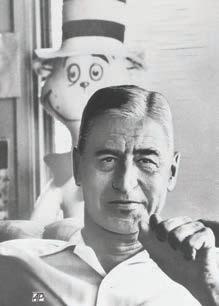
Ted Geisel, on the other hand, was an amiable, considerate, private, sometimes insecure man, Massachusetts born and bred. New England was, in fact, the first and last place where Ted Geisel existed only as Ted Geisel. By the time he’d graduated from Dartmouth College in 1925 and exited to the larger world, he was already carrying with
The spider, dropping down from twig, Unwinds a thread of her devising: A thin, premeditated rig To use in rising.
And all the journey down through space, In cool descent, and loyal-hearted, She builds a ladder to the place From which she started.

Thus I, gone forth, as spiders do, In spider’s web a truth discerning, Attach one silken strand to you For my returning.
—E. B. Whitehim his Seussonym, his extra personality.
When his first children’s book, titled And to Think That I Saw It on Mulberry Street, by “Dr. Seuss,” appeared in 1937, only in Springfield did people say, “Remember Teddy Geisel? That’s his book.” For another half-century the folks in Springfield would be saying, some 47 more times, “Teddy Geisel’s got another book out.”
When he died on September 24, 1991, the world mourned the death of Dr. Seuss, the man who’d created the Grinch and the Cat in the Hat. But in Springfield, Massachusetts, they mourned Teddy Geisel.
—“The Boy Who Drew Wynnmphs,” by Robert Sullivan, December 1995






How well do you know N ew England’s great works of literature? Try to match these authors to their words from a famous work. Then check your answers against the box below and give yourself a point for each correct match.
1 “O h, my girls, however long you may live, I can never wish you a greater happiness than this!”
2 “He looked like a man cut away from the stake, when the fire has overrunningly wasted all the limbs without consuming them, or taking away one particle from their compacted aged robustness.”
3 “Two roads diverged in a yellow wood, / A nd sorry I could not travel both / A nd be one traveler, long I stood / A nd looked down one as far as I could / To where it bent in the undergrowth …”
4 “The stillness was so profound that he heard a little animal twittering somewhere nearby under the snow. I t made a small frightened cheep like a field mouse, and he wondered languidly if it were hurt. Then he understood that it must be in pain: pain so excruciating that he seemed, mysteriously, to feel it shooting through his own body.”
5 “The public loves to create a hero … Sometimes I think they do it for the sheer joy of knocking him down from the highest peak. Like a child who builds a house of blocks and then destroys it with one vicious kick.”
6 “‘G ood night, you princes of M aine, you kings of N ew England.’”
7 “We passed the School, where C hildren strove A t Recess—in the Ring— We passed the Fields of G azing G rain— We passed the Setting Sun—“
8 “ I once did something right. I played first-rate basketball. I really did. A nd after you’re first-rate at something, no matter what, it kind of takes the kick out of being second-rate.”
9 “ I like too many things and get all confused and hung-up running from one falling star to another till I drop. This is the night, what it does to you. I had nothing to offer anybody except my own confusion.”
10 “She had wandered, without rule or guidance, in a moral wilderness … Her intellect and heart had their home, as it were, in desert places, where she roamed as freely as the wild Indian in his woods.”

11 “There are houses in G loucester where grooves have been worn into the floorboards by women pacing past an upstairs window, looking out to sea.”

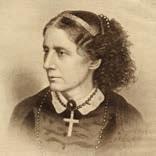


12 “ I am one of the sort that lives by throwing stones at other people’s glass houses, but I never mean to put up one for them to stone.”
—compiled by Joe Bills
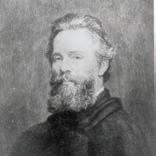
NUMBER
ruesome images today of refugees, fleeing poverty and war in North Africa and the Middle East, only to drown in Mediterranean waters, are arousing horror and sympathy around the world. European governments are faced with painful decisions: How many can they take in without being overwhelmed? The crisis is a reminder that New England has offered sanctuary to desperate people in boats since the Pilgrims landed in 1620. Refugees fleeing political and religious oppression, or poverty and war, came in waves: an estimated 20,000 English between 1620 and 1640; Sephardic Jews from Portugal and Brazil in the 1700s; more than 1,500 Germans aboard the Lydia, bound for Waldoboro, Maine, in the mid-1700s; Irish and Italians in the 19th century; and Africans throughout, including a wave of Somalis since 2000.
Among the most desperate of all were 42 Africans from the Mendi country (now Sierra Leone) who arrived in a roundabout way in 1839. They were not refugees; they had been kidnapped. Chained aboard a Spanish schooner, La Amistad (“Friendship”), destined to be sold as slaves, they rose up, killed the captain and the cook, and ordered the surviving crew to sail them back to Africa. Soon after, the Amistad was captured by a U.S. warship off Long Island.
What to do with the Africans was a puzzle. They were taken to New London, Connecticut, where a judge put them on trial for murder. The charges were dropped, but the Spanish wanted the captives back. Two years later, in March 1841, the Supreme Court, after a dramatic defense by former President John Quincy Adams, ordered the captives freed.
While the lawyers argued, the Africans lived in Connecticut, at first in jail, then in the small town of Farmington, where a group calling itself the Amistad Committee took them. They planned to educate them and raise money
for their passage home, where they hoped to convert more Africans to Christianity.
The arrival of 33 African men and three little girls (several captives had died in the meantime) was a shock even to a community that was a stop on the Underground Railroad. There was friction at first, but when the Amistads, as they came to be called, left eight months later, 100 townspeople gathered before dawn to see them off with tears and embraces.
They sailed for Africa on November 27, 1841. Once there, the Amistad Committee’s dream of a mission quickly evaporated. Some of the Amistads immediately stripped off their American clothes and disappeared into the bush, dancing and rejoicing. The only Amistad who ever returned to America was one of the girls, Sarah Margru Kinson, who attended Oberlin College, then returned to Africa as a missionary.

However, the failure of the mission was not the end of the Amistad story. Farmington’s willingness to shelter these strangers foreshadowed waves of Irish and Italian immigration that transformed the social, political, and economic landscape of the region.
Despite social and economic challenges, the waves continued to come ashore: Polish in the Pioneer Valley and Russians in Springfield, Mass.; Portuguese in New Bedford and Azoreans in Fall River; Armenians in Watertown, Chinese in Boston, and Cambodians in Lowell; Providence, Rhode Island, is home to generations of Cape Verdeans. More than at any time in history you hear Spanish on the streets of Nashua and Waterbury, the lilt of the Caribbean in Hartford, and Somali dialects in Portland and Lewiston. As people from lands far away and from far different cultures have sought to make new lives, they have made New England a richer, more diverse, more vibrant corner of America. —Tim Clark
At Boston’s Durgin–Park, you take a seat in the restaurant’s original North Market location (today part of Faneuil Hall Marketplace) and enjoy the same kind of meal—pot roast, baked beans, Indian pudding—that diners did when the place first opened in 1826. You may even experience the same sometimes-bawdy, often-sarcastic service that has made Durgin–Park a must stop for thousands of Boston visitors. For the last 40 years head waitress Gina Schertzer has been a part of Durgin–Park. We caught up with the Massachusetts native before her Tuesday-afternoon shift.
hen the restaurant opened it catered to the people who worked overnight at the Faneuil Hall market—the longshoremen, the produce people, the meat men. They worked all night, so when they got off and came into the restaurant, they were usually grumpy and would give the service staff a hard time. The staff finally had enough of it and started giving it back, and it stuck. Then people started coming here for the abuse. But it’s toned down over the years. It had to. People don’t understand the history of the fooling around, or they’re offended by it, and it’s not supposed to offend anybody.”
“The late Dottie Lamb was Durgin–Park. She worked here 48 years. She chewed gum and swore like a truck driver. That was her claim to fame. But she was the most popular one here. Some nights customers wanted only her tables. If someone said, ‘You didn’t pour me a glass of water,’ she’d say, ‘Either pour it yourself or pray for rain. That’s the only way you’re going to get it.’ One of her regulars was this guy who was a real gentle giant. Big guy, maybe 300 pounds. He loved Dottie and loved the abuse. He was very involved in the Mormon church and would bring in the Mormon missionaries for a meal. When it was over he’d ask if his friends could sample the Indian pudding. Then he’d ask for one for himself. She’d look at him and say, ‘Your ass takes up two chairs as it is; I’m not bringing you the pud ding.’ And she wouldn’t.”

“People don’t eat like they used to. You see that with how much red meat people want. Years ago we served only the ‘Durgin Prime Rib.’ That’s 32 ounces on the bone. About five or six years ago, we incorporated the ‘Yankee Cut’; that’s 16 ounces. Now we have the 10-ounce ‘Boston Cut.’
There are also more allergies now. In my day you could eat a ketchup bottle and nothing would happen to you. Now they’re allergic to carrots, air, water. ‘Is water gluten-free?’ I was asked that the other night. Really? Get that silver bullet
“I couldn’t work anywhere else. None of us could. They wouldn’t hire us. They wouldn’t give us an application. I know people who have left here for another job and lasted only a couple of weeks. Just couldn’t do it. It’s like one big dysfunctional family here. But it’s a happy family. We watch out for each other.”
“When it comes to the tips, it’s like Some days chicken, some days You can’t let it bother you. I know some people will let a bad tip ruin their day, but you can’t do that. There’s always another table. I find that if you really enjoy guests, it will reflect. They can tell. They can tell whether it’s phony or an effort to be nice.”
“I’m 73 now and I won’t lie: I’m not who I was. I can feel the difference. It’s my endurance. I still work the 10-hour days. But can I lift the plates I used to? No. Can I lift a tray of potatoes without pain? No. I used to be hot stuff Abuelita. That’s ‘grandmother’ in Spanish. How did that happen? I’ve gone from high heels to skidproof shoes. But that’s okay. As soon as I walk through the door, I feel myself becoming the person who works here. I come in, turn on Barry White, and that’s how I start my day. It always starts with Barry. I love his music. It brings me back to the older days. When I was alive.” — I.A.
s take on Durgin–Park’s famous Indian pudding, see “Recipe With a History,” p. 84.
“Saturday nights are crazy,” head waitress Gina Schertzer told Yankee. “Everybody is screaming and yelling … It’s like a Laurel & Hardy movie. But then, when it’s all over, it’s like it never happened. After 40 years, I’m used to the chaos.”
 OPPOSITE : Durgin–Park staff, 1985.
OPPOSITE : Durgin–Park staff, 1985.
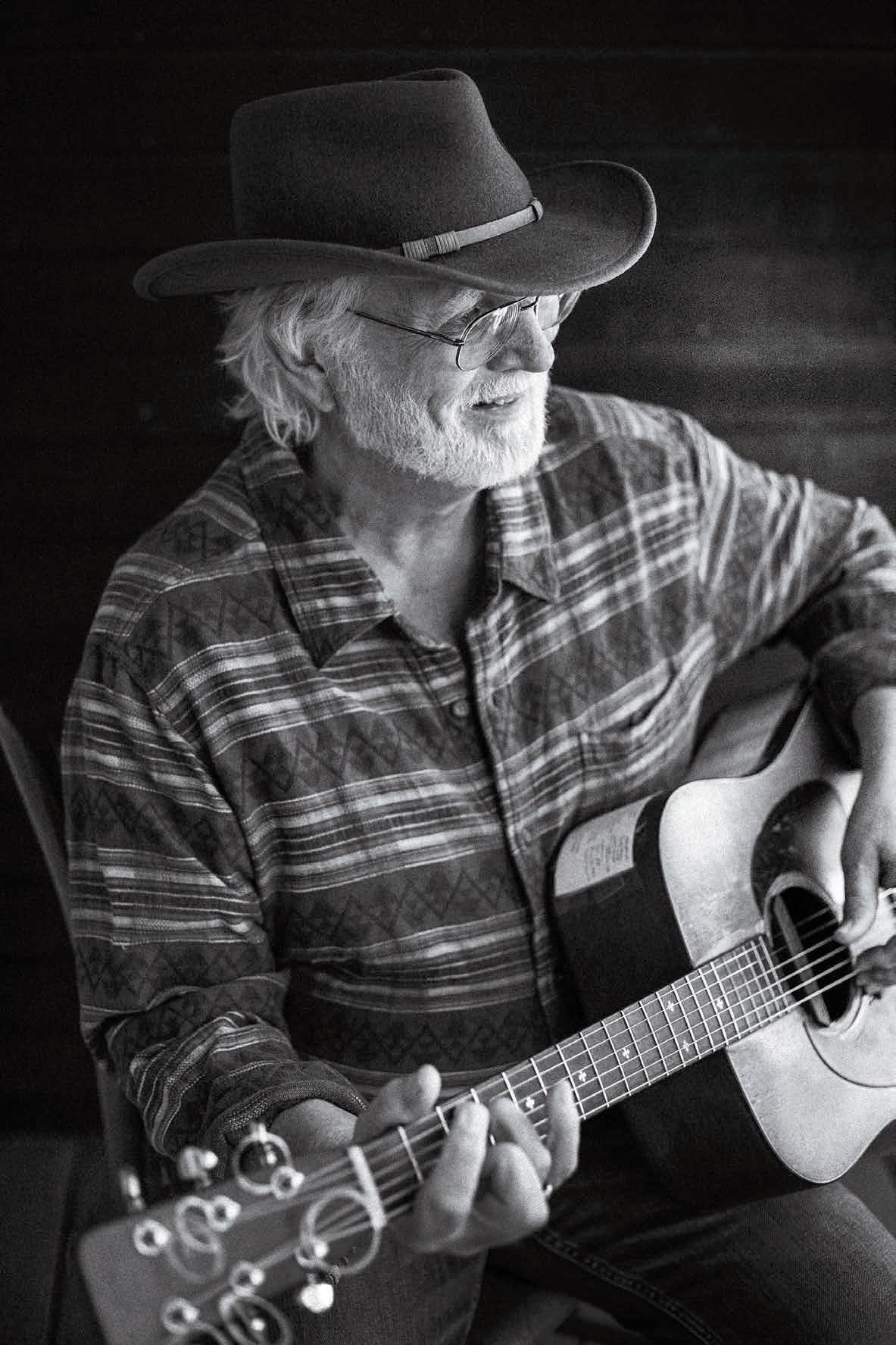
“I write songs so that I can reach people. And if I can write a song that can continue to inspire people, that song will stay around for a long time and will become a folk song.”
first saw Bill Staines perform at The Folkway in Peterborough, New Hampshire. It was 1979, and my sister, Anita, had come from Boston to visit me in Dublin, where I had just moved. Bill Staines was tall and lean; he wore a cowboy hat with jeans and boots, and his songs were like short stories wrapped inside lilting melodies. They stayed with you like fragments of dreams. Many of his contemporaries wrote songs with an edge; his were rounded, smooth. He sang about the country he had already crossed many times over since he’d begun in the ’60s.
He was called Boston’s most engaging performer. He was a national-champion yodeler, for one thing—no doubt the first who had been born and raised in Lexington, Massachusetts. Famous singers were covering his achingly sweet and romantic “Roseville Fair,” which he wrote after seeing two young people dancing by the glow of a campfire at a small-town folk festival. He sang of prairies and mountains and rivers. A Houston Post music critic lamented, “He’s a New Englander … and damn his soul, he writes better cowboy songs than anybody in the Southwest.”
That night he became our favorite performer, and ever after for birthdays and holidays Bill Staines records passed back and forth between my sister and me. He belonged to us both.
It’s a January night 34 years later at the legendary Caffè Lena in Saratoga Springs, New York, and Bill Staines is on stage. There are 70 people here, and they know his songs by heart and sing along. A woman behind me says she lives in Alaska and sees him every year when he goes there on his
NUMBER 71
annual pilgrimage. Others say they come here every year when he plays. Think of how you draw closer to a fire on a cold night; Bill Staines tonight is the fire.
He’s nearing 50 years performing; in that time he has driven more than three million miles, written nearly 300 songs, recorded 27 albums. He’s been through 19 cars; his current jeep is closing in on 400,000 miles. On his personal odometer, 70 isn’t far away. He plays nearly all the folk clubs and festivals that remain, and he plays at house concerts, where his fans plunk down maybe $10 to $15 and crowd into someone’s living room and share food. He has driven 20 hours straight to get to a show: “I kept telling myself, ‘Bill you have one hour more left in you,’” he says. This will be one of 225 concerts he’ll play this year; the next night he’ll be at DelRossi’s Trattoria in Dublin, where a waitress gliding by will say softly, “I bet I’ve seen him 20 times.” He’s a touchstone. “It’s like a reunion,” he says. “People haven’t seen each other for a year, and then suddenly they show up at my concert.”
This night in Saratoga Springs, he ends with the same song he’ll end with the next night, possibly the same song he ended with in 1979; then, he’d written it just a year earlier. He called it “River,” and when my sister’s funeral service ended and everyone sidled out into the winter air in Cambridge, it was the song that sent us home:
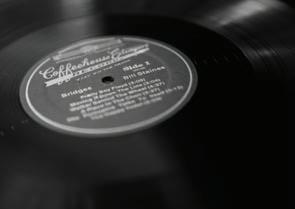
River, take me along in your sunshine, sing me a song
Ever moving and winding and free
You rolling old river, you changing old river … — M.A.
o find one of Kate Hepburn’s early movies from the 1930s: Bringing Up Baby or Holiday, for example. It’s almost shocking how modern she is, how different from the other women in those films. She’s all angles and intelligence—so sharp you could cut yourself on her. What’s she doing with all those moon-faced girls? How did she get cast?
—“Don’t Change: Kate Hepburn,” by Tim Clark, January 2000

NUMBER 72
Seasonal workers and Scott Farm manager Ezekiel Goodband (far right) take a short break from the harvest. This scenic Dummerston, Vermont, estate (once owned by Rudyard Kipling) stood in for Maine’s “Ocean View Orchard” in 1999’s Cider House Rules ; some sets were re-created from photos found in the farm’s mail-order brochures of the 1930s. Today the property is owned by The Landmark Trust USA and specializes in heirloom apple varieties.

LEFT : Henry Fonda and Katharine Hepburn in On Golden Pond, 1981; it was Fonda’s last movie role. Though inspired by screenwriter Ernest Thompson’s summer home on Great Pond in Maine’s Belgrade Lakes area, it was filmed on Squam Lake in Holderness, New Hampshire.

ew England has always been ready for its closeup. Imagine a darkened movie theater anywhere in the world. The movie has ended. Credits roll. The audience, transfixed by the scenic cinematography, remains sitting, watching to see where the action took place. Perhaps few, if any, in the audience have set foot in New England—and the memory of this movie place becomes what they know, as though they’ve now been here.
For decades whenever Hollywood producers have sought authentic locations, they’ve found mountains, lakes (On Golden Pond, winner of three Academy Awards in 1982), lighthouses (when Snow Falling on Cedars, set in the Pacific Northwest, needed a lighthouse shrouded with snow, Portland Head Light received the casting call), small towns and fishing villages (Camden, Maine, is a favorite, and its settings helped Peyton Place receive nine Academy Award nominations in 1958), beaches ( Jaws’ “You’re gonna need a bigger boat” put Martha’s Vineyard on the map in 1975), rockbound cliffs overlooking ocean, opulent mansions (Newport), Ivy League colleges, and iconic Colonial architecture all waiting in one compact region.
When location scouts for the film version of John Irving’s The Cider House Rules (winner of two Academy Awards in 2000) needed an aging institution to stand in for a timeless orphanage, plus an iconic apple orchard and a classic working fishing harbor, they found the former state hospital in Northampton, Massachusetts; Scott Farm in Dummerston, Vermont; and Downeast Maine spots such as Thurston’s Lobster Pound—all without having to refill a tank of gas. And since Hollywood has always pursued stories and storytellers, it’s not a big stretch to suggest that New England writers produce more compelling stories per square mile than those living anywhere else. The sense of place, the geography, the shifting seasons, the sharply drawn characters, all bring filmmakers back again and again. —Eds.

n the summer of 1976, at the age of 21, M ark “The Bird” Fidrych, the man who talked to the baseball and patted the pitcher’s mound, enjoyed the briefest, most spectacular pitching career in the history of baseball. His talent and original idiosyncratic personality, which had long been known to his friends growing up in N orthborough, M assa chusetts, blasted into the living rooms of A merica. M any women, especially women, started watching baseball for the first time. His elastic rotations, the elated pirouettes, the way he would dance out across the field to congratulate his Detroit Tigers teammates after a good play—all those little things that no one had ever seen a ballplayer do before became etched in A mer ica’s consciousness. For one flickering summer, The Bird became a household name. He showed everyone, sports fans or not, that sports could transcend wins and losses, that one radiant new star could shine so brightly he could make everyone smile.

—“The Bird Is Still the Word,” by Edie Clark, June 2001
very time you expect something from Michael, he comes through. The good Lord must have been on his side from the start. It was uncanny. The score was 3–3 in the Russian game, and I’m sitting next to my wife, and I said, ‘You know, Helen, Michael’s not done nothing yet.’ I says, ‘C’mon, he’s due.’ I no sooner got done talking than I see the puck slide across to him. And as soon as he got the stick on it I yelled, ‘Shoot, Mike, shoot! Don’t waste time!’ And he did. He just let it go. I saw that net stretch and I said, ‘Oh my God, that’s it?’ It was beautiful. And I started to think, This goal here could be a big thing. If it could stay up with no other team scoring. I knew the impact it was going to have. I held tight to my St. Anthony’s medal. ‘This is for Michael,’ I said. ‘Make this thing end 4–3. No more, no less.’ ’Cause I knew what would happen. He’s the captain. He’s got the winning goal. And the people will never forget that.”
—Eugene “Jeep” Eruzione, in “The Celebrity,” February 1981

hen memory plays images of that Williams swing, we catch him in stillness, wound on the invisible axis of his balance, turned on himself like a barber’s pole in its shapely curving. As the mind’s carousel switches from one image to another, from the Boston Post all the way to Sports Illustrated, the gallery of spirals becomes a helix doubled and tripled by repetition. If we flip these pictures fast enough, they become one sleek, mighty ripple through an unlucky pitcher’s pitch—starting from the attent cat-coil of waiting, releasing in a surge of pivoting hips to extend powerful arms, concluding with the satisfying recoil of the follow-through. There’s motion implicit in every millimeter of arrest, always turning on itself, powerfully contained within its cylinder.
In his book The Science of Hitting, Ted Williams makes the observation—with Heraclitus, Longinus, and Freud—that we progress by the reconciliation of opposites, dialectics or irony here applied to hitting a baseball: “It’s a pendulum action. A metronome—move and countermove … You throw a ball that way, you swing a golf club that way, you cast a fishing rod that way.” Always thesis and antithesis roll into synthesis. You hit that way, as you write a poem or drive a car or pitch hay that way: move and countermove. You also play a piano that way.
—”That Swing,” by Donald Hall, July 1991


t a time when women had just been granted the vote, Carrie Stevens (1882–1970)showed that fly fishing wasn’t simply a man’s sport. From her home at Upper Dam on Maine’s Mooselookme Lake, Stevens created some of the sport’s iconic flies: Gray Ghost, Golden Witch, and Blue Charm, among others—more than 150 in all, and the stuff of legend. Her gift made Maine’s Rangeley Lakes region America’s premier fly-fishing destination. —
n the fall of 1985 Gino Auriemma, a 31-year-old novice head coach who had immigrated to the U. S . with his parents two decades before, took over the University of C onnecticut women’s basketball team, a fledgling program that had had only one winning season in its history. T hirty years later, Auriemma has made humble Storrs (population 14,000) into a basketball mecca that is the envy of basketball fans, men and women, anywhere and everywhere. T he numbers: ten national titles, five undefeated seasons, and one unforgettable 90-game winning streak. T he coach and the several hundred women who have played for him have transformed women’s basketball, with a Final Four that is today a major television event. Go anywhere and say “U C onn basketball” and most people will nod and think, “ T he great women of Storrs.” —I.A.

rue, New E ngland Patriots head coach B ill B elichick grew up in M aryland, but he attended prep school and college in New E ngland and has lived here since 2000—and every known cliché of the stubborn, standoffish, tenacious, hardworking, independent, resilient, ingenious, and maybe even a tad slippery Yankee seems to have clung to him like a burr or a cold, wet sweatshirt. He’s taciturn and keeps things close to the vest, with all the sentimentality of C otton M ather and a wardrobe that makes him look more ready to tap maple trees in a Vermont mud season than to coach a Super B owl run. In B ill New England trusts, and “Just do your job” could be the motto of an entire region. Still, he does have a fondness for shiny new things. Like Lombardi Super B owl trophies. — I.A.

n those days, the fabled store in Freeport, Maine, was known principally for snowshoes and what we called “Barker Boots,” the rubber-bottom, leather-top, laceup item that we thought was in universal use among lumberjacks in the deep woods of the North Country.

If the bottoms ever wore out, we knew that L.L. Bean would put new rubber bottoms on the old leather uppers for free. Everybody knew that; if they knew only one thing about L.L. Bean, they knew that he stood behind his guarantees forever. If they knew two things, they knew that his store was open 24 hours every day of the year except Christmas. This was, we assumed, for the convenience of lumberjacks on their way to the deep woods, and the occasional hunter or fisherman.
My father had a pair of Barker Boots (which the company called its “Maine Hunting Shoe”), and we knew he wore them when he went up to winter house parties in the White Mountains before we were born, times of unimaginable daring.
Later life would teach me that anything that comes from the hand of man can be had for a price, and I bought a pair of Bean hunting boots. They were made for the deep woods, not the harder surfaces of civilization, and before long a hole wore through the soft rubber bottom. I sent them back to Freeport, and they were returned. There was never a charge, but it was a nuisance.
One day I realized that there were three pairs of Bean boots in my closet, and each had been given two sets of new bottoms. This seemed paradoxical; the design was perfect, but it had a fatal flaw. So I called L.L. Bean and suggested that they make a new model of their venerable boot in which the chain-pattern gum bottom was replaced with something stouter. I suggested that Vibram might do the job. This bordered on heresy, but it made sense to me.
The call went to Freeport in the morning, and the new boots arrived in the late mail the next day, and there was no charge. I like to think it was L.L. Bean himself who made
them, but it probably wasn’t. Obviously, though, a faithful lieutenant had gone straight from the telephone to the shop and made the new boots with the highest version of the leather top and a Vibram sole vulcanized on the rubber bottom. I wore them for two years; then I noticed tiny cracks in the rubber above the Vibram (I think it’s called the vamp). Apparently it was matched to the flex of the old gum sole, not the more rigid Vibram. I took the boots to Freeport and showed them to the Bean people, and they made a new pair for me with heavier rubber in the vamp, no charge. I’m still using them more than two decades later.
That’s the kind of thing that builds customer loyalty, and I bought whatever I could from L.L. Bean whenever I could. Then, incredibly, there was another shocking failure, two in the same lifetime. The blue cotton work shirt is another triumph of modern civilization; through most of my life they cost $3.50, and I always had several in current use. Then the price went through the roof. Crazed with loyalty, I bought three shirts at $15 apiece, even though they weren’t blue. The collars began to wear through before a year was out, but I kept the shirts anyway, more or less for old time’s sake, and wore them when I was working around home.
L.L. Bean eventually opened a store near my home in New Hampshire. One day I mentioned the unlooked-for decline in the lifespan of blue cotton work shirts, and the clerk said I should bring them in for a credit. I thought this was asking a little too much of L.L. Bean. After all, I’d used the shirts until they were in shreds.
Finally I did bring the shirts to the store, and the clerk looked at them and said that yes, they certainly had worn out. Then she gave me a $10 credit on each shirt, and I bought three more. So wherever you are in mercantile heaven, Mr. Bean, you should know that your legacy is in good hands.
Leon Leonwood Bean (1872–1967) models his first “Maine Safety Hunting Coat,” c. 1917. “The success and pleasure of your outing depends largely on your equipment,” Bean observed. “Keep the weight and bulk down to comfortable necessities.”



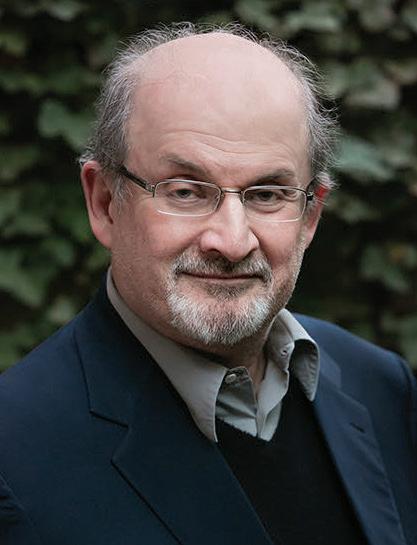
Tue., 9/22 • 7:30pm • Historic Theater


For each 1-2 tickets sold, the purchase of a book voucher (Two Years, Eight Months..., $28 hardcover) is required. Tickets not available online.
The internationally celebrated bestselling author comes to town with his first novel for adults in seven years, a “wonder tale” about the way we live now; a rich and multifaceted work that blends history, mythology, and a timeless love story to bring alive a world – our world – that has been plunged into an age of unreason.
(continued from p. 93)
But after talking to conservators, scholars, and insurance agents, the committee members conceded that it was feasible. The museum had to repair the Morgan’s hull one way or another, and everyone agreed that once that was complete, she’d be as strong as she’d ever been at any point in her career. That covered the could but what about the should ?
WRITERS ON A NEW ENGLAND STAGE IS A PARTNERSHIP BETWEEN:

PRESENTING
SPONSORS:


SERIES SPONSOR: Piscataqua Landscaping & Tree Service
HISTORIC THEATER/BOX OFFICE:
28 Chestnut St., Portsmouth, NH
LOFT: 131 Congress St., Portsmouth, NH
Our 2015 Benefit Auction features a brand new Toyota Camry Hybrid SE, courtesy of your New England Toyota Dealer. Your winning bid puts you behind the wheel of this fuel-efficient sporty sedan and ahead of the curve in support of great local public television. Now that’s a win-win.


www.ripbs.org/auction

Museums are charged with preserving their artifacts above all else. Although the Morgan had proved resilient during her 80-year career— she’d run aground several times, been struck by lightning, weathered two hurricanes, and was briefly set ablaze—any voyage, even with all our modern safety devices, would carry some risk. And unlike other historic vessels that continue operating, the Morgan was the last of her kind. If she encountered some disaster along the way, Mystic Seaport would forever be known as the museum that sank the last American whaleship. That would satisfy White’s desire to do something “different,” but fall distinctly short of “magnificent.”
There were valid reasons to take on the risk, though. Mystic Seaport, which consists of dozens of buildings arranged to resemble a historic shipping district, has always believed in the value of cultivating a “sense of place” as part of its interpretation plan. In what place would a ship like the Morgan be best understood: at port or sailing the open ocean? Stephen White argued that the ship was most relevant at sea and that seeing her there would be an intrinsically more powerful experience, akin to viewing the Mona Lisa in the studio where it was painted.
Ultimately the decision came down to a discussion of the ship’s “soul.” Susan Funk, an executive vicepresident at the museum, recalled that the Morgan ’s curators came to believe that the true essence of some artifacts couldn’t be understood unless they were used.



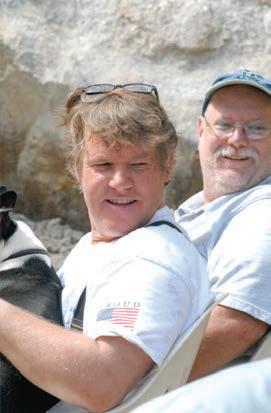

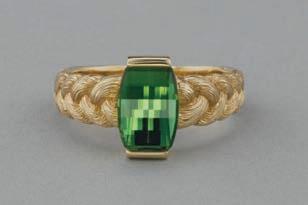













“A violin sitting on a shelf helps you appreciate the craftsmanship that went into making it,” she said, “but it misses the liveliness and the soul of the instrument, which really emerges only when it’s played. And we felt that the same was true of the Morgan. A ship is made to move.”
From the Morgan ’s deck, Files echoed that same philosophy in a gruffer, more matter-of-fact kind of way. As a sailor, he felt that the benefit of sailing the ship was obvious. “It was never designed to be a static symbol at the dock—that wasn’t her function,” he said. “You can’t read about [sailing the Morgan] and expect to learn anything about it. You have to do it.”
Unfortunately, in the depths of the fog there was very little sailing to be done. As a precaution, the Morgan would be towed across Cape Cod Bay until the weather improved. The crew had set half her sails in Provincetown, but that was mostly for show. Now there was little for them to do but swap stories and take turns at the helm, where they’d lazily fix the wheel to mirror the course of the
tug ahead, barely visible in the mist. White had warned passengers and crew that there would be moments like this. The museum had instituted strict guidelines for sailing the ship through inclement weather, and he acknowledged that it might cause some grumblings: “It’s like saying, ‘We know you can ride a bicycle, but we’re still going to keep the training wheels on in case you lose your balance.’”
he wants to wait until we’re a little bit closer,” he said. Just a little bit closer.

As the Morgan neared the trunk of Cape Cod, however, whispers flitted about the ship that we might be let off our leash. The sun had cut through the fog like a ray of hope, and Plymouth’s gray shore could be discerned in the distance. As we turned north, second mate Sean Bercaw offered encouraging insight into the captain’s plan. “I think
As Boston Light’s welcoming blink peeked over the horizon, we were still in tow. Curious pleasure boats came out to meet us and fell in line around the ship. In another hour our colorful flotilla was thick among the outer Harbor Islands. The fort on Castle Island was just coming into focus off the bow when finally the order came to break free. The captain wouldn’t be towed into port without doing at least one victory lap around the harbor, a ponderous pirouette to show the motorboats around us what it meant to truly sail.
At once the crew was on their toes, racing fore to aft and back again. A mate would call out a command, “Fore upper topsail avast!” and hear it immediately echoed by the crew. “Slack out of starboard!” he’d yell. “Slack out of starboard!” came back. All across the ship, ropes were pulled or loosened and tied down, until they reached the perfect combination for the ship to respond. Above, the entire sail structure shifted from port to starboard in one mighty tack—and all of a sudden Castle Island was behind us.
It’s a common cliché for writers to comment on the billowing of the sails and the creaking of the hold, but the Morgan offered no such soundtrack as she swept through the water. With the drone of the tug’s engine finally gone, it became clear just how silent the Morgan was. This ship was tight. Her joints offered not a whisper of complaint, and her sails didn’t so much as shiver. They filled with wind and were still—somehow static and dynamic at the same moment as they pushed her ever forward.
After that first tack, an eerie moment fell over the ship. The sails were set, and the crew’s call-and-response hymn
The wind and the sails and the waves had finally aligned, and the Morgan was truly sailing, cutting an effortless line through the swells of the outer harbor.
took an extended rest. All we could hear was the breaking of water across the bow, like the babbling of a distant stream. This was the moment we’d been waiting for. The wind and the sails and the ship and the waves had finally aligned, and the Morgan was truly sailing, cutting an effortless line through the swells of the outer harbor, perfectly in tune.
And then it was over.




The mates ordered the crew through a second tack, and Boston swung back in front of our bow. The tug re appeared off the port side, and ropes were passed over to secure the Morgan to its hull. We motored the final distance through the reflected grandeur of the city above and arrived at last at Charlestown Navy Yard. Soon the Morgan would begin her journey home, where she’d be relieved of her ballast and resume her second career as a museum exhibit.
Was it worth it? Will the Morgan ’s 38th voyage translate into ticket sales at Mystic Seaport? There were no accountants on board to calculate the PR value of our entrance into Boston, and there’s no way to know whether, 30 or 40 years from now when the Morgan needs another overhaul, the children who witnessed her sail this day will reach wistfully for their checkbooks. Like all historical exercises, the return on investment is impossible to quantify, existing almost solely in the eye of the beholder.
But what can’t be contested is that this sail completed its mission: It was, undeniably, magnificent. And although I can’t say for sure whether or not I witnessed the Morgan’s soul returning in those few moments when the ship sailed free and ocean, crew, and ship worked as one, I can’t deny that something took my breath away.

 — Justin Shatwell
— Justin Shatwell

Justin Shatwell’s story about the shipwrights who gave the Charles W. Morgan new life will be featured in Yankee’s new autumn digital supplement, coming in October.

NUMBER 80

We found a historic five-barn farm in New Boston, New Hampshire, featuring Moses Eaton stenciling, 105 acres, and a gorgeous pond.
t has always been known as Gregg Mill Farm because, well, it was the first place in town to operate a sawmill on the middle branch of the Piscataquog River. The mill itself had to be torn down in 1980, but the dam and sluiceway are still functioning. It was once one of 33 such mills in New Boston. As to the name Gregg, that’s as in Senator (and Governor) Judd Gregg. The Gregg family acquired this property around 1740. Senator Gregg, now retired and living at his family homestead in Rye,
New Hampshire, has actually never lived at Gregg Mill Farm, but the third generation of Greggs to own it was one David Gregg, Judd’s great-great-great-grandfather. The last of the Gregg family moved away in the late 1800s, and the property was taken over by B. J. Lang— a distinguished Boston pianist, conductor, and composer— and his family. One of the farm’s frequent visitors in those days was a Boston lady who happened to establish a worldfamous art museum. Her name: Isabella Stewart Gardner.
Yankee likes to mosey around and see, out of editorial curiosity, what you can turn up when you go house hunting. We have no stake in the sale whatsoever and would decline it if offered.
We met the fourth owners of Gregg Mill Farm, Jay and Dottie Marden, one rather chilly day last spring, just as the landscape was finally turning green. Jay’s family goes back a couple hundred years in New Boston, so we’d say he’s the proverbial New England Yankee in spades. A big man, extremely open and likable, he impressed us as someone who, despite advancing years, can fix anything, build anything, and, well, do anything. Dottie, his wife for the last 50 years, struck us as equally capable. She surely knows how to create delicious frosted breakfast cakes!

We’d settled ourselves in what used to be called the parlor, every inch of which was filled with framed photos, paintings, and old-but-comfortable furniture, including a stunning carved chair and lamp made by the Mardens’ neighbor, Jon Brooks, a well-known sculptor of rather spectacular wooden creations. We were soon joined by three furry feline residents of the farm
OPPOSITE : This five-bedroom Colonial is the main building on the 105-acre Gregg Mill Farm, dating back to the early 1800s. Owners Jay and Dottie Marden, ABOVE , purchased it in 1971. Dining-room walls, TOP AND LEFT, feature original Moses Eaton stenciling, done during the winter of 1810.

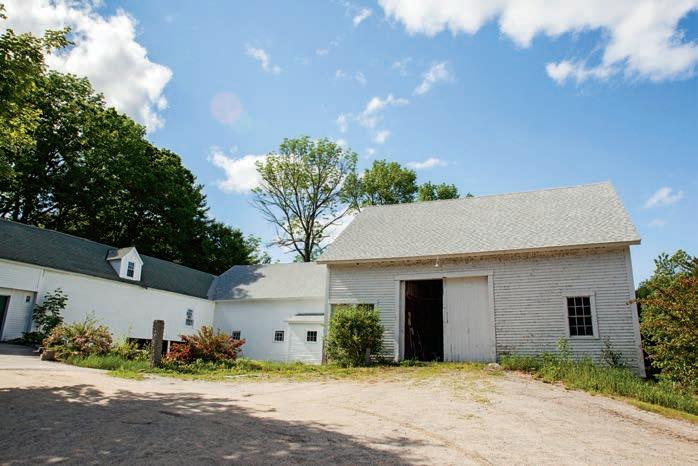
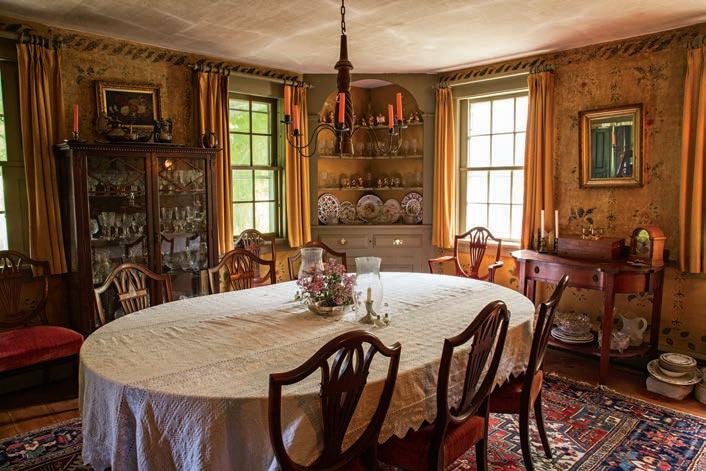
BOTTOM LEFT : Several of the property’s attached barns.
—by the names of Buttermilk, Midnight, and Mike—as well as a small dog named Roscoe.
From where we were sitting, we could see into the adjoining dining room, the outside walls of which are adorned with original stenciling by none other than the famous 19thcentury itinerant artist Moses Eaton. Wow—we know so many owners of old homes who would give most anything to have original, authentic Moses Eaton stenciling on their walls.
“So,” we said at one point, “you’re thinking of parting with this old farm after all these years?”
The outside walls of the dining room are adorned with original stenciling by the 19th-century artist Moses Eaton.
“Well, if we do, we won’t be going anywhere,” replied Jay with a broad smile. “We’ve built a dandy fourbedroom ‘retirement house’ for ourselves. You passed it after you crossed the river on the way in here.” He went on to explain that he and Dottie use it now as income property, just as they do with the two fully equipped rental apartments located over the barns. “We’ve always been pretty financially self-sufficient here,” he said, and then added that, sure, he’d sell their “retirement house,” too. Price of Gregg Mill Farm without the “retirement house”:


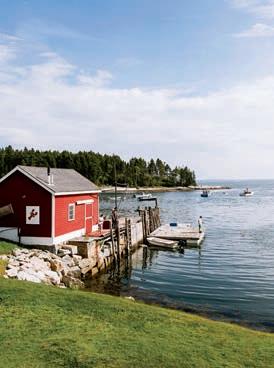

$695,000. With: $1,200,000. “If they want everything,” Jay noted, “we’ll just build ourselves another ‘retirement house’ up the street near our daughter and her family.” (Jay and Dottie have three grown children and three grandchildren.)













To describe everything we saw on our subsequent tour of the property with Jay (and Roscoe) would require many pages. But highlights would include the ten rooms, including five bedrooms, seven bathrooms (including those in the two apartments), several fireplaces and/or woodstove hookups, the dining room we’ve mentioned (featuring that Moses Eaton stenciling), a library, a family room, and … I’m surely forgetting some. There’s a cellar, a new septic system, and a two-car garage. We could picture a certain large upper-floor space as a
master suite. Jay agreed. Almost every room is
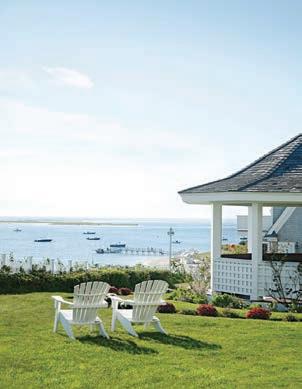
All five barns are chockablock with farm machinery, wagons, tools, and Lord knows what else. The new owner will have a ball sorting through all of it.
framed family pictures, bric-a-brac, or, as they say, just plain “stuff” that Jay and Dottie have acquired during their years together.
Eventually, we found ourselves out by the tennis court (equipped with lights) next to the fishing/swimming/ skating pond, all surrounded by forest and open land. Beautiful. We could have sat out there for the rest of the day. Jay told us that he’d always meant to re-create the original old mill building next to the dam and also do what’s needed to produce electricity for the entire farm. “I just never got around to it,” he mused, “but it could be done.”
Finally, we walked back to the house and then through the connected barns. “It’s nice to be able to feed all the animals during winter days without having to go outside,” Jay said. Although the Mardens used to have animals, they no longer do. Instead, all five barns are chockablock with farm machinery, wagons, tools, and Lord knows what else. The new owner will have a ball sorting through all of it—maybe ending up with an auction or, sure, the yard sale of all yard sales!
But five barns? Well, yes. There’s the carriage house connected to the main house and then the hay barn. Next comes the cow barn followed by the stable for horses, and, finally, the equipment barn. But wait … Jay and Dottie’s “retirement house” has a small barn, too. So if the new owner wants everything, the text below our article’s headline would have to stand corrected. Might it then be the only sixbarn farm in all of New England?
For more information, contact Heidi Palmer/Coldwell Banker RB Bedford, 166 Route 101, Bedford, NH 03110. 603-487-2991, 603-487-2447; pamela.fraser@nemoves.com


P S Happy 80th anniversary, Yankee ! We still love moseying around New England for you. This month’s story is our 503rd. Or is it the 504th? Well, there’ve been a lot over the past 80 years.




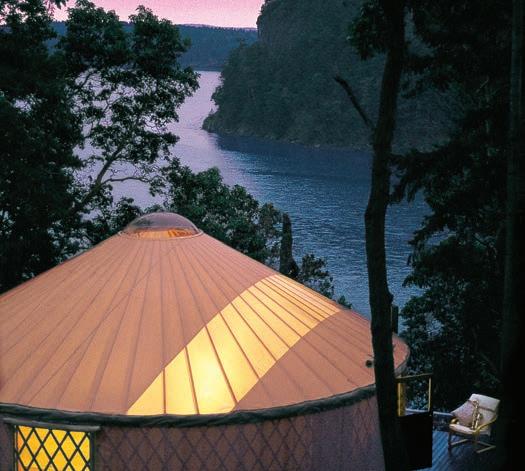 —The Moseyer
—The Moseyer














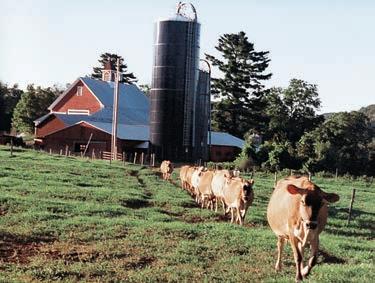
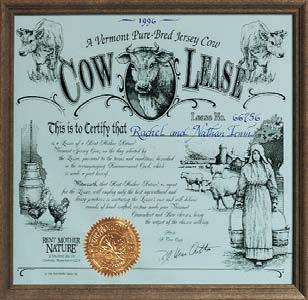





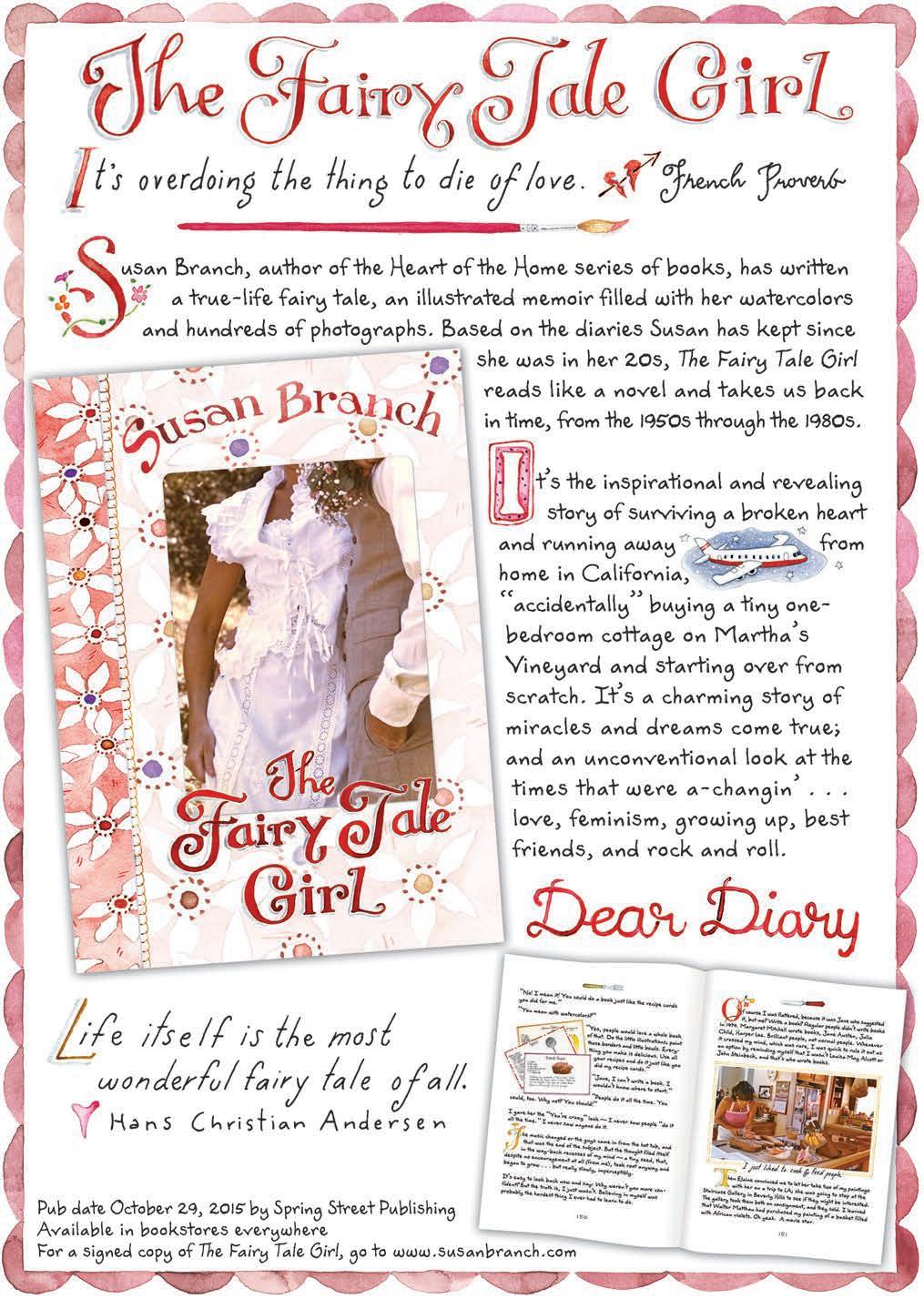
THROUGH NOV. 20: NEW BRITAIN, “The Shakers: Focus on Enfield, Connecticut . ” This show in the New Britain Museum of American Art’s new, permanent Shaker Gallery collects furniture, crafts, textiles, and works on paper from the Enfield Shaker settlement, which was active from 1792 to 1917. 860-229-0257; nbmaa.org
SEPT. 5: COLEBROOK, Colebrook Fair. Now in its 71st year, this Labor Day weekend tradition features a cardboard-boat regatta, a pet show, a frog-jumping contest, pie baking and eating contests, a bake sale, a flea market, a car show, and more, all at Colebrook Center on the Green. 860-379-3359; colebrookfair.weebly.com
SEPT. 9–12: NEW LONDON, Connecticut Maritime Heritage Festival. Beautiful schooners glide along the waters off Ocean Beach Park in a race to the finish. See the ships up close, charter a ride, and enjoy dockside educational programs, a chowder challenge, and family activities. schoonerfest.com
SEPT. 11–13: NORWALK, Oyster Festival . The eponymous bivalves may be the headliners, but the celebration goes far beyond shucking and slurping. Veterans Park rocks with dayto-evening music, international foods, kids’ activities, a lumberjack show, demonstrations, and a juried arts-andcrafts show featuring more than 100 exhibitors. seaport.org
SEPT. 12–13: MONROE, Apple Festival. Get your apples every which way: pies, tarts, caramel coated, fresh, or in a crisp! Peruse the wares of more than 90 crafters and vendors at St. Peter’s Church, pick up your fall mums and asters, and enjoy an extensive menu of delicious items under the food tent. Plus kids’ games, a raffle, and more, all on the town green. 203-268-4265; stpetersonthegreen.com
SEPT. 19–20: NEWTOWN, Newtown Arts Festival. This celebration to promote and support local arts and the community offers a week-
The Edward Waldo Homestead hosts a day of piping, dancing, drumming, competitions, live music, storytelling, Scottish foods, and more. Don’t miss the clan village and the sheepdog demonstrations. scotlandgames.org

end of entertainment, exhibits, and sales outdoors at beautiful Fairfield Hills. Music, dance, lectures, arts and crafts, and delicious food options, too. newtownartsfestival.com
SEPT. 26: PUTNAM, New England Acoustic Music Festival . This one-day block-style festival, held in the town’s Antiques District, highlights emerging and established regional performers. 860-428-1278; neamf.com
OCT. 3: WETHERSFIELD, Fall Craft Fair. Peruse the wares presented by more than 100 artisans at lovely Cove Park: clothing, furniture, seasonal decorations, jewelry, and more. Plus pony rides to amuse the kids, live music, and delicious goodies for everyone’s enjoyment. 860-529-7656; wethhist.org
OCT. 10–11: BETHLEHEM, Garlic & Harvest Festival. Garlic lovers, unite! Head for Bethlehem Fairgrounds and enjoy the cooking demos, gardening lectures, farm produce, specialty food vendors, crafts, a food court, live entertainment, and more. 203-266-7810; garlicfestct.com
OCT. 10–12: MYSTIC, Chowder Days . Mystic Seaport’s Village Green hosts a food festival celebrating a variety of chowders and bisques, plus burgers, clam and apple fritters, mulled cider, berry pies, and other seasonal delights. Take a hayride through the village, and enjoy exploring all the exhibits and tall ships at the Seaport museum, plus face painting and crafts for the kids. 860-572-0711; mysticseaport.org
OCT. 17–18: WOODSTOCK, Roseland Cottage Fine Arts & Crafts Festival. More than175 artisans participate in this juried show on the expansive grounds of historic Roseland Cottage. Enjoy live music, a food court, and first-floor tours. 617-994-5914; historicnewengland.org
OCT. 25–31: NORWALK, Ghostly Sightings Tours & Haunted Basement. Lockwood–Mathews Mansion Museum presents historically focused tours, reflecting the time when this grand home was a private residence. Guests may encounter a ghost from the past on the main level and frightfully fun props in the basement below; the building’s Civil War–era
underbelly has been retrofitted as a spinechilling maze for this special event. lockwood mathewsmansion.com
THROUGH NOV. 1: ROCKLAND, “Andy and Kosti.” This exhibition at the Farnsworth Museum’s Wyeth Center explores the friendship between painter Andrew Wyeth and photographer Kosti Ruohomma, both of whom were known for their depictions of Maine life. 207-596-6457; farnsworthmuseum.org

SEPT. 4–6: CAMDEN, Camden Windjammer Festival . Celebrate Maine’s maritime heritage with the largest gathering of old-style sailing ships anywhere. The event kicks off with a parade of schooners into the scenic harbor, plus maritime-skill exhibitions and contests, a lobster-crate race, a build-aboat contest, and more. camdenwindjammer festival.org

SEPT. 4–13: BOOTHBAY HARBOR, Boothbay Harbor Fest. This 10-day festival of music, food, and fun includes a harbor crawl, a live-music marathon, shopping, art shows, a 5K run, art sales, and more. boothbayharbor fest.com

SEPT. 5–6: BRUNSWICK, Great State of Maine Air Show. Dynamic aviation performances, including the elite U.S. Air Force Thunderbirds, plus impressive static displays, interactive booths, and more cap off a high-flying weekend at Brunswick Executive Airport. 207-798-6512; greatstateofmaineairshow.us
SEPT. 12: STATEWIDE, Open Lighthouse Day. This popular event offers a rare opportunity to explore more than two dozen of Maine’s historic lights. See the website for a full listing and locations. lighthousefoundation.org/ maine-open-lighthouse-day
SEPT. 19: BETHEL, Harvestfest & Chowdah Cook-off. Stop by the village common for an old-fashioned fun fall festival, including an arts and crafts fair, chowder and apple-pie cook-offs, demonstrations, hiking, biking, canoeing, chainsaw carving, apple picking, a farmers’ market, plenty of food, live entertainment, guided and self-guided bike tours, and more. 207-824-2282; bethel harvestfest.com
SEPT. 26–27: SOUTH BERWICK, Hamilton House

Fine Arts & Crafts Festival. This striking 18th-century Georgian mansion, on the bluff above the Salmon Falls River, will be open for first-floor tours, while the property’s beautiful grounds serve as backdrop to the works of 175 artisans: jewelry, woodworking, pottery, glass, toys, paintings, clothing, metalwork, and much more. Plus live music and fine foods. 617-994-5914; historicnewengland.org
SEPT. 27–OCT. 3: CUMBERLAND, 144th Cumberland County Fair. It’s a family-friendly week of entertainment and agricultural education. This year’s exhibitions include two pro rodeo events and Saturday-night fireworks, plus midway rides, a demolition derby, livestock shows, and more, all at the local fairgrounds. 207-829-5531; cumberlandfair.com
OCT. 3–12: DAMARISCOTTA, Pumpkinfest & Regatta. A giant pumpkin contest, a pumpkin catapult, a pumpkin derby, a pumpkin drop, a pumpkin-pie-eating contest … Perhaps you detect a theme? Catch all the activities at various locations across town.

SEPTEMBER 10–14


Bar Harbor, Maine
A community celebration of Down East’s stellar celestial dome, with guided night hikes, stargazing, lectures, photography, workshops, boat cruises, films, and more at various locations around ational Park. This year’s keynote speakers will be astronaut Dan Barry and geologist John A . Grant III of the Smithsonian Center for Earth & Planetary Studies at the National Air & Space Museum. 207-801-2566; acadianightskyfestival.com
Don’t miss the great pumpkin-boat regatta
207-677-3087; damariscottapumpkin
Fryeburg Fair. “Maine’s Blue Ribbon Classic” offers livestock shows, baking competitions, harness racing, and an array of garden and craft exhibits, plus midway rides and live entertainment across five stages daily, all at Fryeburg Fairgrounds. 207-
OCT. 10–11: SOUTHWEST HARBOR, 20th Acadia Top Maine brewers will convene at Smuggler’s Den Campground to offer samples, while local food vendors tempt festivalgoers with an international menu. Shop the craft tent, and enjoy live music, too. 207-244-
Harvest on the Harbor. Foodies descend on the waterfront as Greater Portland celebrates its talented chefs. Check out the chef competitions, wine-education presentation, cooking demonstrations, live entertainment, and more. 207-772-4994;

OCT. 23–25: OGUNQUIT, 12th Annual Ogunquitfest. A family-friendly weekend of fall-themed events throughout the downtown area: pumpkin and cookie decorating, a costume parade, a classic-car show, a craft bazaar, a haunted house, high-heels and bed races, ghost tours, wagon rides, storytelling, a scarecrow contest, and more. 207-646-2939; visitogunquit.org

THROUGH SEPT. 27: WENHAM, “War on the Home Front: Domestic Life During Wartime.” The Wenham Museum commemorates the 150th anniversary of the end of the Civil War and the 70th anniversary of the end of World War II with an exhibit featuring U.S. propaganda posters, uniforms, and other artifacts. 978468-2377; wenhammuseum.org
SEPT. 2, 11, 25; OCT. 2, 9, 16, 23, 30: LENOX, Ghost Tour. Explore the history of The Mount, Edith Wharton’s gracious homestead, where a succession of writers, actors, wealthy families, hardworking servants, and teenage girls

OCTOBER 3


South Deerfield, Massachusetts
Yankee Magazine lifestyle editor my Traverso will be on hand to sign her Apple Lover’s Cookbook and host a cooking demo as Yankee andle Village hosts fruit and cider tastings, live music, hayrides, and more. Meet local orchardists and sample seasonal flavors from Popcornopolis and Yankee Candle Fudge. lus, don’t miss the special limited-edition candle created just for Apple877-803-6890; yankeecandle.com
lived for more than a century. Take a guided tour of the most haunted parts of the estate to find out who may still call the mansion home. Advance registration required. 413551-5111; edithwharton.org


SEPT. 5–7: STURBRIDGE, Family Fun Days. Labor Day weekend games and excitement for everyone at Old Sturbridge Village: Play baseball the way Early New Englanders did it, make a craft, join in on “Frenchand-English” (tug-of-war), meet the oxen in training, watch a puppet show, visit the Freeman Farm, and more. 800-733-1830, 508-347-3362; osv.org
SEPT. 5–OCT. 25: CARVER, King Richard’s Faire. Step back into the fantastical era of jousting knights and strolling minstrels, and mingle with the king and his royal (and not so royal) subjects amid his 80-acre fairgrounds off Route 58. Each weekend, eight stages present music, dance, storytelling, stunts, and more.Shop the 16th-centurystyle village filled with wares crafted by more than 100 talented artisans, and feast on fabulous food and spirits. 508-866-5391; kingrichardsfaire.net
SEPT. 10–13: GREENFIELD, Franklin County Fair. The county fairgrounds hosts livestock barns, fish and game exhibits, baby animals, midway rides, classic fair food, live music, horse and oxen draws, and more. Don’t miss the produce and craft displays in the magnificently restored historic Roundhouse (a local landmark). 413-774-4282; fcas.com

SEPT. 12–13: WALPOLE, Oktoberfest. Live music and dance, kids’ games, pony rides, and target shooting are just some of the activities offered on the grounds of the Boylston Schul-Verein club. Enjoy traditional German fare (including sausage and potato pancakes), beer, and more. 508-6602018; germanclub.org
SEPT. 18–20: EAST FALMOUTH, ScallopFest

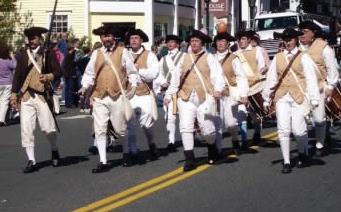


2015. Head down to Cape Cod Fairgrounds for scallops, seafood, and chicken, midway rides and games, and terrific headline entertainment, plus a juried craft fair featuring the works of more than 125 artisans: watercolors, photography, pottery, folk art, jewelry, metalwork, and more. 508-759-6000; scallopfest.org


SEPT. 18–20, 25–27: NORTH SHORE, Trails & Sails: Two Weekends of Walks & Water. Celebrate the region’s distinctive history, breathtaking landscapes, and hidden gems at more than 150 free events across the 34 cities and towns of the Essex National Heritage Area: kayaking, picnicking, schooner sailing, museum presentations, scenic drives, tours, and much more. Grab the full schedule at the website before you go. 978-740-0444; essex heritage.org/ts


SEPT. 26–27: NEW BEDFORD, Working Waterfront Festival. This family-friendly celebration educates and entertains with an array of free programs. Explore the historic and contemporary role of fishing, while enjoying live music, kids’ activities, cooking demonstrations, vessel and harbor tours, fishermen’s contests, author readings, film screenings, delicious local seafood, a maritime artisans marketplace, and more. 508-993-8894; workingwaterfrontfestival.org
SEPT. 26–27: PITTSFIELD, Country Fair. Hancock Shaker Village celebrates the harvest with a farmers’ market, horse-drawn wagon rides, regional crafts and foods, live music, agricul-


tural demonstrations, and a quilt show in the historic and magnificent Round Stone Barn. Don’t miss the chicken races! 413-443-0188; countryfair.hancockshakervillage.org
SEPT. 26–27: PLYMOUTH, 2015 #icraft Celebration. Celebrate the crafts of the 17th century with more than 50 artisans, musicians, and foodies (including Yankee associate editor Aimee Seavey) as Plimoth Plantation staff and visiting “makers” demonstrate historic skills ranging from furniture making to beekeeping. Don’t miss the chance to see how Plimoth Bread Company’s signature loaves are made (and sample the results). 508-7461622; plimoth.org
SEPT. 26–27: SALISBURY, Vintage Bazaar. Visit Pettengill Farm to check out more than 175 outdoor boutiques offering antiques, repurposed goodness, and artisanal creations. Lots of music, activities, demonstrations, and food trucks, too! 978-462-3675; pettengillfarm.com
OCT. 1–31: SALEM, Haunted Happenings. A month-long salute to both Halloween and the season of bounty, offering a variety of programs and attractions, including parades, tours, and sights and frights for all ages. hauntedhappenings.org

OCT. 2–12: TOPSFIELD, Topsfield Fair. The country’s oldest continuously operating agricultural event just keeps getting bigger and better. Enjoy headline entertainment, 4-H competitions, midway rides, games, tempting treats and great fair food, and more, all at the Fairgrounds. 978-887-5000; topsfieldfair.org
OCT. 10: NANTUCKET, 13th Cranberry Festival. Milestone Cranberry Bog invites you to learn about the harvest and history of our most vivid native fruit, while enjoying a variety of additional activities on site: sheep shearing, herding, and weaving demonstrations; hayrides and old-fashioned games; plenty of food, tours, and more. 508-228-2884; nantucket conservation.com
OCT. 17–18: WELLFLEET, OysterFest. Give a nod to the town’s most famous bivalve, and explore the shellfishing tradition as you sample hometown fun and flavor. Enjoy local cuisine, arts and crafts, educational programs,
TEMBER 4–7
Contoocook, New Hampshire
n annual tradition hits the century mark at Hopkinton Fairgrounds, featuring livestock, home and garden exhibits, a petting zoo, pulling competitions, midway rides, pony rides, live performances, and much more. 603-746-4191; hsfair.org
cooking demonstrations, kids’ activities, walking tours, live music, a road race, and the annual Oyster Shuck-Off competition, all in the downtown area. wellfleetoysterfest.org
OCT. 23–24: BOSTON, Book Festival. Copley Square is the place to meet featured authors representing a wide array of genres. Award winners and best-selling authors, renowned scholars, children’s writers, and writers of fiction, nonfiction, and poetry gather for presentations, panels, and participatory sessions. 617-945-9552; bostonbookfest.org
OCT. 24: ESSEX, Essex Clamfest. Stop by Memorial Park to sample the delectable offerings of at least 10 area restaurants, competing for your top vote in the clam-chowder competition. Plus kids’ games, arts and crafts, vendors, and more. 978-283-1601; visitessexma.com
THROUGH OCT. 12: NEWBURY, “Art in Nature 2015: Outdoor Sculpture.” A contemporary exhibit of some of the finest New England works, on the lush grounds of the historic Fells estate. 603-763-4789; thefells.org
OCTOBER 1–NOVEMBER 1
Jack-O-Lantern
Providence, Rhode Island
Roger Williams Park Zoo after dark for a display of 5,000 illuminated pumpkins set along the site’s beautiful wetlands trail, presented in themed scenes with musical accompaniment, as well as more than 100 additional pumpkins intricately carved into works of art. This year’s presentation will bring back favorites from the event’s 27-year history, including Phantom of the Opera, the Golden Age of Hollywood, and Charles Darwin’s trip to the Galapagos Islands. 401-785-3510; rwpzoo.org
SEPT. 4–7: FRA NCESTOWN, Labor Day Festival. For the 98th year, the celebration continues downtown with a parade, a band concert, a juried arts-and-crafts fair, a road race, plenty of great food, and much more. This year’s theme is “Super Stars & Super Heroes.” 603547-3600; francestownhistory.org
SEPT. 11–13: HAMPTON BEACH, Seafood Festival. Continuous live music accompanies the sampling of seafood delicacies prepared by some 50 area restaurants. Plus chef demonstrations, contests, arts-and-crafts vendors, sidewalk sales, fireworks, and more. 603-926-8718; hamptonbeachseafoodfestival.com
SEPT. 12: CANTERBURY, Canterbury Artisan Festival. Celebrate traditional arts with a juried craft fair, plus farmers’ market, music, food, and demonstrations of blacksmithing, basketry, tea brewing, and more at Canterbury Shaker Village. 603-783-9511; shakers.org
SEPT. 18–20: LINCOLN, New Hampshire Highland Games. Loon Mountain hosts more than 30 pipe bands, plus competitions in dance, fiddle, and harp. Don’t miss the athletic events, whiskey tastings, living-history area, seminars, sheepdog trials, and more. 603745-8111; nhscot.org
SEPT. 26: CORNISH, Sculptural Visions. At SaintGaudens National Historic Site, artists demonstrate bronze casting and clay, wood, and stonework techniques. Plus hands-on activities for the kids and a musical performance on Antoinette Jackson’s Fire Organ sculpture. 603-675-2175; nps.gov/saga
SEPT. 26–27: PORTSMOUTH, Fairy House Tour. This event boasts more than 200 wee handcrafted domiciles on the grounds of the Governor John Langdon House, Strawbery Banke Museum, Prescott Park, and Peirce Island. While you’re in town, take in the Maritime Folk Festival in Market Square, as well. 603436-2848; portsmouthfairyhousetour.com; new englandfolknetwork.org/pmff
OCT. 1–4: DEERFIELD, 139th Deerfield Fair. A time-honored tradition of agricultural family fun, with livestock competitions, a variety of entertainment and live music, concessions, midway rides, a demolition derby, and more, all at Deerfield Fairgrounds. 603-463-7421; deerfieldfair.com
OCT. 4: PORTSMOUTH, 2nd Annual New Hampshire Food Truck Festival. Red Hook Brewery hosts the state’s largest congregation of wheeled food vendors. From Vietnamese

sandwiches to lobster rolls, from duck tacos to frozen hoagies, from juicy burgers to fresh, bubbling pizza, we bet you can’t get to them all! 617-782-7117; foodtruckfestival sofne.com
OCT. 10–11: MONADNOCK REGION, Art Tour. Enhance your foliage drive through the beautiful countryside by picking up a map and following the signs to the homes and studios of the region’s artists. Have a visit, ask questions, and view a variety of fine artwork. Studios are open from 10:00 a.m. to 5:00 p.m. monadnockart.org



OCT. 10–12: CENTER SANDWICH, Sandwich Fair. Swing by the fairgrounds for a truly New England agricultural event, complete with arts and crafts, a midway, 4-H shows, an antique-car parade, live music, and more. 603-284-7062; thesandwichfair.com
OCT. 10–12: LINCOLN, Fall Craft Festival. The Village Shops area and the town green host more than 150 juried artists and crafters presenting an array of handmade goods, including jewelry, scarves, ceramics, leather, furniture, blown glass, folk art, specialty foods, and more. 603-332-2616; castleberryfairs.com
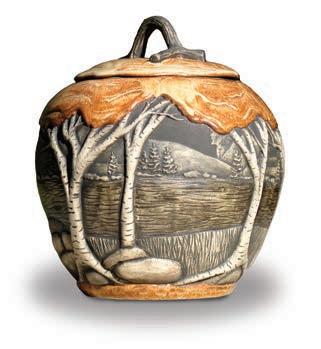
OCT. 24: CANTERBURY, Ghost Encounters. Explore Canterbury Shaker Village at dusk for an entirely otherworldly experience at this 200-year-old historic site. Stroll the village for trick-or-treating, hear true village ghost accounts from the storytellers, and enjoy Halloween-themed activities and hot cider at this family-focused event—come in costume! 603-783-9511; shakers.org


SEPT. 4–6: CHARLESTOWN, 18th Rhythm & Roots Festival. With some 40 musical groups or performers in the lineup, festivalgoers at Ninigret Park will be grooving to the beat for hours on end. Take a break to sample the variety of tasty food selections (including Cajun and Creole dishes), shop for souvenirs, and more. rhythmandroots.com
SEPT. 5: PAWTUCKET, Chinese Dragon Boat Races & Taiwan Day Festival. Watch these long, colorful vessels race along the Blackstone River off the School Street pier, or simply enjoy the onshore activities and entertainment, with an emphasis on competition and fun. 401-724-2200; dragonboatri.com

SEPT. 17–20: NEWPORT, International Boat Show. At the Newport Yachting Center, discover one of the largest in-water boat shows in the country and the premier show in the Northeast: all makes and models of powerboats and sailboats ready for boarding, plus an array of marine products and services to enhance the boating lifestyle. 401-8461115; newportboatshow.com

SEPT. 19–20: BRISTOL, Annual Harvest Fair. A traditional autumn festival, combining 18th-century flavor with modern appeal, held on the bucolic grounds of Coggeshall Farm Museum. Perfect your aim in the watermelon-seed-spitting contest, or just enjoy live music, historic-trade demonstrations, hands-on childrens’ crafts, competitions, the Muck Boot Fashion Show, and more. 401-253-9062; coggeshallfarm.org



SEPT. 25–27: BLOCK ISLAND, 7th Annual Taste of Block Island. More than 60 local businesses join together to host a variety of gallery openings, wine and beer tastings,

shopping deals, hotel and restaurant specials, kayak tours, and more. Purchase your “Taste of Block Island” button to receive a full listing of the many lunch and dinner discounts and additional sales. 800-383-2474; tasteofbi.com
SEPT. 25–27: NEWPORT, 10th Newport Mansions Wine & Food Festival. A sophisticated event at Rosecliff, Marble House, and The Elms brings together top vintners and fine-foods purveyors. Don’t miss the two-day grand tasting, outstanding food and wine, silent and live auctions, wine seminars, celebrity-chef appearances, and cooking demonstrations. 401-847-1000; newportmansions.org
SEPT. 26: LINCOLN, Great Road Day. Eight sites along the historic byway, one of the oldest in America, will be open free for touring. Start with “The House That Love Built,” Hearthside, and continue on to discover the Arnold House, the Captain Wilbur Kelly House, and more. hearthsidehouse.org
OCT. 3–4: MIDDLETOWN, Harvest Fair. Norman Bird Sanctuary hosts an old-fashioned fair with food, games, crafters, hayrides, a mud pit, and competitions. 401-846-2577; norman birdsanctuary.org
OCT. 17–18: NEWPORT, 25th Bowen’s Wharf Seafood Festival. Savor the region’s ocean harvests: fresh, local seafood presented by area restaurants and fishermen’s associations (lobster, chowder, stuffed quahogs, clam cakes, shrimp, scallops, raw oysters and clams, plus fare for landlubbers and kids). Spirits, soft drinks, and desserts aplenty, plus continuous live music, all beneath the wharf’s colorful tents. 401-849-2243; bowenswharf.com
OCT. 17–18: WYOMING, 10th HopArts Studio Trail. Enjoy the beauty of fall and the rural charm of the state’s southwestern corner as you take in the works of more than 25 artists within a seven-mile radius. Studios are open to the public, with artists offering demonstrations, technical information on their crafts, and works for sale. hoparts.org
SEPT. 5–6: BENNINGTON, 20th Garlic & Herb Festival. Everything’s better with garlic! Get your fix in the Camelot Village area, where more than 100 vendors gather. Chat with the growers and savor garlic-laced foods. 802447-3311; lovegarlic.com
SEPT. 5–12: RUTLAND, 170th Vermont State Fair. Celebrating agriculture since 1846! Reach new heights on the Ferris wheel, thrill to the action of the demolition derby, try your luck at games of chance, ride the carousel, enjoy competitions and 4-H animal shows, and indulge in some tasty treats (fried dough, anyone?), all at the Vermont State Fairgrounds. 802-7755200; vermontstatefair.net
SEPT. 6: RANDOLPH, 23rd New World Festival. Celebrate the vitality of northern New England’s Celtic and French Canadian heritage through music and dance. Six stages in the historic village center feature music, storytelling, and dance. Purchase tickets in advance. 802-728-6464; chandler-arts.org
SEPT. 13: WINDSOR, 3rd Mac & Cheese Challenge. Artisan Park will be deep in cheddary goodness, with 30 delectable comfort-food creations served up by local chefs and restaurants. Enjoy live music and a petting zoo, and don’t forget to cast your vote for the People’s Choice Award. 802- 457-9992; vtmacandcheese.com
OCTOBER 1–4

Brattleboro, Vermont
Celebrating the region’s rich literary roots: Multiple downtown locations offer readings, panel discussions, and special events. This year’s participants include, among many others, poet Rachel Eliza Griffiths (LEFT); fiction writers Ann Beattie, Francine Prose, Ernest Hebert, and Castle Freeman Jr., a Yankee contributor; and nonfiction authors Michael Blanding and Ann Hood, also Yankee contributors. brattleboroliteraryfestival.org
SEPT. 17–20: TUNBRIDGE, Tunbridge World’s Fair. Explore family-farm traditions with antique machinery and implements, and visit the authentic one-room schoolhouse on display at Tunbridge Fairgrounds. Daily pig races, harness racing, livestock and gardening competitions, plus live entertainment, tempting fair foods, an old-fashioned carnival, and more. 800-889-5555; tunbridgeworldsfair.com
SEPT. 26: BURKE, Fall Foliage Festival. Celebrate the season in the village center with horse-drawn wagon rides, a rubber duck race, craft vendors, a beer and wine tent, a petting zoo, a parade, live music, and games—plus enjoy a soup-and-sandwich luncheon and tag sale put on by East Burke Congregational Church. 802-626-4124; burkevermont.com
OCT. 1–3: WESTON, Weston Antiques Show. A benefit at the Weston Playhouse, featuring renowned dealers from across the nation presenting furnishings, silver, Americana, folk art, rugs, jewelry, and more for sale. Proceeds go toward historic preservation of area buildings. weston-vermont.com
OCT. 2–4: STOWE, Oktoberfest. It begins with the Grand Parade, complete with floats and marching bands making their way to the town’s events field, where the festivities include authentic German foods and live music, freshly brewed Vermont beers, kids’ activities, and more. stoweoktoberfest.com
OCT. 9–11: STOWE, 31st Foliage Arts Festival. Some 150 juried artisans convene on Stowe Field for the area’s biggest autumn arts event, complete with food, wine, beer, and entertainment. 802-425-3399; craftproducers.com
OCT. 10–11: WEST DOVER, 18th Mount Snow Oktoberfest. A little German fare, a little oompah music in the air—fun for all ages. Kids enjoy festival games, face painting, pumpkin painting, and the famous schnitzel toss, while adults pursue their own competitions, including yodeling and stein-holding contests, a keg toss, and horseshoes. Sip both German and domestic brews in commemorative steins. 800-245-7669; mountsnow.com
OCT. 24: WARDSBORO, 13th Annual Gilfeather Turnip Fest. On e of the state’s tastiest heirloom vegetable s takes center stage for a day, with turnip contests, a craft show, a farmers’
market, live music, turnip tastings, and more, all at the town hall and under the big tent on Main Street. friendsofwardsborolibrary.org
OCT. 25: WOODSTOCK, Family Halloween. Billings Farm & Museum offers a treat for the kids with a day of delightful activities, including doughnuts on a string, pumpkin carving, costume parades, Halloween tales, wagon rides, and more. 802-457-2355; billingsfarm.org
Regionwide
For one day only, participating museums will emulate the Smithsonian’s freeadmission policy to encourage cultural learning nationwide. Download a free ticket (good for the holder and one guest) and check participating venues: smithsonian.com/museumdaylive
Call ahead to confirm dates, times, and possible admission fees.
To submit an event online, go to: YankeeMagazine.com/submitevent
To find more events in your area, visit: YankeeMagazine.com/events
• Chef Matt Tropeano, profiled in our July/Aug. issue (p. 62), has left Pain D’Avignon to open his own restaurant, Spoon and Seed, in Hyannis, Mass.
• Correct phone numbers for the Chatham Bars Inn (July/Aug., p. 50) are 508-945-0096 and 800-527-4884.
• Kimball Farm’s Cruise Nights in Jaffrey, NH (July/Aug., p. 70), are Wednesdays, 5–9 p.m., June–Sept. Note that Kimball’s doesn’t serve bubblegum-flavor ice cream.

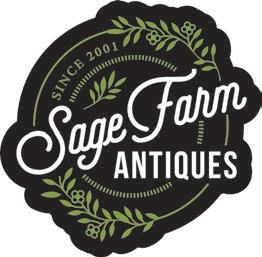
OCTOBER 2-4

OPEN DAILY YEAR-ROUND 9 ROUTE 183
STOCKBRIDGE, MA
Roz Chast: Cartoon Memoirs on view through October 26, 2015
“A must-see in the Berkshires!” Enjoy the world’s largest collection of original Rockwell art. This summer, featuring the art of award winning New Yorker cartoonist Roz Chast. Rockwell’s studio open May-Oct. Seasonal café.
www.nrm.org
413-298-4100
SEPTEMBER 26 AND 27
137 WARREN AVE.
PLYMOUTH, MA
Plimoth Plantation is hosting a weekend-long event dedicated to craft at the Museum’s second annual #icrafthistory celebration, September 26 and 27, with exhibits, demonstrations and workshops.

www.plimoth.org/icrafthistory
9:30 AM — 5 PM ROCHESTER FAIRGROUNDS ROCHESTER, NH
A show featuring 100 antique, vintage, repurposed, upcycled and folk art dealers along with the newly formed Rochester Farmer’s Market. Food vendors, live music and HGTV stars! Get more information at our website. Visit our Facebook page at facebook/sagefarmantiques www.sagefarmantiques.com (click on Events and October)
603-964-3690
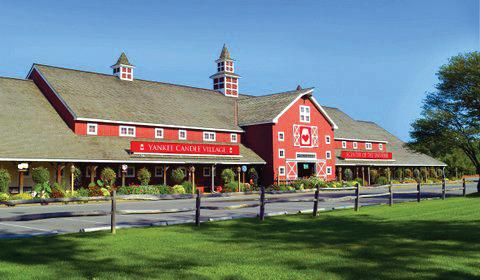
SATURDAY, OCTOBER 3 & SUNDAY, OCTOBER 4 25 GREENFIELD ROAD SOUTH DEERFIELD, MA
Come join us at Yankee Candle Village for our very first AppleFest! Experience all things local with apple and cider tastings, live music, hayrides, cooking demos by Amy Traverso and more.
www.yankeecandle.com/village
877-636-7707

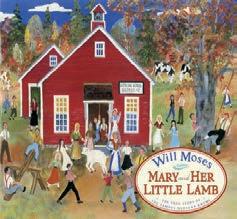




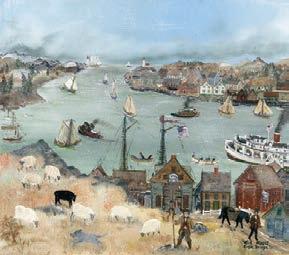



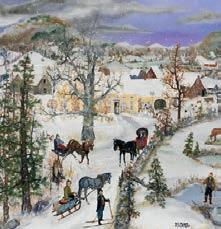
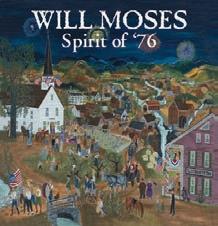

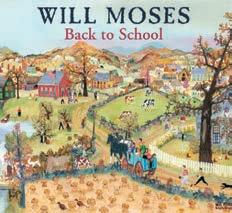
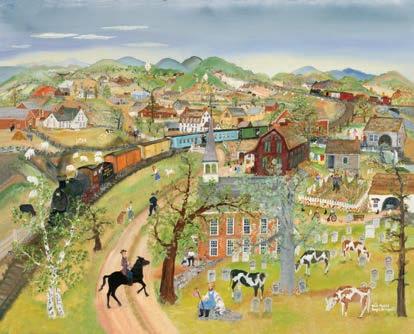

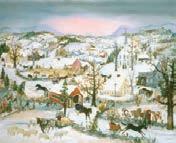
Be Certain. Buy Certified.® Birds & Beans is Shade Grown, USDA Organic and Fair-Trade certified. Our great tasting coffee is good for birds, people and the planet. Drink the good co ee.







BUY NOW ONLINE!

1. Robb Sagendorph: Visit Yankee ’s offices at 1121 Main Street in Dublin, New Hampshire. YankeeMagazine.com/Robb
2. Glenwood Stove: Erickson’s Antique Stoves in Littleton, Mass., offers these vintage appliances. ericksonsantiquestoves.com
3. Life in the Kingdom: Learn how to live off the land through Sterling College’s programs focusing on sustainability, and check out other stories in Ben Hewitt’s series. sterling college.edu; YankeeMagazine.com/Life
4. Craftsbury General Store: Read more about this classic Vermont site. YankeeMagazine .com/Store
5. Yankee Humor: For a healthy dose of local laughs, check out Tim Sample and the Maine Humor Company; “Only in New England” author Ken Sheldon’s alter ego, Fred Marple, will take away the day’s troubles with his new book. timsample.com; frostheaves.com
6. Walking Beacon Hill: bostonbyfoot.org
7. Immortal Words: Visit Nathan Hale’s home in Coventry, Conn. ctlandmarks.org/content/ nathan-hale-homestead
8. Frisbee: Watch Yale play in the annual Ultimate Frisbee Coffee Cup Tournament, held late in the fall. yale.edu/superfly
9. Fall Photos: Enter your best shot into our fallfoliage photo contest. YankeeMagazine.com/

FallPhoto
10. Writers’ Homes: Read Guide to Writer’s Homes in New England by Miriam Levine, former chair of the English department at Framingham State University. Also, find out why Mark Twain slept in his bed the wrong way around. YankeeMagazine.com/Bed
11. Nubble: A two-and-a-half-hour drive up the coast from the Nubble will bring you to America’s largest collection of lighthouse artifacts: the Maine Lighthouse Museum in Rockland. Also, check out additional photos online at Yankee nubblelight.org; mainelighthousemuseum .com; YankeeMagazine.com/Nubble
12. Fly Rod Crosby: Visit the Crosby exhibit at the Rangeley (Maine) Outdoor Sporting Heritage Museum. rangeleyoutdoormuseum.org
13. Jenne Farm: See more photos of classic New England farmsteads at Yankee ’s site; then stay at a B&B two miles from Jenne Farm and see the sunrise over the landscape. YankeeMagazine .com/Barns; baileysmills.com/area.html
14. Trail Ride: conwayscenic.com
15. Kancamagus: kancamagushighway.com
16. Northeast Kingdom: travelthekingdom.com
17. Route 100: vermont-byways.us/Route_100; YankeeMagazine.com/100
18. Johnny Appleseed: Check out our favorite orchards. YankeeMagazine.com/Orchards
19. Crimson: The Cape Cod Cranberry Growers’ Association lists properties that welcome the public. cranberries.org/visit
20. Cape Cod House: Peruse The Cape Cod House: America’s Most Popular Home by Stanley Schuler, and A Book of Cape Cod Houses by Doris Doane.
21. Wicker: Jeremy Adamson’s American Wicker: Woven Furniture from 1850 to 1930 tells you about the use, symbolism, and art of this iconic and beautiful craft.
22. Flea Markets: Check out “Tips for Shopping at Garage Sales & Flea Markets.” Yankee Magazine.com/Flea
23. Tupperware: See early models at the National Museum of American History in Washington, D.C., or at the Tupperware factory museum in Orlando, Florida. americanhistory .si.edu; tupperwarebrands.com
24. Arnold Arboretum: Free guided tours on Saturdays at 10:30 a.m. and Sundays at 1:00 p.m. arboretum.harvard.edu
25. Fannie Farmer: Find a copy of one of the many editions of her classic cookbook at your local used-book shop, or go online for the text of the 1918 edition, the last version written completely by Farmer herself. YankeeMagazine .com/Used-Books ; bartleby.com/87
31. Chowder: See the recipes we named “Best Chowders in New England.” YankeeMagazine .com/Chowder
32. Fried Clams: Check out Woodman’s online; then listen to Yankee editor-in-chief Jud Hale ponder who fried the first clam. woodmans .com; YankeeMagazine.com/clam
33. Steamed Lobster: nunanslobsterhut.com
34. Gifts of the Soil: Read all about them at our sister publication, The Old Farmer’s Almanac almanac.com/gardening
35. Julia Child’s Kitchen: americanhistory.si.edu/ food/julia-childs-kitchen
36. Louis’ Lunch: louislunch.com
37. Indian Pudding: YankeeMagazine.com/newengland-traditions/indian-pudding
38. Charles W. Morgan: Watch the crew prepare the ship for sea; then visit her at Mystic Seaport. YankeeMagazine.com/Morgan; mysticseaport.org
39. Covered Bridges: Learn more about them at the Benning ton (Vermont) Center for the
26. Toll House Cookies: See our new take on the classic, turning the beloved cookie into a pie. YankeeMagazine.com/Tollhouse
27. Sylvester Graham: Dine at Sylvester’s Restaurant, the former Graham home in Northampton, Mass.; then try our cracker recipe. sylvesters restaurant.com; YankeeMagazine.com/Graham
28. Takeout Food & School Lunch: One in five schoolchildren in America faces hunger— learn how you can help. nokidhungry.org
29. Frozen Food: Clarence Birdseye turned an observation from a trip to the Arctic into an industry. Learn more in Birdseye: The Adventures of a Curious Man by Mark Kurlansky.
30. Gourmet Ice Cream: To try one of Herrell’s 200+ flavors, stop by the shop’s flagship location in Northampton, Mass. herrells.com
Arts Covered Bridge Museum, and check out Yankee ’s photos online. thebennington.org/ covered-bridge; YankeeMagazine.com/Bridges
40. Old Ironsides: The USS Constitution is in dry dock at the Charlestown Navy Yard from 2015 to 2017. However, tours of the ship’s spar deck are held Tues.–Fri., 2–6 p.m., and Sat.–Sun., 10 a.m.–6 p.m., no charge; also, visit the museum next door. ussconstitutionmuseum.org
41. Cemeteries: Check out our list of the most beautiful burying grounds in New England. YankeeMagazine.com/Cemeteries
42. Early Houses: Two of the best towns for walking past historic New England homes bearing the names of their early builders and owners are Wickford, Rhode Island, and Old Wethersfield, Conn.




It’s not just your hearing problem. By not seeking needed help, you and everyone around you are suffering. The longer you wait to act the longer it takes to recover your hearing.

It’s no secret we have been in business for over 26 years Neutronic Ear changed the industry with the best affordable hearing solutions while continually delivering new innovative products with the latest advancements technology has to offer. The SECRET TM is virtually invisible, lightweight, and comfortable. The SECRET TM comes complete with patented pre formed sound tubes with a canal lock for a custom fi t. The Volume control button has 4 listening settings with built in noise suppression. At the press of a button, you can fi ne tune to your individual hearing needs. The SECRET TM comes equipped with a passive telecoil for enhanced hearing on the phone and with hearing aid compatible cell phones. The SECRET TM is delivered right to your home. Start hearing what you have been missing. Call our LIVE award winning customer care specialists to learn about our amazing new SECRET TM and how to become one of our over ONE MILLION satisfi ed customers.




We are so sure you will absolutely love the quality and clarity of sound that we offer our Exclusive Wear it in Your Home Offer. We care deeply about each of our customer’s hearing needs. If you are not amazed by the sound and quality of this product, simply return it within 30 days for a refund. Let us save you thousands of dollars.










43. 54th Massachusetts: The Augustus SaintGaudens monument, across the street from the State House in Boston, portrays Shaw leading the 54th down Beacon Street. nps.gov/boaf
44. Ken Burns: Read about how Ken Burns brought a striking reminder of the human cost of war into millions of American households; then visit Swan Point Cemetery in Providence, R.I., where Ballou and his wife, Sarah, are buried side by side. pbs.org/civilwar; Yankee Magazine.com/Swan-Point
45. Fall Color: Live color maps, weekly foliage reports, peak forecasts, best fall drives, and “Top 25 Foliage Towns.” YankeeFoliage.com
46. Baxter: baxterstateparkauthority.com
47. Mount Washington Weather Observers: At the summit the Extreme Mount Washington exhibit spotlights the record-breaking wind; the Mount Washington Observatory Weather Discovery Center, in North Conway, N.H., includes a simulated exhibit of the great wind. mountwashington.org/visit-us/extrememount-washington.aspx; mountwashington .org/visit-us/weather-discovery-center
48. Where Presidents Relax: You can feel like a president enjoying a golf outing at Martha’s Vineyard’s Mink Meadows or Farm Neck Golf Club. Both are semiprivate; reserve tee times in advance. minkmeadowsgc.com; farmneck.net
49. Innovations & Ingenuity: Learn about Silly Putty, the microwave oven, the can opener, and other inventions that New England gave to the world; then visit the MIT Museum in Cambridge, Mass. YankeeMagazine.com/Inventions; web.mit.edu/museum
50. Framingham Heart Study: To learn more about how the people of Framingham revolutionized the way we look at heart disease, check out A Change of Heart: Unraveling the Mysteries of Cardiovascular Disease by Daniel Levy and Susan Brink, and visit the Study’s website. framinghamheartstudy.org
51. Environmental Visionaries: There may be no more vital resource to consult than Bill McKibben’s 350 project. The Rachel Carson Wildlife Preserve in Wells, Maine, lets you soak up the habitat that inspired her. 350.org; fws.gov/refuge/rachel_carson
52. Pan-Mass Challenge: More than 5,500 cyclists participated in this year’s ride, held August 1–2. pmc.org
53. Annie Smith Peck: Women of the Four Winds: The Adventures of Four of America’s First Women Explorers by Elizabeth Fagg Olds delves more deeply into Peck’s daring climbs.
54. W. E. B. Du Bois: The Du Bois Center in Great Barrington, Mass., has been educating the public about social justice since 2006; nearby is the Du Bois National Historic Site, his mother’s family’s homesite (and a stop on the Upper Housatonic Valley African American Heritage Trail). duboiscentergb.org; duboisnhs.org; africanamericantrail.org
55. Camelot: The John F. Kennedy Presidential Library & Museum at Columbia Point in Boston offers a wide array of exhibits devoted to his life and legacy. jfklibrary.org
56. Samantha Smith: Read the full Yankee story online; then visit the Samantha Smith collection at the Maine State Museum, featuring her letters and artifacts. YankeeMagazine.com/ Samantha; mainestatemuseum.org
57. Kissing Sailor: The woman in Eisenstaedt’s photo is widely thought to be dental assistant Greta Zimmer, an Austrian Holocaust refugee, according to The Kissing Sailor: The Mystery
Behind the Photo That Ended World War II, by Lawrence Verria and George Galdorisi (U.S. Naval Institute, 2012). Here in New England, you can commemorate the 70th anniversary of the end of the war at the Wright Museum in Wolfeboro, N.H. wrightmuseum.org
58. Granny D: Before her death in 2010, Doris Haddock founded Open Democracy to raise awareness of campaign corruption via bribes and large donations; read the story online. open democracy.me; YankeeMagazine.com/Granny
59. Christa McAuliffe: Her legacy lives on at the McAuliffe–Shepard Discovery Center in Concord, N.H. starhop.com
60. Arthur Griffin: Celebrate the beautiful photography and vision that Griffin was known for at the Griffin Museum of Photography in Winchester, Mass. griffinmuseum.org
61. Winslow Homer: The Portland Museum of Art gives guided tours of Homer’s studio at Prouts Neck, Maine. portlandmuseum.org
62. Roger Tory Peterson: The Peterson Institute of Natural History in Jamestown, New York, displays his personal art and artifacts. rtpi.org
63. Stephen King: A must for King fans is his On Writing: A Memoir of the Craft , in which he offers advice while telling his own story.
64. Ashley Bryan: Ashley Bryan Center, Islesford, Maine. ashleybryancenter.org
65. E. B. White: Two essential reads are The Letters of E. B. White: Revised Edition and the recent E. B. White on Dogs . Cornell University’s Kroch Library houses White’s archives. rmc.library.cornell.edu
66. Theodor Seuss Geisel: Look for Dr. Suess’s latest book, What Pet Should I Get? (Random House, 2015), from a manuscript rediscovered among his papers in 2013. See Dr. Seuss and his beloved characters come to life as bronze sculptures at the Springfield (Mass.) Quadrangle. springfieldmuseums.org
67. Literary Genius: Many of these classic works can be found at New England’s many used and antiquarian bookstores. YankeeMagazine.com/ Used-Books
68. Sanctuary: In Plymouth, Mass., the Mayflower II (an exhibit of Plimoth Plantation, the living-history museum) stands as an accurate replica of the 1620 ship. The National Park Service tells the story of the Mendi captives in an itinerary called “Amistad: Seeking Freedom in Connecticut”; one stop is New London’s Custom House Maritime Museum, featuring an Amistad exhibit. plimoth.org; nps.gov/nr/ travel/amistad; nlmaritimesociety.org
69. Durgin–Park: Visit this classic Yankee eatery at 340 Faneuil Hall Marketplace (4 South Market St.), Boston, Mass. arkrestaurants.com/ durgin_park
70. Troubadour: See whether Bill Staines’s tour schedule is bringing him to a town near you. Plus: More of our interview will appear in
Yankee ’s autumn digital supplement, out in October. acousticmusic.com/staines
71. Katharine Hepburn: Known to Old Saybrook locals as “The Kate,” our 2014 pick for “Best Small Theater” in Connecticut is a great place to honor her. katharinehepburntheater.org
72. Hollywood: Northeast Historic Film in Bucksport, Maine, is the definitive resource. oldfilm.org
73. Mark Fidrych: Following his untimely death in 2009, his family founded the Mark Fidrych Foundation, which helps people with special needs. When injuries ended Fidrych’s baseball career at 29, he dedicated much of his time to this cause. markfidrychfoundation.org
74. Mike Eruzione: Relive the suspense, drama, and excitement of 1980’s U.S. vs. Soviet Union Olympic men’s ice-hockey game by watching the 1981 classic Miracle on Ice
75. The Swing: Ted Williams’s The Science of Hitting highlights the mechanics behind his perfect swing. Find the sculpture of his timeless swing at the Baseball Hall of Fame in Cooperstown, New York. baseballhall.org
76. Carrie Stevens: See Stevens’s own work at the exhibit dedicated to her at the Rangeley (Maine) Outdoor Sporting Heritage Museum. rangeleyoutdoormuseum.org
77. Storrs: Check the 2015–16 UConn women’s basketball schedule. uconnhuskies.com
78. Bill Belichick: We know that only New Englanders consider this ornery genius a “gift,” but it always feels good to root hard against winners, and Belichick certainly keeps fans in other parts of the country worked up. The Hall at Patriot Place in Foxborough, Mass., is a good place to say, “In Bill we trust.” thehallatpatriotplace.com
79. L.L. Bean: The flagship store in Freeport, Maine, is open 24 hours a day all year. Read more about Bean’s life and his company’s history in L.L. Bean: The Making of an American Icon by grandson Leon Gorman. llbean.com
80. Farmsteads, Barns & Stenciling: Guests at New Hampshire’s Hancock Inn can stay in the “Moses Eaton Room,” complete with wall stenciling by the master. Plus: The work of itinerant muralist Rufus Porter may be found in another guestroom at the Hancock Inn and in the dining room of the Birchwood Inn in Temple, N.H. Check out classic HFS stories from our archives, too, plus a slide show of New England barns. hancockinn.com; thebirch woodinn.com; rufusportermuseum.org; Yankee Magazine.com/house-for-sale; YankeeMagazine .com/barns-new-england
81. Judson D. Hale Sr.: When you read Jud Hale’s memoir, The Education of a Yankee, you’ll begin to understand and be delighted by one of New England’s most unique individuals. Plus, listen to Jud read from his “curious monthly musings,” a.k.a. “Jud’s Journal,” available as podcasts online. YankeeMagazine.com/judsjournal —compiled by Bethany Bourgault
PHOTO ARRAY, LEFT TO RIGHT, FROM TOP: ARCHIVE PHOTOS/GETTY IMAGES (KATHARINE HEPBURN); ISTOCK PHOTO (LOBSTER); RICHARD BROWN (PEACHAM, VERMONT); SEAN SCANLON (JENNE FARM); TED SANDE/ AP IMAGES (TED WILLIAMS); MYSTIC SEAPORT 1953.517 ( CHARLES W. MORGAN ); DANA SMITH (GRANNY D); FRANÇOIS SECHET/LEEMAGE/CORBIS/AP IMAGES (STEPHEN KING); ALLEN GARNS (COVERED BRIDGE); JIM SALGE (CONWAY SCENIC RAILROAD); MARK FLEMING (BAXTER STATE PARK); COURTESY OF MOUNT WASHINGTON OBSERVATORY (WEATHER OBSERVERS)


















Our advertisers support Yankee Magazine, so please support them.
161 Acorn Stairlifts, 877-294-5231, acornstairlifts.com
166 Advanced Refinishing, Inc., patiofurniturerepair.com
C2-p1 American Cruise Lines, 800-230-7029, americancruiselines.com
53 Appalachian Mountain Club, outdoors.org/fallguide
13 The Art of Robert Sexton, 415-989-1630, robertsexton.com
163 Aunt Mildred’s, LLC, auntmildreds.com
86 Aw Shucks, 207-592-4775, awshucksoysteropener.com
57 The Barn Yard & Great Country Garages, 800-628-BARN, greatcountrygarages.com
87 Bennington Potters, 800-205-8033, benningtonpotters.com/yankee
149 Berkshire East Resort, 413-339-6617, berkshireeast.com
166 Betty Lampen, bettylampen, knitbooks.com
155 Birds & Beans LLC, birdsandbeans.com
46 Blackstone River Valley National Heritage Corridor, 401-765-2211 blackstoneheritagecorridor.com
33 Cape Arundel Cottage Preserve, 207-451-0218, capearundelcottages.com
166 Cape Cod Cupola Inc, 508-994-2119
37 Casablanca Motel, 800-254-2145, casablancamotel.com
166 Central NY B&B Association, CNYBB.com
17 Country Carpenters, 860-228-2276 countrycarpenters.com
165 Country Home Products, 800-499-3519, drleafvac.com, drchipper.com, drtrimmers.com, burncage.com
88 Cranberry Jewelers, 866-286-5036 cranberryjewelers.com
149 Cranwell Resort & Spa, 800-272-6935, cranwell.com
59, 71, 89, 137 Cross Jewelers, 800-433-2988, crossjewelers.com
86 Dallas Pridgen Jewelry, 800-4771856, dallaspridgenjewelry.com
163 David S. Edgerly Custom Furniture 508-998-8172, davidsedgerly.com
163 Dean Schulefand & Associates, 800-669-1327, chinaandcrystalrepair.com
88 DelMonico Hatter, 866-470-4287, delmonicohatter.com
87 Droll Yankees, 800-352-9164, drollyankees.com
17 Early New England Homes, 860-643-1148, earlynewenglandhomes.com
50 Eastern States Exposition, thebige.com
46 Florence Griswold Museum, 860-4345542, florencegriswoldmuseum.com
71 Good News Garage, 877-448-3288 goodnewsgarage.org
35 HarvestRight, 800-639-9064, harvestright.com
87 Helen Naismith
58 Highland Green, 866-854-1200, highlandgreenlifestyle.com
149 Historic Deerfield, historic-deerfield.org
88 Hitchcock Chair Co., 860-738-9958, hitchcockchair.com/dealers
163 Hitchcock Shoes Inc, 800-992-9433 wideshoes.com
65 Hunt Senior Living, 603-821-1200, huntseniorliving.org
44 Johnny Appleseed Country, appleseed.org
65 Kendal at Hanover, 603-643-8900, kah.kendal.org
88 Kenyon® Electric Grills, 860-664-4906, cookwithkenyon.com
142 Klein Design, 800-451-7247, kleindesign.com
148 Lakeside Inn, 800-556-5016, lakeside-inn.com
151 League of NH Craftsmen, nhcrafts.org
149 Lee Founders Weekend; leefoundersweekend.com
86 Leon Levin, 866-937-5366, leonlevin.com, code FALL15
166 LobsterShirt.net
37 The Lodge at Bromley, 802-824-6941, lodgeatbromley.com
5 The Maine Highlands, 800-9166673, themainehighlands.com
166 Maine Line Products, 800-874-0484, mainelineproducts.com
37 Manchester ViewFine Lodging, 800-548-4141, manchesterview.com
15, 21 Manchester Wood, 800-660-6930, manchesterwood.com
15 Maximum Instruments, 508-995-2200, maximum-inc.com
C4 ME Office of Tourism, visitmaine.com
45 Meadowmere Resort, 800-633-8718, meadowmere.com
164 Micron Corporation, 800-456-0734, microncorp.com/products
166 Millie’s Pierogi, 800-743-7641, milliespierogi.com
164 Monarch Products Co., Inc., 201-828-5716, monarchcovers.com
87 Mrs Nelson’s Candy House, 978-256-4061
154 Mt. Nebo, 800-328-6326, willmoses.com
3 Museum of Fine Arts, mfa.org/sargent
136 The Music Hall, 603-436-2400, themusichall.org
147 NE Inns & Resorts, 603-964-6689, newenglandinnsandresorts.com, code Yankee29
157 Neutronic Ear, 888-775-0956, neutronicear.com, code YK815ST
163 New England Ornaments, 888-2995304, newenglandornaments.com
163 New Geneva Stoneware Co., 724737-1370, newgenevastoneware.com
143 New Hampshire Public Television
48 NH Liquor Commission, liquorandwineoutlets.com
151 NH School of Falconry, 603-4646213, falconers@comcast.net
148 The Nonantum Resort, 207-967-4050 nonantumresort.com
44 Norman Rockwell Museum, 413-298-4100, nrm.org
89 North Country Wind Bells, 877-9305435, northcountrywindbells.com
163 Northfields Hewing LLC, 603-3802829, jimsbeams.com
47 Nova Star Cruises Ltd., 844-687-7245 novastarcruises.com
51 Old Sturbridge Village, osv.org
C3 Old Village Paint, 800-498-7687, old-village.com
143 Pacific Yurts Inc., 800-944-0240, yurts.com
11 Pearl Seas Cruises, Inc., 888-890-3732, pearlseascruises.com
160 Perma Chink Systems, Inc., 800-548-3554, permachink.com
25 Piper Shores, 207-883-8700, 888-333-8711, pipershores.org
49 Plimoth Plantation, icrafthistory.com
45 Purity Spring Resort, 800-373-3754, purityspring.com
139 Quarry Hill Retirement, 207-921-6116, quarryhill.org
166 The Reggio Register Co, 800-880-3090, reggioregister.com
144 Rent Mother Nature, 800-232-4048, rentmothernature.com
138 Research Products, 800-527-5551, incinolet.com
136 Rhode Island PBS, ripbs.org/auction
29, 65 RiverWoods at Exeter, 800-688-9663, riverwoodsrc.org
164 RMR Restorations, Inc., 603-465-7270, rmrrestorations.com
89 Rogue Industries, 800-786-1768, rogue-industries.com
166 Rollins RE/MAX Realty Group, 585-719-3555
164 Sandwich Lantern, 508-833-0515, sandwichlantern.com
142 Shuttercraft,203-245-2608, shuttercraft.com
89 Skowhegan Wooden Rule Co., 207-474-0953, skowheganwoodenrule.com
164 Slack Mop Company, 802-746-8173, sladust.com
7 South County Tourism Council, 800-548-4662, southcountyri.com
139 Southgate at Shrewsbury, Inc., 800-492-8331, southgateshrewsbury.com
149 Springfield Museums, 800-625-7738, springfieldmuseum.org
151 Squam Lakes Natural Science Center, 603-968-7194, nhnature.org
151 Squam River Landing, 603-968-7711, squamlanding.com
85 Stannah Stairlifts, 800-877-8247, stannah-stairlifts.com
166 Stoneware Candle Houses, 603-801-0950, stonewarehouses.com
86 Sunrise County Evergreens, 800-543-9828 sunrisecountyevergreens.com
145 Susan Branch, susanbranch.com
65 Taylor Community, 844-210-1400, taylorcommunity.org
139 Thornton Oaks Retirement Community, 207-727-8033, thorntonoaks.com
164 Timber Frames by R.A.Krouse, 207-229-2246, mainetimberframes.com
89 Trenton Bridge Lobster Pound, 207-667-2977, trentonbridgelobster.com
41 Union Oyster House, 617-227-2750, unionoysterhouse.com
41 Vermont Hand Crafters, 800-373-5429, vermonthandcrafters.com
163 Vermont Mapleworks LLC, 802-644-5301 vermontmapleworks.com
163 Visionary Vessels From Maine, visionaryvesselsfrommaine.com
37 VT Dept. of Tourism, 800-VERMONT (800-837-6668), vermontvacation.com
65 Wake Robin Lifecare Community, 802-264-5100, wakerobin.com
49 Yankee Candle Village, 877-636-7707, yankeecandle.com/village
159 Yankee Home, Inc., 877-889-2653 yankeereaders.com
To Advertise in YANKEE, please call 1-800-736-1100 x 149
To advertise please call Steve Hall at 800-736-1100, ext. 320










Hand Crafted Furniture Shaker-Inspired Design
Hand Crafted Furniture Shaker-Inspired Design
Hand Crafted Furniture Shaker-Inspired Design
Hand Crafted Furniture Shaker-Inspired Design


Farm Tables, Beds, Media Centers & MORE
Farm Tables, Beds, Media Centers & MORE
Farm Tables, Beds, Media Centers & MORE
Farm Tables, Beds, Media Centers & MORE


www.davidsedgerly.com
www.davidsedgerly.com
www.davidsedgerly.com
www.davidsedgerly.com
1-508-998-8172

www.davidsedgerly.com

all gluten free
Save time & make meal planning easier! Quality gift baskets & boxes with substantial food items that can be prepared in minutes. See Full Product Line at: auntmildreds.com
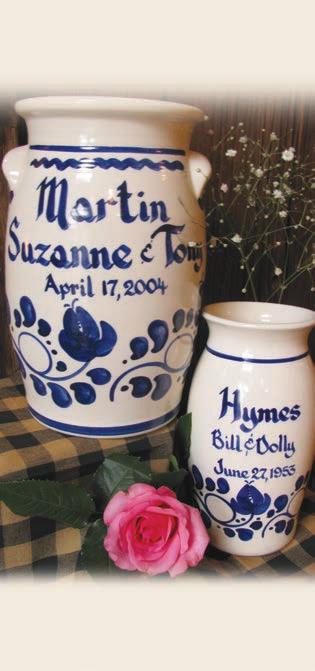
1-800-669-1327
(203) 271-3659
chinaandcrystalrepair.com














Email: dsandassociates@aol.com
jimsbeams .com
02563
Sla-dust The Original All Wool Dry
Handmade in Vermont, this pure Wool Dust Mop is the ecological alternative to disposable chemically-laced pads. The swivel head provides maneuverability for easy cleaning. The new durable Velcro backing allows for quick & easy removal of the dust head from the 12" frame for laundering. With 48" wooden handle. Dusting area measures 11"x18". $32 (plus $7.95 S&H)
Shop online: sladust.com

Slack Mop Company - PO Box 534 - Pittsfield, VT 05762 802-746-8173

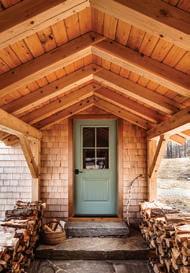

















Online Coupon: YM15 (exp. 12/31/16) #100 Big Wooly










EnergAire continuously purifies up to 4,000 cubic feet (a large room) of air and makes it breathable and invigorating. Restores natural ion balance to unhealthy environments caused by industrial pollution, automobile exhaust, central airconditioning, and heating, smoke, dust, pollen, animal fur. . . removes microscopic pollution particles not removed by any other method of air purification. EnergAire was rated Number One for speed of removal of cigarette smoke by the leading U.S. consumer protection magazine. It has no noisy fan, no costly filter, and requires no maintenance. Uses less than 2 watts. 9" high. 3" diameter. Weighs less than 1 pound. $59.95

RODAR is the super-powerful professional ultrasonic pest repeller with up to 60 or more times the power of other devices — and power is what makes RODAR so effective. RODAR ultrasound equals a jet engine — noise unbearable to pests but at frequencies humans and pets cannot hear. RODAR units are completely safe. RODAR drives pests out and keeps them from getting in. Handsome simulated walnut cabinet 5-5/8 high. Weight 1-1/2 pounds. Uses less than 5 watts. $89.95








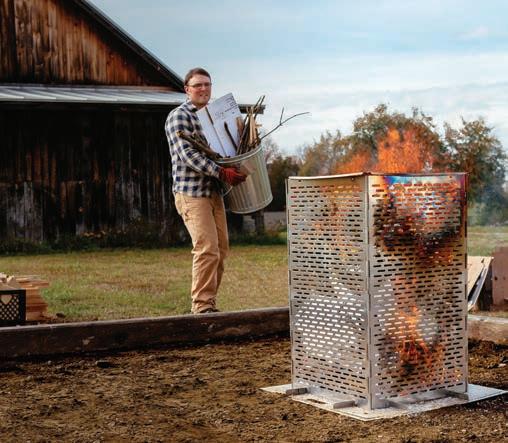
























are handmade using the finest quality ingredients, and are fully cooked before packaging.

are handmade using the finest quality ingredients,and are fully cooked before packaging.




One dozen delicious pierogi are nestled in a tray, making a one pound package of pure enjoyment!
One dozen delicious pierogi are nestled in a tray, making a one pound package of pure enjoyment!

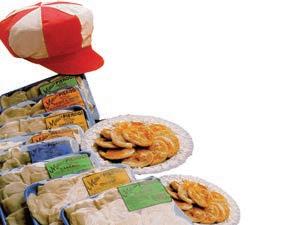
You can get Millie’s Pierogi with these popular fillings:• Cabbage • Potato & Cheese
• Farmer’s Cheese • Blueberry • Prune
• Potato & Cheese with Kielbasa • Potato & Onion
Turns any day into an occasion – order today!
Box of 6 trays-$42 • Box of 10 trays-$63 Polish Picnic-$43.50 • Polish Party Pack-$66 Kapusta & 5 trays–$45.50 • Plus Shipping
Box of 6 trays-$45 • Box of 10 trays-$68 Polish Picnic-$45 • Polish Party Pack-$69 Kapusta & 5 trays–$48 • Plus Shipping
Call toll free or visit our web site: 1-800-743-7641



Call toll free or visit our web site:
1-800-743-7641
1-800-743-7641
www.milliespierogi.com
www.milliespierogi.com
www.milliespierogi.com

129 Broadway
Chicopee Falls,MA 01020
129 Broadway Chicopee Falls, MA 01020
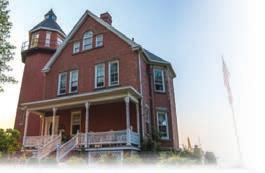

BRASS NAMEPLATES
CUSTOM ENGRAVED BRASS NAMEPLATES. Many styles to choose from. Online ordering available. Visit our website: www.USBrassShop.com
CHINA CRYSTAL SILVER
CHINA, CRYSTAL, SILVER, COLLECTIBLES
World’s largest inventory; vintage and new patterns. FREE item lists. Replacements, Ltd.
800-REPLACE (800-737-5223) www.replacements.com
HELPFUL AIDS
STAIRLIFTS, RESIDENTIAL ELEVATORS, DUMBWAITERS, PLATFORM LIFTS. Free in-home evaluation available. Freedom Lifts. Call today: 888665-4387; www.freedomliftsonline.com
MAINE MAPLE SYRUP
Give the gift everyone loves to receive, Maine Sugarworks pure maple syrup! Family-made in the mountains of western Maine. Call: 207-652-2300. or visit: MaineSugarworks.com
REAL ESTATE
HAMDEN, CT Building Lot Ready - Foundation in place - Build your Dream Home. Horse Trails throughout. Near Sacred Heart U., Quinnipiac U., 5 miles to Yale. $250,000. Call: 203-288-9676
Authentic 1915 Arts and Crafts home. 4,000+ sq. ft, 3 full baths, 1.5 acres. Located atop Grand Hill, privacy & views. leownh@yahoo.com
EXETER, NH, $595,000 21+/- acres, beautiful prime property. Open rolling fields and conservation land. Equestrian/estate setting. Vibrant equestrian community. Minutes to downtown Exeter, 50 minutes to downtown Boston. 617-721-9002 or e-mail: britt@post.harvard.edu
OSSIPEE, NH
Round Deltec home, 4-bay garage, 2-bay barn, solar grid-tie, 22-acre ridge, views, lakes region.
Details: 603-539-9595.
MLS:4258282
SEBASTIAN, FL
Beautiful 55+ community. Voted 2012 “Best of Sebastian.” Manufactured Home Community. New homes starting at $84,900. 4 mi to the ocean.
772-581-0080 • www.beach-cove.com
TO BE REMOVED from Temple, NH.
1770’s Georgian Colonial, 18 x 36 with ell. V. good condition.
Jpeg photos by request to JM, PO Box 143, 03084.
YORK MAINE RIVERFRONT LAND
29.2 acres with 2,360 ft of River frontage. Surveyed & soils tested. Division potential. Suitable for individual or builder. $678,000. Call:207-522-8950
Visit: www.teambozworth.kwrealty.com
UNION, MAINE
$785,000 54+ acresRestored 18th Century Federal ebenezeraldenhouse.com
Jim Ianello - Cates Real Estate 207-701-5600 • jim@catesre.com
173 ACRES
BROWNFIELD, MAINE
6000 sq ft heavy timber/red cedar log home. River frontage, abundant wildlife, 2+ hrs from Boston, 8 miles to regional airport. www.sacoriverranch.com
TRANSFER TO CD your collection of 45’s/33’s/78’s, cassettes and reel-to-reel tapes. Call Alex at 603-905-9123 for pricing. www.theotherguyrec.com
RETIREMENT LIVING
LIFE-CARE RETIREMENT
COMMUNITY in beautiful Lenox, MA. Independent, assisted living, memory care, and skilled nursing care. Spacious apartments, fine dining, numerous amenities, and quality health care. Refundable entrance fees. Come visit Kimball Farms in the Berkshires. Call for our free brochure: 800-283-0061; www.kimballfarms.org
SHUTTERS
COLONIAL SHUTTERS, interior and exterior, raised-panel and louvered. Custom storm/screen doors. Free brochure. Colonial Shutterworks, Mattapoisett, Massachusetts. Call 888-295-0732; www.colonialshutterworks.com
For furniture, daybeds, chairs, futons, ottomans, fabrics, cushions, pet covers. All shapes. Made in USA! 888-405-4758 • www.slipcovershop.com
KIAWAH ISLAND, SOUTH CAROLINA. Select 1- to 10-bedroom accommodations. Pam Harrington Exclusives. Call today: 800-845-6966 for a complimentary brochure; or visit www.kiawahexclusives.com
To advertise please call Bernie Gallagher at 203-263-7171
MAINE LAKE/MOUNTAINS. Modern cabins on Lake Kennebago. Includes 3 hearty meals. Perfect family vacation. Swimming, fishing, boating, nature hikes. Pets welcome. 800-633-4815
www.grantscamps.com
VACATION RENTALS
PLEASE NOTE
CHATHAM, CAPE COD
9-Bedroom Estate. Sleeps 18. Ocean Views. Great for Weddings, Friends & Family Reunions. Booking Now! Available year-round. Call John: 617-799-5818
e-mail: john@oldeforgerealty.com
AUTHENTIC NH VACATIONS
New Hampshire’s Lakes Region For Over 35 Years!
Private Vacation Homes
Cottages - Condos - Camps Free brochure available.
Preferred Vacation Rentals 34 Whittier Hwy. Moultonborough, NH 03254 877-525-3764
www.PreferredRentals.com
SOUTH CAROLINA
LAKE MARION HAS IT ALL Vacation Rentals
Real Estate Sales
Waterfront Properties
Gated Community Golf Course Homes
Boating & Fishing Hiking Trails
Resorts & Restaurants or Just Relax!
Call: 803-433-7355 or
Visit: www.remaxbythelake.com
WANTED TO BUY
BUYING OLD Hi-Fi & Stereo tube audio amplifiers made by Scott, Fisher, Marantz, Mcintosh, Dynakit, Heathkit, etc. Need vacuum tubes, old microphones, and Western Electric/Bell System items. 203-272-6030 or email: Larry2942@cox.net
Visits your home...
Traveling New England, paying highest prices for entire collections of coins, stamps, paper money, gold, silver, fine jewelry, and Tiffany. Complete privacy and safety of your own home.
Payment in full on the spot. Call Anthony’s: 800-427-9897
Established 1958
know this to be true: If Jud (“with one D,” he reminds everyone) Hale, Yankee’ s editor-in-chief, had gotten wind that we were putting him here as New England’s final gift to America, he’d stand in the doorway and shake his head “no.” He is New England to the core, and to Jud, a public tribute would be as uncomfortable as a hug, and as his family knows, hugs make him scratchy. And because he’s the one who brought me here 36 years ago, and because he nurtured not only my writing but the work of so many others—too many to name in this cramped space—I rarely go against what he feels is best for the magazine. So I hid this page from him, and nobody spoke a word of it, even the photographer, who made up a story about why we wanted a new photo.
Neither a magazine nor its editor is essential to the well-being of a populace in the way that doctors, nurses, teachers, farmers, and tradesmen might be. A magazine neither feeds nor clothes nor warms us. I suppose every person reading these words could get along in the world just fine without Yankee. But Jud filled his magazine with who he was and what he cared about, and in doing
so, made this region come alive for readers across the country, many of whom had never even been here, but through Yankee felt that they belonged. Jud made sure that his magazine told stories that mattered, whether humorous or dramatic, even sometimes shocking and tragic. Through those stories he made a region feel human, real, something to yearn for. Connected to a past that belonged to everyone. When readers plucked Yankee from their mailboxes, they felt that a friend was stepping inside with them. Someone to keep them company, chat a bit, share some coffee cake, swap a story or two. Life simply became brighter, because Jud’s magazine had arrived.
As he has for 57 years, he comes through the door each day carrying a wicker basket of untold age; in it he has placed manuscripts, newspapers, his mail, and, lately, a filled coffee mug, resting precariously inside amid the paper, so that his hand is free to hold lightly to the railing along stairs that have become trickier for more than a few of us these days. Time rolls by. As anywhere, staffers here come and eventually go. But the one who mattered most came and stayed. Still the editor. Still the chief.
 —Mel Allen
—Mel Allen
The Pelatiah Leete House is one of the earliest surviving dwellings built in Guilford, CT in the early 18th century, by Pelatiah Leete, the grandson of Guilford founder, and Connecticut governor, William Leete. It is one of only a handful of properties in Guilford that is included on the National Register of Historic Places. In 1781, during the American Revolution, the Battle of Leetes Island was fought across the road from the house and its surviving 1705 barn, and Simeon Leete, who lived in the house at that time with his wife and three small children, was mortally wounded near the conclusion of the battle. He was brought back to the house, where he died, at age 28, the following day. His gravestone is around the corner from the house, on land owned by the Leete family since 1661, and an annual celebration of his life is held every June on the Sunday nearest June 19, the anniversary of his death date. The Sixth Connecticut Regiment of the Continental Line performs musket drills and live firing at the event, which draws numerous neighbors and townspeople.



AUTHENTIC COLOURS crafted by masters of 18th and 19th Century color fidelity - fifth generation paintmakers. The Old Village paint craftsmen create the authentic colors that simply cannot be matched by a mass production process or by guessing and mixing. Old Village Paints are of superb quality, using natural earth pigments from around the world, as well as the heartland of America.

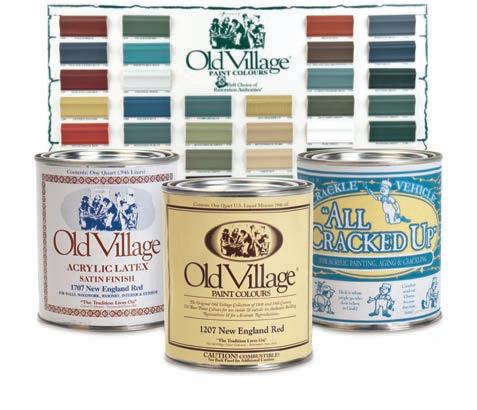
P.O. Box 130
• Perkiomenville PA 18074


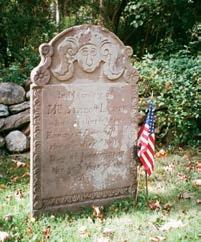
Email: info@old-village.com

Tel: 215-256-0077 • Fax: 215-256-0022
Toll Free: 800-498-7687 | www.old-village.com

